
- Trip Finder
- Newsletter Signup
- Request a Call
- Crete Sea to Summit
- Best of the Swiss Alps
- Exploring The Jungfrau
- Italian Dolomites
- Best of the French Alps
- St Moritz to Italy
- Exploring Croatia
- Italian Lakes Discovery
- Best of Slovenia and the Julian Alps
- Tour of the Giants
- Italian Dolomites Alta Via 1
- Chamonix-Zermatt Haute Route
- Deluxe Haute Route
- Deluxe Tour du Mont Blanc
- Via Alpina - Swiss Alpine Route
- Deluxe Bernese Oberland Traverse
- Eiger to the Matterhorn
- England Coast to Coast
- Scenic Alps by Rail
- Cheese, Chocolate, & the Alps
- Self-Guided - Scenic Alps by Rail
- Self-Guided- Glacier Express
- Christmas in Switzerland
- Scenic Alps by Rail - Christmas Edition
- Self-Guided Haute Route
- Self-Guided Tour du Mont Blanc
- Self-Guided Jungfrau
- Self-Guided Via Alpina
- Self-Guided Bernese Oberland Traverse
- Self-Guided Eiger to the Matterhorn
- Self-Guided Swiss Alps
- Self-Guided Austria Zillertal Alps
- Private Guided and Custom Trips
- Appenzell -Alpstein Range
- Zermatt and the Matterhorn
- Leukerbad -Thermal Hot Springs
- Principality of Liechtenstein
- Saas-Fee - Pearl of the Alps
- Tour Calendar
- Where We Stay
- How We Travel
- FAQ – Alpenwild Experience
- FAQ - Tour du Mont Blanc
- FAQ - Haute Route
- FAQ - Alps Hiking Tours
- FAQ- Scenic Alps by Rail Tour
- A Self-Guided Tour FAQ
- Self-Guided FAQ - Haute Route
- Self-Guided FAQ - Tour du Mont Blanc
- Self-Guided FAQ - Rail Tours
- Travel Agents + Alpenwild
- Why You'll Love The Alps
- Packing List – Alps Trekking Tours
- Packing List – Alps Hiking Tours
- Packing List – Alps Walking and Sightseeing Tours
- Packing List - Winter Tours- Christmas in Switzerland
- Weather In The Alps
- Haute Route Essentials
- Tour du Mont Blanc Essentials
- Is a Self-Guided Trip for me?
- Car Travel in Switzerland
- Maps & Books
- Book Your Trip
- Make a Payment
- Sustainability Commitment
- Why Choose Alpenwild
- The Alpenwild Story
- Guides and Trip Leaders

The best time of year to hike the Tour du Mont Blanc (TMB)

Planning a European Alps adventure can be challenging — after all, each season offers something unique! In winter, the Alps become a playground for skiers and snowshoers, but in summer, the world-renowned trekking season begins. So if you’re wondering when you should go on the Tour du Mont Blanc (TMB), you’ll want to find a time slot between mid-June and mid-September.
Why? If you go earlier than June, large amounts of snow remain on the trails and make it dangerous to cross cols. And while the weather is often lovely all the way into October, many lifts and mountains close after the peak season ends.
Here’s a guide that will help you decide which summer month is best for your TMB adventure.
Best time to see alpine flowers on the TMB
Three-quarters of Europe’s vascular plant species grow in the Alps, and around 400 species are endemic to the region. So if you’re interested in botany, you really couldn’t come to a better place!
You can spot alpine flowers from March all the way into October, but spring offers the greatest diversity. From mid-June to mid-July, there is a crossover of the spring plants (which are coming to the end of their flowering cycle) and the summer plants (which are beginning to bloom).
Discover our spring Tour du Mont Blanc trips

Best time for warm weather on the TMB
July and August are the hottest months of the year. In July, the average temperature is between 13 and 26C (55 – 79F). August is slightly cooler with average temperatures of 12-26C (53-79F).
If you prefer hiking in cool weather, then you may find a trip in June or September more comfortable.
Although rainfall average is similar between June and September, mountain weather is incredibly unpredictable. We recommend bringing rain gear at any time of year. See our Alps Trekking Packing List .
Discover our summer Tour du Mont Blanc trips

Best time to beat the crowds on the TMB
Coinciding with European summer holidays, mid-July to mid-August is peak season. If you want to beat the crowds, then hike the TMB between mid-June and mid-July or in September. In peak season, accommodation goes fast, so make sure you plan your trip well ahead (maybe even a year in advance!).
Discover our spring and Autumn Tour du Mont Blanc Trips

- Recent Posts

- Haute Route Q&A - May 31, 2019
- Saint Luc: Highlights of the Haute Route - May 23, 2019
- Are hiking poles worth the purchase? - May 18, 2019
Interested in reading more content like this? Click subscribe to receive an email when a new post is published.
10 Replies to “The best time of year to hike the Tour du Mont Blanc (TMB)”
You may find this recent post useful which I will be keeping updated this summer with trail conditions on the TMB – https://alpenwild.com/Alpshiking/trail-conditions-and-snow-conditions-on-the-tour-du-mont-blanc/
Hi Susanna, sorry for my late reply! I see you are starting your tour today! Lovely weather for it! From what I’ve heard from my guide friends you won’t need crampons as the snow is nice and soft with a big track in the main cols. However, I’d suggest some sturdy boots you can kick steps into the snow if you need to. If you are a little unsteady on the snow then microspikes will make a big difference and they’re much lighter than crampons. Have a wonderful time! Jen
Hi Andy! Thanks for your message! August is quite a busy time of year but the mid/end of August is generally busier than the start as there are a few ultra marathons taking place. The weather is lovely in August – hot and generally stable with odd afternoon storms so pack for hot weather but be sure to take water proofs! Have a great trip! Jen
Thanks for your message! Glad the updates are helpful! I haven’t been over that way recently sorry so I can’t comment on the conditions right now. The majority of tour operators start mid June so I will hear better updates from my fellow guides in a couple of weeks and will post them up when I have them. I imagine the col du bonhomme and col des fours are still very snowy, but in a months time the trail conditions will be very different and my feeling is that it should be ok.
However, remember to always consider avalanche risk from above. Even if the path is clear, snowy slopes above could threaten your route.
Keep your eye on this post and also on the TMB website for updates – you will start to hear a lot more about route conditions from mid June as guided trips start happening. You will be in good company on the route at the end of June and so there should be lots of guides around to speak to and also refuge wardens. The key is to collect as much information as possible (which it sounds like you’re doing) and err on the side of caution =)
Have an awesome trip!
Thank you for your message. I work during the summer season for Alpenwild, they are an American trekking company specialising in luxury trekking holidays in the Alps. One of the reasons I chose to work for them is that they are a really friendly company and their standard of accomodation is the best you will find on the Tour du Mont Blanc or other famous alpine treks. If you want to find out more about their trips then here is the link:
https://www.alpenwild.com/trip/tour-du-mont-blanc/overview/
I hope that helps
Thanks for your message. Aaron and Kelsey have asked the same and so I hope you don’t me copying my reply to them below:
Although we had a lot of snow last winter, it does seem to be melting quite well and if it warms up over the next couple of weeks we will see a lot more melt. I haven’t been out on the main trails for the TMB yet, but other guides who I am in touch with have told me that there is still snow on the grand col feret, col de balme and lots of snow at the back of Brevent. Near bovine from col de forclaz there is still snow and so you would need to take care as the path involves a steep snowy traverse. With crampons and poles you should be ok, but it depends a lot on your ability and experience travelling over snow. (Also in two weeks a lot of that could have melted if it warms up again). If you are in any doubt then ask hut guardians before you set out for the day or hire a guide if you are not that confident. It’s always worth bearing in mind any avalanche risk from above, especially in the val ferret.
A really good website to use is this one – http://www.autourdumontblanc.com/en/index.cfm/tmb-trails-conditions.html
It has information on trail conditions along the route and some web cam images to give you an idea of what the trails are looking like.
I hope that helps!
Have fun, it’s an awesome hike!
Thank you for your message – I have been asked this by Aaron too and so I will copy my reply to him below:
Although we had a lot of snow last winter, it does seem to be melting quite well. I haven’t been out on the main trails for the TMB yet, but other guides who I am in touch with have told me that there is still snow on the grand col feret, col de balme and lots of snow at the back of Brevent. Near bovine from col de forclaz there is still snow and so you would need to take care as the path involves a steep snowy traverse. With crampons and poles you should be ok, but it depends a lot on your ability and experience travelling over snow. If you are in any doubt then ask hut guardians before you set out for the day or hire a guide if you are not that confident. It’s always worth bearing in mind any avalanche risk from above, especially in the val ferret.
Hi Thomas, thanks for your message. As we had quite a snowy winter I expect there will be visible snow on the mountain in mid July and some short sections of snow to walk across. We are having a very warm spring so far though so a lot of the snow is melting very fast and I don’t expect snow will cause a problem with walking on the trails in mid July. I hope that helps! Jen
Hi Brenda! Our trip in September with the cold weather was right at the end of the month and it was very unusual weather for that time of year! Infact the lead guide, Chloe commented it was some of the worst weather she had hiked in all her years as a guide in the Alps!
We can’t guarantee the weather (especially in the moutains!) but generally the start of September is a really nice time to head out. It’s much quieter than in the middle of summer and the temperature is very pleasant and similar to June.
There won’t be as many flowers in September as the start of summer and so it depends if your priority is seeing more flora or hiking with less people on the trails.
Let me know if you have any other questions =)
Comments are closed.
Blog Categories
- Sightseeing and Exploring
- Wildlife and Nature
- The Via Alpina Hiking Trail Archives
- Snowshoeing
- October 2023
- August 2023
- January 2023
- November 2022
- January 2022
- November 2021
- October 2021
- September 2021
- February 2021
- January 2021
- December 2020
- November 2020
- October 2020
- September 2020
- August 2020
- February 2020
- January 2020
- December 2019
- November 2019
- October 2019
- September 2019
- August 2019
- February 2019
- January 2019
- December 2018
- November 2018
- October 2018
- September 2018
- August 2018
- February 2018
- January 2018
Sign Up for Our Email Newsletter
Stay up to date on the latest Alpenwild news. You're free to opt out at any time.
See our Privacy Policy.
Create an account
Start your adventure today.
Already a member? Login

Best Time to Hike the Tour du Mont Blanc
Quick navigation.
- Season-by-season breakdown
- Month-by-month breakdown
Planning the rest of your Tour du Mont Blanc adventure
Tour du mont blanc articles, join our newsletter.
Get a weekly dose of discounts and inspiration for adventure lovers
Mont Blanc's scenery evolves from a wildflower spectacle to a magical winter wonderland throughout the seasons, transforming from an "easier" (for lack of a better word) trek to a more technical adventure. With such a diverse and ever-changing range of scenery to experience, many people wonder when exactly the best time is to hike the Tour du Mont Blanc.
To sum it up, the best time to hike the Tour du Mont Blanc is during the summer months, when warmer weather and more verdant, colourful, and untouched highlights paint the route with a myriad of colours. The downside to hiking during this time are the busier trails and higher chance of afternoon showers; a small price to pay for the picturesque scenery along the trail!
Continue reading to find a month-by-month breakdown of the best time to hike Mont Blanc—pick the time that suits your trekking style, skill and fitness level most, and off you go!

The best time to do the Tour du Mont Blanc: Season-by-season
Let's take a deeper look at the best time to hike the Tour du Mont Blanc!
The best time to hike the Tour du Mont Blanc is between June and September. July and August are peak months, meaning a busier trail but fantastic weather. Mont Blanc's summer months boast lush greenery cloaked with wildflowers, attracting a range of adventurers. However, the pretty scenery comes with a price— congested trails and accommodation can be tough to book. Side note: our article on booking accommodation for the Tour du Mont Blanc grants insight into hotels, hostels, and camping en route.
However, trail congestion remains relatively low during the shoulder months—June and September—but the weather may be more unpredictable. Expect lingering snow even in late June!
To be safe, if you're seeking a less technical trek or haven't gone on too many trekking trips, we suggest tackling the Tour du Mont Blanc in July and August—it may be busy, but the colourful, wild scenery creates the perfect distraction.
Prepare for an average of 2.4-2.75 inches of rain a day. Not sure what to bring for clothes? Our Tour du Mont Blanc packing list article unveils the necessities in detail.

Tour du Mont Blanc - The best time to hike is between June and September
September is one of the best months to complete the incredible Tour du Mont Blanc! However, similar to hiking in June, the moody weather propels a need to diligently prepare for your Mont Blanc trek . Most mountain huts remain open until mid-September, making it easier to book accommodation once all the families have settled back in their homes. October and November bring not-so-great conditions, such as shorter sunlight hours, cooler temperatures, and closed mountain huts.
Hiking in November requires more intense gear to combat the chillier conditions sweeping the wild scenery. But the mists of snow in November grant a magical setting!

September is one of the best months to complete the incredible Tour du Mont Blanc
Some intrepid explorers considering a winter adventure may want to think again. The conditions can be pretty dangerous, especially amid a never-ending biting cold. Of course, you can pair your walking adventure with skiing, but anyone considering hiking Mont Blanc between December and February should be well-trained experts! Even experienced snowshoers, skiers, hikers should consider booking a guide in case an emergency were to arise.
What usually accompanies winter? Snow! You'll probably experience an average of 2.5-4 inches of snow and temperatures ranging from -2°C to -8°C.
Spring is an exciting time for outdoor enthusiasts: the earlier months continue to provide fantastic skiing conditions while the snow melts, unveiling glimpses of the trails carved throughout Mont Blanc. We recommended staying away from hiking the Tour du Mont Blanc during March and April due to avalanche risk, melting snow, and cooler temperatures requiring more hardcore gear. Downhill skiers tend to enjoy these months—but this article isn't about skiing Mont Blanc, is it? The temperature increases in May, but the soggy trails aren't great for hiking.

Tour du Mont Blanc - fantastic skiing conditions in the earlt months of spring
Best time to visit Mont Blanc month-by-month breakdown
Still not sure when to go? Our month-by-month breakdown provides a deeper analysis of the best time to visit Mont Blanc.
Expect quieter trails with lower rainfall, but we still recommend looking into booking refugees, despite fewer people crowding the paths. Average Temperature: High 24℃/Low 11℃ Average Rainfall: 70mm
With schools out for the summer and people on holidays, the trails can get super busy! There's a little less rain in July compared to June, with a slight spike in temperature. Average Temperature: High 26℃/Low 13℃ Average Rainfall: 60mm

When is the best time to hike Tour du Mont Blanc - Beautiful valleys and rugged mountains surrounding the trail
August is basically the same as July, but with a minor increase in average rainfall. Either way, it's essential to pack rain gear for all summer months! Average Temperature: High 26℃/Low 12℃ Average Rainfall: 70mm
The weather may dip during September, but it remains pleasant! Plus, the summer crowds have dissipated, making for a quieter, scenic adventure. Even average rainfall drops ever-so-slightly from August! Plus, mountain huts tend to remain open until mid-September. Average Temperature: High 21℃/Low 9℃ Average Rainfall: 60mm

The weather may dip during September, but it remains pleasant
With most mountain huts closed until June, less sunlight, and more rain, October may not be the best month to attempt the Tour du Mont Blanc. However, the autumn colours painting the scenery really bring the true wonder of this epic long-distance route to life. Average Temperature: High 17℃/Low 5℃ Average Rainfall: 75mm
Thinking of hiking in November? Look into high-end winter gear that can keep you warm and cozy amid the mountain air. Snow also sprinkles across the land, creating cold and brisk temperatures. Average Temperature: High 10℃/Low 0℃ Average Rainfall: 80mm
Welcome to winter! Expect a blanket of snow, causing more technicalities along the trail. Therefore, we recommend only hiking the Tour du Mont Blanc with a guide during the winter. Average Temperature: High 6℃/Low -3℃ Average Snowfall: 90mm
While it's not advised to hike the entire Tour du Mont Blanc during winter, you can always use the snow to your advantage and snowshoe a section! Average Temperature: High 6℃/Low -3℃ Average Snowfall: 100mm
We would recommend avoiding exploring Mont Blanc during February! There are a lot of technicalities and snow. If you're bent on heading out in February, only consider going with a guide. Average Temperature: High 8℃/Low -2℃ Average Snowfall: 70mm
Ah, the bliss of spring! It's always nice escaping February, isn't it? Unfortunately, with melting snow comes avalanches. Maybe hold off on hiking the Tour du Mont Blanc for a short while longer due to the crazy weather! Average Temperature: High 8℃/Low -2℃ Average Snowfall: 70mm
While skiers still dominate Mont Blanc in April, the melting snow paired with lovely fauna makes for a stunning scene. However, we would still recommend keeping your hiking boots on your shelf as avalanches are still very much a thing during April. On the flip side, melting snow means a temperature increase! Average Temperature: High 15℃/Low 3℃ Average Snowfall: 50mm

Avalanches are still very much a thing during April
Dust off those hiking shoes! Although avalanche risk is still high, you'll still find some people exploring the area during May. Summer is still the best time to hike the Tour du Mont Blanc, but there may be some spots worth checking out for the day during May—you could explore trails around Chamonix, for example. Average Temperature: High 21℃/Low 9℃ Average Snowfall: 70mm

When is the best time to hike tour du mont blanc - Tour du Mont Blanc offers fantastic Alpine scenery
Now that you know the best time to hike, you can start looking into Tour du Mont Blanc tours or start booking and looking into accommodations if you're planning your trip. For even more information, check out extensive guide on Tour du Mont Blanc , which gives a broad view of the entire experience.
Hiking the Tour du Mont Blanc is no easy feat, making it essential to do whatever you can to pick the right time to go, come prepared, and pack the right things. If you have any questions, you can always reach out to us, and we will happily answer any inquiries you may have!
Check out our series of articles planning an incredible Tour du Mont Blanc!
- Complete Guide to the Tour du Mont Blanc
- How long does it take to hike the Tour du Mont Blanc?
- How to Prepare for the Tour du Mont Blanc
- Packing List for the Tour du Mont Blanc
- Where to Stay on the Tour du Mont Blanc
- When to hike the TMB?
- Frequently Asked Questions about the Tour du Mont Blanc
- 10 Interesting Facts about the TMB
Top Destinations
Tour activities, top regions, get travel inspiration and discounts.
Join our weekly travel newsletter
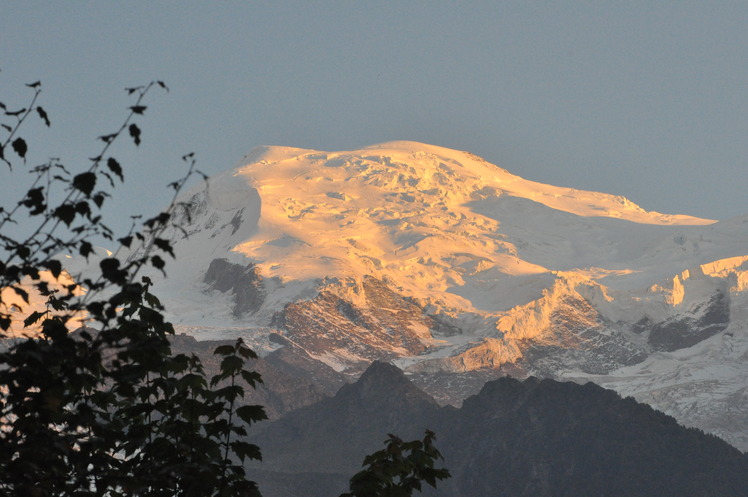
Mont Blanc Weather Forecast, France Issued: 1 am Wed 04 Sep Local Time Updates in: hr min s Update imminent

- Weather Map
- Mountain Info
- Climbing Notes (15)
- Photos (40)
- Peak: 4807 m
- Mid: 3000 m
- Base: 1000 m
Mont Blanc Weather (Days 0-3):
The weather forecast for Mont Blanc is: A heavy fall of snow, heaviest during Thu morning. Temperatures will be below freezing (max -4°C on Fri night, min -9°C on Thu afternoon). Winds decreasing (fresh winds from the SE on Thu morning, light winds from the S by Thu night).
Mont Blanc Weather (Days 3-6):
A heavy fall of snow, heaviest during Mon morning. Temperatures will be below freezing (max -4°C on Sat morning, min -11°C on Mon afternoon). Winds decreasing (fresh winds from the SSW on Sun morning, light winds from the S by Mon night).
This table gives the weather forecast for Mont Blanc at the specific elevation of 4807 m. Our advanced weather models allow us to provide distinct weather forecasts for several elevations of Mont Blanc. To see the weather forecasts for the other elevations, use the tab navigation above the table. For a wider overview of the weather, consult the Weather Map of France .
Live conditions reported by 5 closest weather stations
* NOTE: not all weather observatories update at the same frequency which is the reason why some locations may show data from stations that are further away than known closer ones.
Mont Blanc Photos
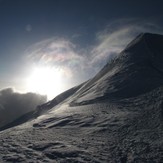
Mont Blanc massif

Mont Blanc in sunset

Mount Blanc massif
- Download the app
- Cookie Policy
- Privacy Settings
- Do Not Sell My Personal Information
- Mountain Ranges
- Dynamic Weather Maps
- Static Weather Maps
- Mountain Photos
© 2024 Meteo365.com

- Best Hikes In The World
- Appalachian Trail
- European Hikes
- Nepal Hikes
- Patagonia Hikes
- See All Hikes
- Mount Kenya
- Mount Kilimanjaro
- Mount Toubkal
- See All Mountains
- South Africa
- New Zealand
- Switzerland
- United Kingdom
- Packing Lists
Tour du Mont Blanc (Expert Guide)
Europe , France , Hikes , Italy , Mountains , Switzerland
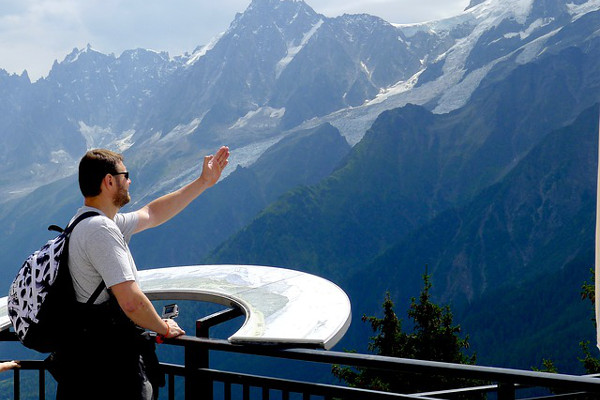
The Tour du Mont Blanc is one of the most popular treks in Europe. It covers a distance of roughly 170 kilometres and gains more than 10,000 meters of altitude over 11 stages.
In this guide we cover: what weather to expect and the best time to hike the Tour du Mont Blanc, which huts to book, what gear you might need, and much more...
Join a Tour du Mont Blanc Highlights Hike
Book with our recommended local guide
Tour du Mont Blanc
Route overview.
The Tour du Mont Blanc covers a distance of roughly 170 kilometres and gains more than 10,000 meters of altitude over 11 stages. Most people start their hike in Les Houches, France going in an anti-clockwise direction.
During this trek you will hike in the French, Italian and Swiss Alps and spend the night in mountain huts. This is one of Europe's best hikes and is a classic alpine trek. On the hike you will get splendid views of some of the highest mountains in Western Europe, as well as glaciers and alpine meadows.
The highest point reached is 2,665 meters.
The hike passes seven valleys along the way, which means there is a lot of altitude to be gained, making the Tour du Mont Blanc a physical challenge.
Fortunately, walkers are rewarded with some of the best views you can get of Mont Blanc . The route is not only one of the most beautiful long-distance treks in Europe (up there with the Walker's Haute Route ), but one of the most popular ones as well.
Nights can be spent in either mountain huts along the route or back in the valley, where you can have the luxury of a warm bed in a hotel.
What we like and dislike about the hike
- Incredible views of the Mont Blanc massif
- Hike in three countries
- Visit the beautiful villages of Chamonix and Courmayeur along the way
- Spend the night in some of Europe's most iconic mountain huts
- More expensive than other treks in Europe due to the cost of mountain huts
- Physically challenging
- Can be crowded during the summer months
Join the full Tour du Mont Blanc Hike (10-Days)
Tour du mont blanc circuit.
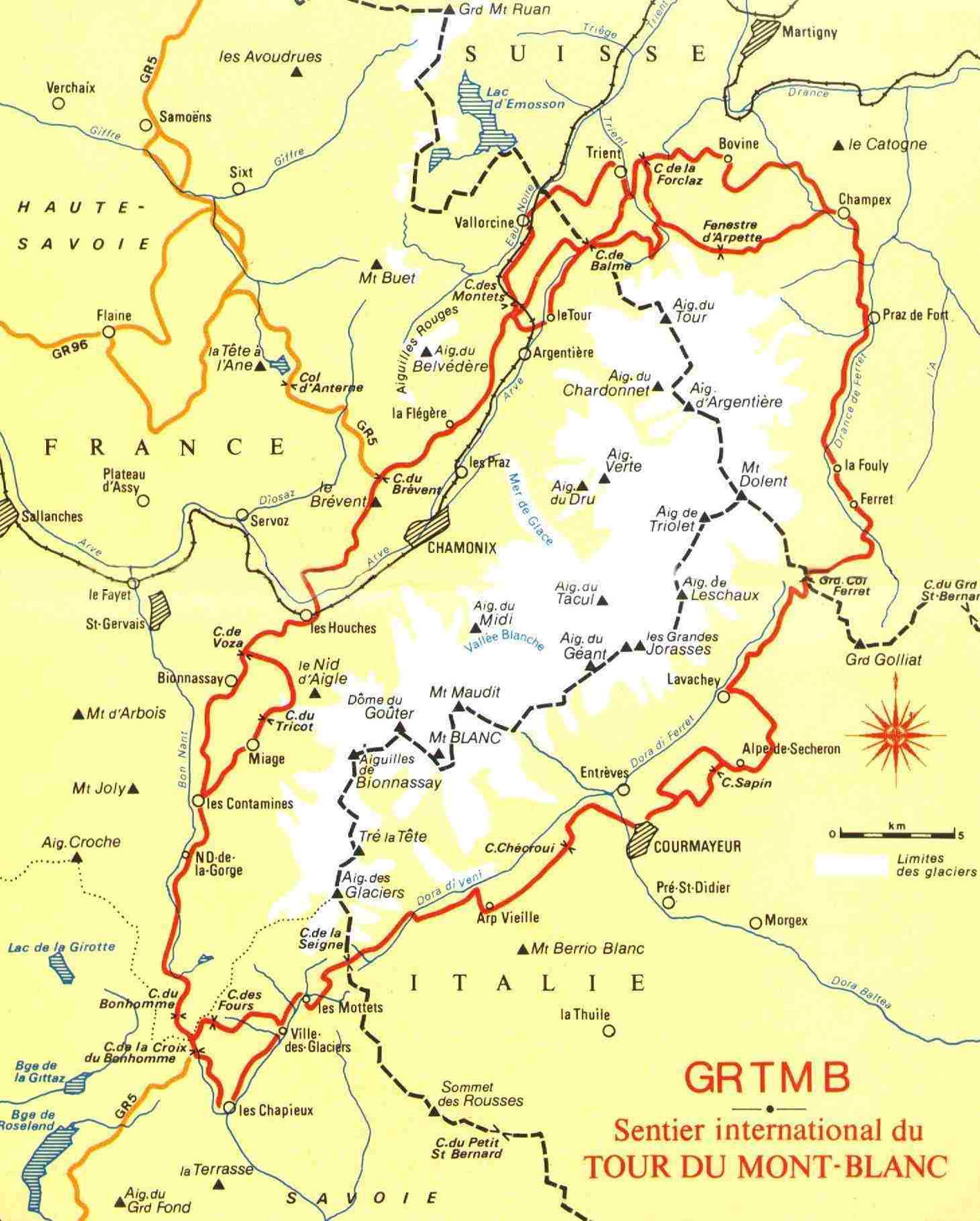
Source: chamonix.net
This map illustrates the Tour du Mont Blanc route. It starts off at Les Houches, France close to the Swiss and Italian border before heading west towards the Italian side of Mont Blanc.
There are 11 stages depending on your physical level. The route is circular around the Mont Blanc Massif, crossing the borders of France, Switzerland and Italy.
In terms of a trekking map we recommend:
- Chamonix, Mont-Blanc ~ IGN Top25 3630OT 2012 (English and French Edition)
And in terms of a trekking guide we highly recommend:
- Cicerone's The Tour du Mont Blanc: Complete two-way trekking guide
Altitude Profile
In the chart below you see the altitude profile of the full hike. It is quite clear there is a lot of altitude to be gained over the 11 stages, with the highest point reached just above 2500 meters. You can see that there are a few strenuous stages reaching high mountain passes that will require great effort.

Mont Blanc Route Itinerary
Below we have laid out the most popular version of the Tour du Mont Blanc Route – 11 days, starting and finishing in Les Houches. The itinerary includes approx. distances, hiking times and elevation changes.
Day 1: Les Houches – Les Contamines
Distance: 16 km Ascent: 646m Descent: 633m Hiking time: 5hrs
Easy first stage along, this is the most roadway you will see during the trek. The best views are to be seen at Col de Voza, where you get a look at Dome du Gouter and Aiguille de Bionnasay, with the glacier splitting it in half.
Day 2: Les Contamines – Les Chapieux
Distance: 18 km Change in elevation: 1316m+, 929m- Hiking time: 7.5hrs
A bit tougher than the first stage. Especially, since there is quite some altitude to be gained and distance covered.
Day 3: Les Chapieux – Rifugio Elisabetta
Distance: 15 km Change in elevation: 1004m+, 258m- Hiking time: 4.5hrs
This is the day you will leave France and enter Italy via Col de la Seigne. Despite being a short day, there still is some elevation to be gained as you will pass Col de la Seigne. At the highest point, you will gain some great views of both France and Italy and gaze into Val Veni. This is the first night you will spend in a mountain hut.
Day 4: Rifugio Elisabetta – Courmayeur
Distance: 18 km Change in elevation: 460m+, 1560m- Hiking time: 5hrs
Another short day, since you will mainly be descending. Still, some great views will be shared before reaching Courmayeur, the Italian equivalent of Chamonix.
Day 5: Courmayeur– Rifugio Bonatti
Distance: 12 km Change in elevation: 860m+, 101m- Hiking time: 4.5hrs
Often described as the most scenic stage of the Tour du Mont Blanc. With views on the glaciers of Planpincieux and Frebouze it’s not hard to see why. The high route along the Mont de la Saxe Crest is thought of as one of the best viewpoints of the southside of the Mont Blanc.
Day 6: Rifugio Bonatti – La Fouly
Distance: 20 km Change in elevation: 895+, 1410m- Hiking time: 6.5hrs
Today will cross another border and enter Switzerland. Cowbells and tiny villages that have been stuck in time are your scenery for the next few days.
Day 7: La Fouly - Champex
Distance: 15 km Change in elevation: 420m+, 565m- Hiking time: 4hrs
This probably is the easiest stage of the Tour du Mont Blanc since there are no cols to be conquered. This stage mainly is a valley trek with some great charming villages along the way. However impressive views of the mountains remain.
Day 8: Champex – Col de la Forclaz
Distance: 16 km Change in elevation: 742m+, 682m- Hiking time: 4.5hrs
There are two ways to reach Col de la Forclaz. A lower route via Alp Bovine, or the more scenic and higher route along the Trient Glacier. This latter passes the Fenetre d’Arpette, the highest point on the Tour du Mont Blanc, and should only be considered in good weather.
Day 9: Col de la Forclaz – Tre le Champ
Distance: 13 km Change in elevation: 1069m+, 1168m- Hiking time: 5.5hrs
From this point you re-enter France via Col de Balme. A lot of elevation is to be gained and lost, which makes the stage a strenuous one.
Day 10: Tre le Champ – Refuge Flegere
Distance: 8 km Change in elevation: 733m+, 257m- Hiking time: 3.5hrs
Short stage, but with some ascent. You will spend another night in a mountain hut. Refuge Flegere offers great views and is a perfect last night in the mountains before arriving in Les Houches the next day. There are some ladders to be climbed before reaching the refuge however.
Day 11: Refuge Flegere – Les Houches
Distance: 17 km Change in elevation: 772m+, 1546m- Hiking time: 6.5hrs
This last stage of the Tour du Mont Blanc goes along Le Brevent in the Aiguille Rouge. There are some splendid views of the Chamonix Valley before finally descending and arriving back in Les Houches.
Video Overview
A beautiful video overview, filmed with a GoPro, of the Tour du Mont Blanc by Eugenio psnt .
Join a Tour du Mont Blanc Hike
Frequently asked questions, how much does the tour du mont blanc trek cost.
The cost of the Tour du Mont Blanc trek is dependent on whether you plan to do a self-guided hike or join a planned tour. Self guided hikes cost in the region of $1500 (estimate of $50-$75 dollars a day). Most mountain huts / gites are around $50 (incl. breakfast).
Guided trekking tours can be quite expensive since not only do you pay for the guiding service, but you eat and spend most nights in hotels or mountain huts. This mostly includes a luggage transfer to your next accommodation as well, so you can hike with a small backpack. Guided tours range from $2000-$3500, depending on the company / season / size of the group.
Self guided is the cheaper option, however, it does mean you carry more weight in your backpack and some planning of logistics in the weeks / months before.
Are permits required for the Tour du Mont Blanc trek?
No permits are required for the Tour du Mont Blanc trek.
When is the best time to trek the Tour du Mont Blanc Route?
The best time to trek the Tour du Mont Blanc is between July-September, but exact start and end dates depend on the amount and timing of the previous winter’s snowfall and the onset of cold weather in the Autumn.
Since the Tour du Mont Blanc crosses high passes, snow could create problems / dangerous conditions. Therefore in a normal year it is not advisable to set out before July. In the summer months, mid-July through to end of August, are the busiest, and temperatures during the day can rise to 25 degrees. Nonetheless, thunderstorms or a dump of snow is possible as well.
By the end of September, huts will close and it might get a lot harder to complete the trek.
Is altitude sickness a risk?
No, you will cross passes slightly higher than 2500 meter and since you’re hiking slowly to this altitude, you have more than sufficient time to acclimatize. Most people don’t feel any symptoms of altitude sickness before reaching 3000-3500 meter.
How difficult is the Tour du Mont Blanc trek?
Hiking the Tour du Mont Blanc comes with great rewards. Rewards that will be more easily gathered when physically fit and mentally attuned. There are many steep and uphill sections to conquer, so exercising regularly at home before the trek is necessary to get in shape for the physical demands of this route. Mental fitness is as important and often go hand in hand.
The Tour du Mont Blanc is doable for any fit mountain walkers who are able to hike between 5h and 7h30 min per day for several days in a row.
If you are finding the trek tough there are a few sections where you can use public transport to shorten your hike.
What gear do I need?
To do a serious trek like the Tour du Mont Blanc, appropriate clothing and equipment is a must.
Some comfortable lightweight trekking boots are a must to enjoy this trek, while good waterproofs might be essential, not only to protect you against rain or snowfall but to double as wind-proofs. Since you’ll be crossing passes of more than 2500 meters, gloves and several layers will prove useful. Trekking poles are a good way to not overload your knees and ankles
To help you plan and prepare for your trek we recommend our Tour du Mont Blanc packing list .
What travel insurance do I need?
Trekking insurance is important when going into the mountains. See our article on insurance for more information.
Do I have to carry my own gear all the way?
It’s up to you. There are many organisations offering guided trips for this hike, meaning they do all the logistics for you. This often includes a luggage transfer to your next accommodation in the valley, so you only need to carry a small backpack with some lunch, snacks and clothes.
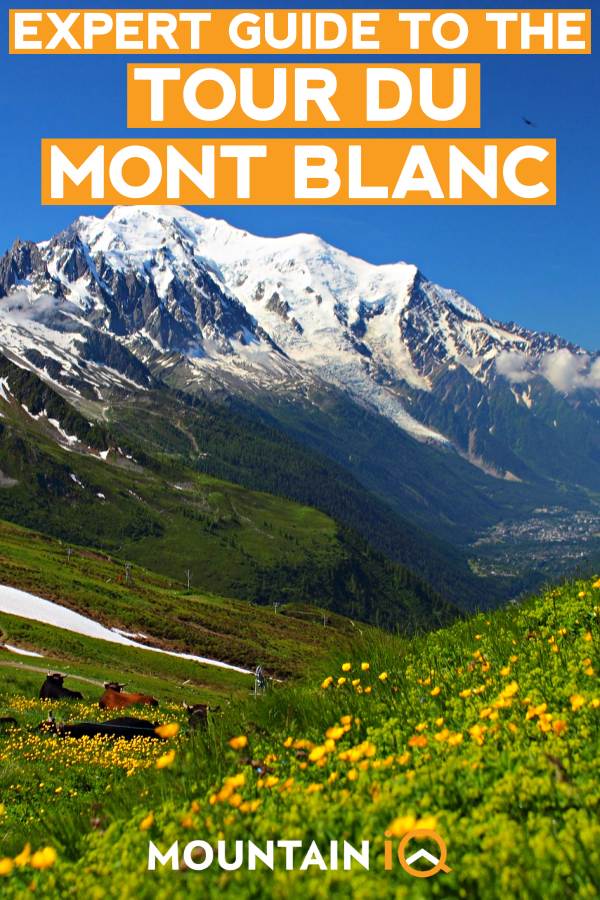
Browse more hikes in Europe
See our top European hikes picks, or check out these popular hikes.
- Tour de Monte Rosa
- Walkers Haute Route
- Camino de Santiago Routes
- Cinque Terre Hiking
- West Highland Way Hike
- El Caminito del Rey
- Laugavegur Trail
- Kungsleden Trail
- Rota Vicentina
- Slovenian Mountain Trail
About the author
Mark Whitman
Mark has trekked extensively in Asia, Europe, South America and Africa. He founded Mountain IQ in 2014 with the sole aim to be the best online information portal to some of the most popular mountain destinations around the world. When not writing for Mountain IQ, Mark is out exploring the outdoors with his wife!
Leave a Reply
Your email address will not be published. Required fields are marked
Hi Dempsey,
I’ve been thinking about doing that hiking for a long time and I think, after this pandemic crisis, it’s the time to see my dream coming true. I hope to do it as soon as possible, and to see it how beautiful the nature around is. Stay safe,
João Leite.
Wife and I are interested in doing this in last half of August. I know it is (too) late to reserve now. We plan to show up and hope for the best, perhaps taking advantage of late cancellations on a guided/luggage transfer arrangement. Any advice?
Hi Mike, there are a few dates available on this TMB highlights tour, which is amazing if you’re looking for a short circuit: https://www.skyhookadventure.com/trips/tour-du-mont-blanc-highlights
We work with local guides to offer great value adventures at unbeatable prices

A Complete Guide To Hiking Tour du Mont Blanc
Drew Robinson | December 13, 2018 | France , Italy , Switzerland , Tour du Mont Blanc
Tour du Mont Blanc is one of the most popular long distance hiking trails in the world. The incredible thing about Tour du Mont Blanc is that you’ll hike through France, Italy, and Switzerland as you loop your way around the Mont Blanc Massif. The entire journey covers 170km (106m) and gains roughly 10,000m (33,000ft) of elevation. Tour du Mont Blanc is the bucket list adventure of a lifetime, and I’ll be covering all of the details in this comprehensive guide.

- Best Time To Go
- Guided vs Independent Trekking
Camping vs Lodging
- Getting to Chamonix and Les Houches
- Directions, Maps, and Terrain
- Gear, Food, and Water
- Daily Trip Reports
Best Time To Go:
The optimal time to hike Tour du Mont Blanc is from late June to early October , but can vary based on weather and snowfall for the year. There are times when the trail is closed into July due to hazardous conditions. I hiked during the first week of July and had snow and rain with cold weather every day. You could also hike in July and have warm sunny days. The Alps can surprise you with a little bit of everything, so come prepared for it all.

Guided vs Independent Trekking:
I hiked Tour du Mont Blanc independently, but there are also options for guided and pre-booked treks. Guided treks are substantially more expensive than independent treks, but are usually a good idea for those short on experience. REI offers a guided trek with multiple summer departures.

Guided Pros:
- Knowledgeable guides with information on the regions flora and fauna
- Meals and snacks are usually provided
- Gear can be provided and/or transported from accommodation to accommodation
- Support of the outdoor recreation economy by giving guides jobs
- Lower levels of planning and pre-trip involvement
Guided Cons:
- You’re on a guided itinerary without much room for autonomy or changes
- Limited freedom to move at your own pace and explore what interests you
- Very expensive for those on a tighter budget
- Hiking in a group with people of varying fitness levels and personality types

For your nightly accommodations, you’ll have to chose to sleep in huts/hotels or bring along equipment for camping. Julia and I opted for lighter packs on this trek and chose the huts and hotels option. Huts and hotels will average around $100 per night for a room or $40 per person in the shared rooms. Camping is usually less than $20 per site for the night. Wild camping is discouraged, so you will have to stick to campsites and/or ask to sleep outside of huts.
The type of accommodation varies by location. The bigger towns will have many options including some nice hotels. The smaller towns and hamlets can sometimes be limited to mountain huts or dortoirs. Julia and I opted to stay in the cheapest accommodations possible, but there were a few towns where only expensive options remained.
If you plan on hiking Tour du Mont Blanc in the busy months of late July and August, you’ll probably want to book all of your accommodations ahead of time.

Food and Water:
Most of the towns and villages on Tour du Mont Blanc have cafe/restaurants and mini marts. The restaurants are pretty expensive, so plan on a minimum of $15 per person each meal. Many of the accommodations we stayed at included breakfast, so we only had to pack a lunch and snacks each day. From the mini marts, we bought lots of bread, meats, cheeses, and candy to get us through the days of hiking. For water, we just used the available tap water.

The gear you bring will be decided by your choice of accommodations, since camping will require a sleep system. I’m not going to get too much into specific gear choices for a self supported camping trip, because if you don’t already know what you should be bringing, you should stick to hotels and huts. If you’re not going to be camping, you can just bring a 3-season day hiking kit. You can see my exact list here .

Getting to Chamonix/Les Houches
To start, we flew in to Geneva and took an Alpybus shuttle to Chamonix and Les Houches. The shuttle cost 20 euro per person, and was in a relatively new and comfortable van.
As a word of caution, make sure you don’t fly in too late without a reservation! Julia and I arrived at the Geneva airport at 21:00 with a reservation in Chamonix. We had a reservation with Alpybus for that night, but our flight was delayed from London by about an hour. Because of this, we missed our shuttle and were not able to get to Chamonix for our hotel. It was expensive, but we found a hotel in Geneva and returned to the airport the following morning for our transfer.
From Chamonix, we made our way to the nearby Les Houches and stayed the night at Gite Michel Fagot. Chamonix is a pretty crowded mountain town, but Les Houches was much more relaxed. Les Houches has restaurants and gear shops, and is filled with fellow hikers and backpackers.

Directions, Map, And Terrain:
From Chamonix and Les Houches, we began our trek and got a chance to see the incredible trail marking for Tour du Mont Blanc. This continued for the entirety of the loop. Most junctions are marked with green “TMB” signs, and many give time estimates to the next town or trail.

Key Points:
- Distance: 106 miles
- Elevation Gain: 33,000 ft
- Time: 6-12 days
- Permits: Not required at the moment
- Trail Condition: Lots of singletrack mountain trails with rocks and roots in abundance. This area can get a lot of rain, so be prepared for it and the mud that comes with it. This is especially important along the Bovine Trail!
- Cell Phone and Wi-Fi: Spotty on trail, but decent in towns

Safety Precautions:
The Tour du Mont Blanc is a very developed trail that passes through France, Italy, and Switzerland. You’ll almost never be alone, and if you are, you won’t be too far from the nearest town. Still, you’ll want to make sure to come prepared with the proper gear, and most importantly, proper fitness. If you’ve never hiked at altitude before, plan to start slow. You’ll want to give yourself 48 hours to acclimatize in Chamonix to get started. Here are a few other things to consider:
- If you’re not going with a guided group, make sure to leave a detailed itinerary with someone you’re close with.
- Make sure to stay hydrated. Once you are dehydrated it is often too late to fully recover for the day. Mixing dehydration with elevation sickness can be a nasty combination
- Familiarize yourself with the early signs of altitude sickness , and be proactive in your approach to combating these symptoms.Altitude sickness usually manifests itself with an early headache followed by dizziness and a loss of appetite. Don’t be afraid or too stubborn to stop.
- Be hyper-vigilant of weather. The conditions can change by the hour at high elevation in the Alps. Always have your warm layers and waterproof layers readily accessible. This is especially important when heading up and over the high passes.
- Have a first aid kit, gear repair kit, and blister treatment kit ready to go in your day pack.
- Check your health care plan to see what kind of international coverage you have. Consider international travel insurance for the off chance of a catastrophic event.
- Try to only drink tap and/or bottled water. If you must get water on trail, make sure it is properly treated.

Daily Trip Reports:
Day 1: les houches to les contamines.
Les Houches is a quaint little village to the east of Chamonix and the perfect starting point to begin our anti-clockwise tour of Mont Blanc. We stayed at Gite Michel Fagot for the night, which offers a a nice set of dorm rooms…
Continue Reading
Day 2: Les Contamines to Les Chapieux
The first point of interest is the pilgrimage chapel of Notre Dame de la Gorge. I’ve taken a great interest in chapels, churches, and cathedrals ever since I walked Camino de Santiago two years ago. My later reading of…
Day 3: Les Chapieux to Courmayeur
There is a war memorial just outside of Les Chapieux, and the thought of soldiers holed up in this narrow valley gave the morning an entirely different feel. Once we put a few miles behind us, the face of Aiguille des Glaciers…
Day 4: Courmayeur to Chalet Val Ferret
Just above Bertone, the path swept back into a valley and meandered downhill a bit before straightening out. From this point on the climbing was at a minimum, but it wasn’t long before the skies opened up. The mud…
Day 5: Chalet Val Ferret to La Fouly
Today’s hike would take us over Grand Col Ferret, from Italy into Switzerland. Walking in rain is bad, walking in mud is even worse, but for some reason I’ve never minded the snow and ice. This turned out to be a good thing…
Day 6: La Fouly to Champex Lac
The trail continued to grow muddier, the skies stayed dark, and the air remained cold. For as much as people talk about the incredible views on this walk, there have been none to be taken in since crossing Col de Seigne. Our original…
Day 7: Champex to Trient
Getting to the Bovine trail is fairly straight-forward. For a few miles we walked on or along the asphalt roads on our way out of town, until we reached the steep dirt paths marked by the TMB signs. Up to this point, we had walked…
Day 8: Trient to Argentiere
The uphill was a swirling mist of misery, but paled in comparison to the downhill portion. From Col de Balme, we decided to take the safer alternative route to Le Tour instead of the higher altitude route to Aig des Posettes. The trail was a…
Share This Post!

Share this:
- Click to share on Facebook (Opens in new window)
- Click to share on Pinterest (Opens in new window)
- Click to share on Twitter (Opens in new window)
- Click to email a link to a friend (Opens in new window)
Related Posts You Might Like
Iceland on a budget: 8 tips to explore iceland without breaking the bank, a guide to the chilkoot trail of alaska, 16 thoughts on “a complete guide to hiking tour du mont blanc”.
Great and very informative post! You are doing a great job with your blog.
Thank you! We’re planning our summer travels now, and Greece is on the short list!
Sounds great about Greece!
If you will need any info, please, feel free to let me know.
Merry Christmas and enjoy your family
This is on my bucket list. Looks incredible. Thanks for all the great info. Have you done the Haute Route? Just curious about a comparison.
It’s a great hike! We were actually planning to hike the Haute Route after this one, but cancelled due to a 15-day forecast that was all rain. We changed plans and spent a week exploring eastern Europe instead. We’re hoping to return to enjoy the Haute Route soon though.
Did you use a paper map (or have a recommendation for one)?
Hi, Inger! I didn’t use a paper map. I downloaded digital ones for my phone and used a guidebook for the color commentary.
Hi Drew, as always, awesome post!!!! Thanks for all the details. A group of us are scheduled to do this trek in the second week of July’19. So your post is great reading for everyone in the group. One question : what shoes did you use for this? I assume a solid trail shoe like Akasha will work instead of boots. Would love to hear your perspective. Once again, Thanks for all your posts. I love reading them and use them as guides.
Thanks! I wore the XA Pro 3D and Julia wore the Brooks Cascadia. Both shoes did very well. The trail is in great shape and not technical at all. It’s steep in sections though, and can get really muddy when it rains (we had a lot).
Thanks, Drew!!
No problem!
Thanks for such an informative post! Your pictures are beautiful and now I’m even more excited to make this trip!
Great to hear!
just curious, is it possible to start at any point in the route? we are thinking of going just from italy to switzerland and then spending a couple days in switzerland instead of doing the whole hike
Yes, you can start at any point.
Love your post. The photos are gorgeous. One thing though: We’ve done the TMB twice, and I question your saying the best time to go is until early October. We started one year on Sept 6th and the refugios were closing before we got around to them. (This year, we carried a tent, just to be sure.) We also got snow, starting both years at the beginning of September. I would put the latest start date at September 3rd, unless you are tenting (Which has its own issues. It was cold some nights in the mountains; we definitely needed a zero degree bag.)
Leave a Reply Cancel reply
This site uses Akismet to reduce spam. Learn how your comment data is processed .
Discover more from Trail to Peak
Subscribe now to keep reading and get access to the full archive.
Type your email…
Continue reading
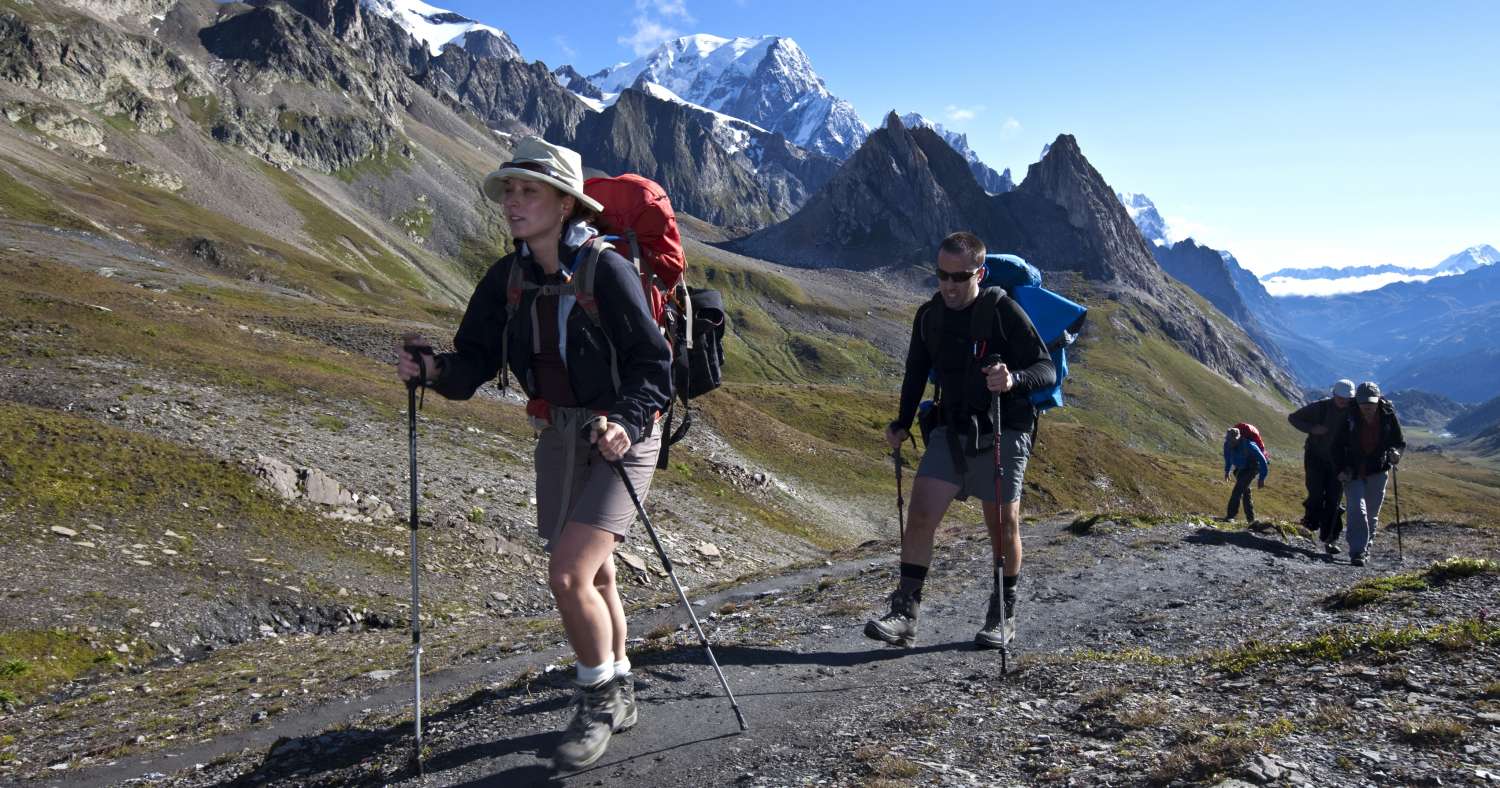
Trails conditions
The condition of the TMB and the situation on the others routes around Mont Blanc
Nature Reserves
Summer 2024
Trails conditions 12/06/2022
Mild weather and pleasant temperatures in this period of mid-June. The snowfields are rapidly melting. To date, we have had a few passages of hikers on the TMB, and accompanied groups are on the way. Access to the passes is still a bit difficult and the snow still covers several slopes and paths, but the …
Restrictions MTB Courmayeur (Italy)
Starting from July 14th and until 30/10/21 it is forbidden to circulate by bicycle (including MTM and EBike) along the following paths (as per attached plan): Col Sapin / Tete tronche / Bertone Refuge (TMB - high balcony) Leichy / Bertone Refuge / Val Sapin (inter-farm crossing) Checrouit Lake / Arp …
Conditions July 8th 2021
The conditions of the trails around Mont Blanc are generally good and only a few snow fields still persist on the northern slopes at the highest altitudes. The bad weather of the last few days should leave room for a nice improvement from tomorrow (Friday) to the whole weekend, before a worsening expected on …
Conditions June 28th 2021
The conditions of the TMB are always constantly improving. The route still has some sections on snow but the main track is well marked and wide. However, it is advisable not to venture outside of this and to pay attention to the snow bridges, especially where they cover the water streams. Trekking shoes and …
Conditions June 25th 2021
The conditions of the TMB trails are changing rapidly. The summer temperatures melt the snowfields and the passage of many hikers makes the tracks on the snow well marked and rather reliable. As for the weather, two beautiful sunny days await us: this Friday a little cool for the season, after a few dullness …
Conditions June 24th 2021
The Casermetta Espace Mont-Blanc at Col de La Seigne (Val Veny - Courmayeur, Italy), was inaugurated on Monday 21 June. This information and exhibition space for all the hikers who walk the Tour du Mont-Blanc, every summer welcomes over 10,000 visitors from all over the world and, in agreement with the Aosat …
Conditions June 18th 2021
Mild and pleasant weather in early June. The warmer temperatures of recent days are gradually melting the snowfields, making the snow more passable. To date, there are already some hikers who walk the TMB and in the coming days the first accompanied groups will be for the Tour.However, the snowfields are …
Conditions June 15th 2021
The high temperatures of these days (isotherms up to around 4,000 meters) are rapidly transforming the landscape of our valleys. The snow is rapidly melting and retreating to higher altitudes. However, many snowfields still hinder the normal route of the TMB, especially above 2,200 - 2,300 meters of altitude.…
- PRIVATE TRIPS
BY Rami Rasamny | January 22 2024
When is the Best Time to Hike the Tour du Mont Blanc?
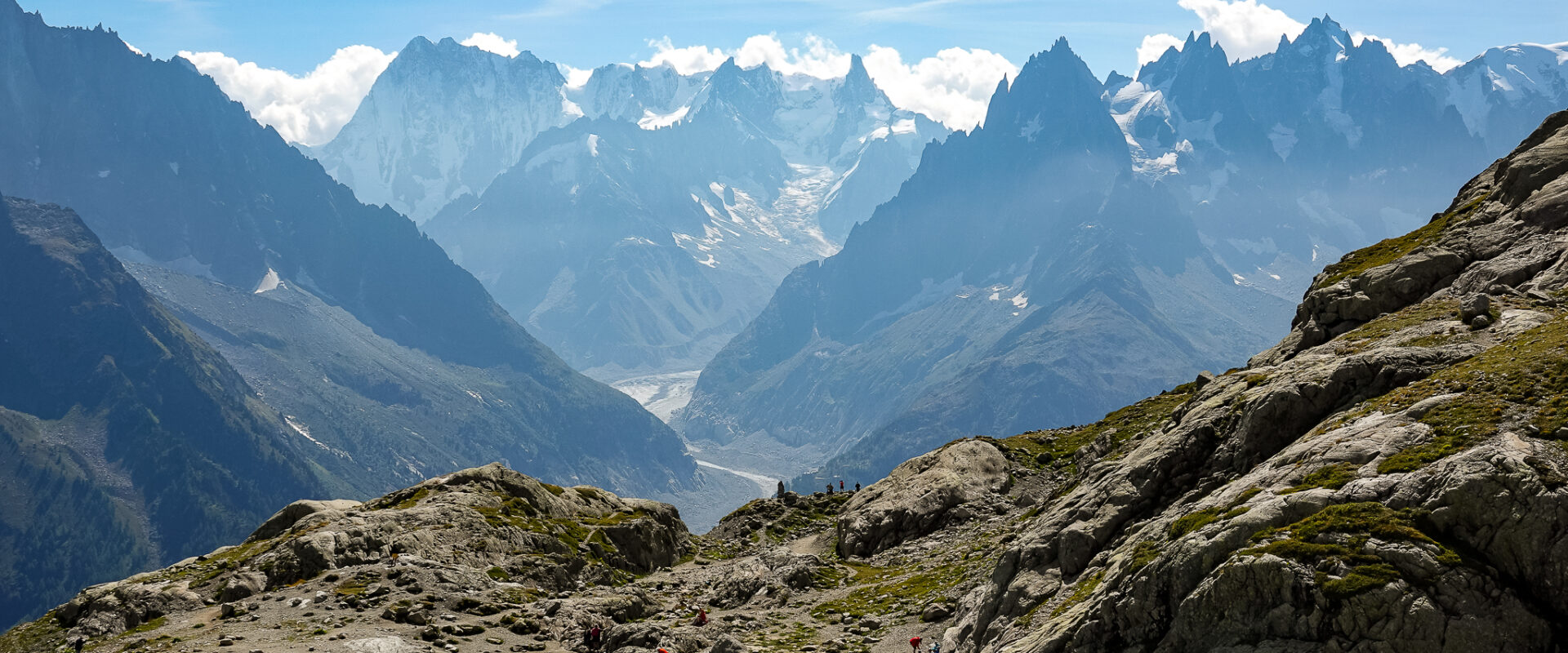
Rami Rasamny
Tour du Mont Blanc, a breathtaking trek circumnavigating the iconic Mont Blanc massif, invites hikers to explore the stunning landscapes of the Alps. Choosing the right time to embark on this adventure is crucial for a fulfilling experience. In this guide, we delve into the optimal seasons for trekking the Tour du Mont Blanc, emphasizing the unique considerations for each month.
The Ideal Window: June to September The best time to trek the Tour du Mont Blanc spans from June to September, offering a diverse range of experiences as the seasons progress. During this period, hikers can enjoy milder temperatures, lush alpine meadows, and the spectacle of blooming wildflowers. Each month within this window presents distinct advantages, catering to varying preferences and priorities.
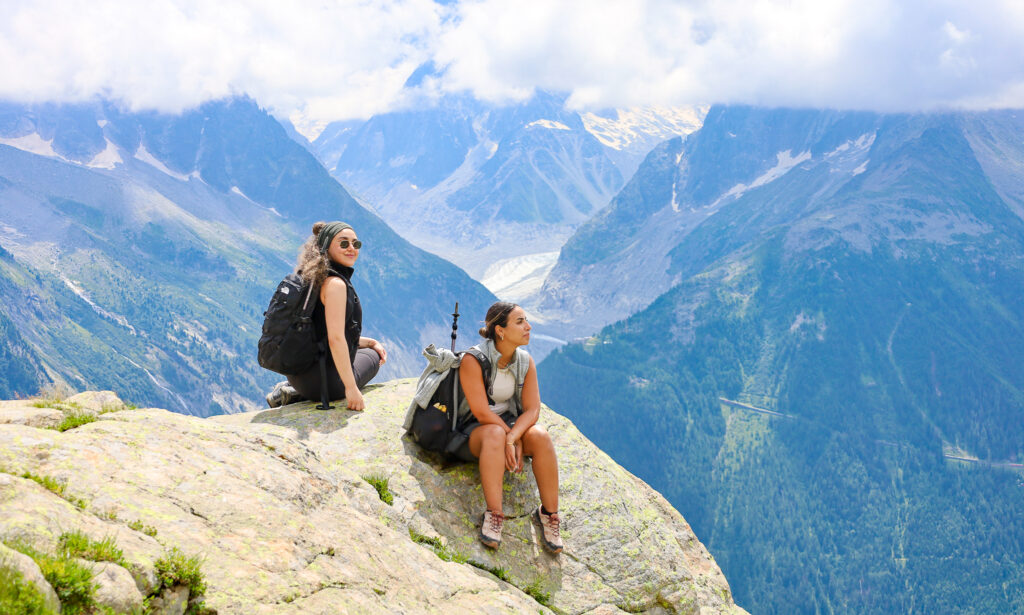
June and September: The Tranquil Months June and September are the least crowded months on the Tour du Mont Blanc. In June, the trails are adorned with vibrant wildflowers, and the landscape is still lush from spring. September, on the other hand, provides a unique experience as autumn begins to set in, painting the surroundings with warm hues. Both months offer tranquility and solitude, allowing trekkers to savor the beauty of the Alps without the bustling crowds.
July and August: Reliability Meets Buzzing Energy July and August emerge as the peak months for trekking Tour du Mont Blanc, boasting the most reliable weather conditions. During these months, the trails are alive with hikers from around the world, creating a vibrant atmosphere. The weather is generally warm and stable, facilitating clear views of the majestic Mont Blanc and neighboring peaks. Trekkers in July and August can expect longer daylight hours, enhancing the overall experience.
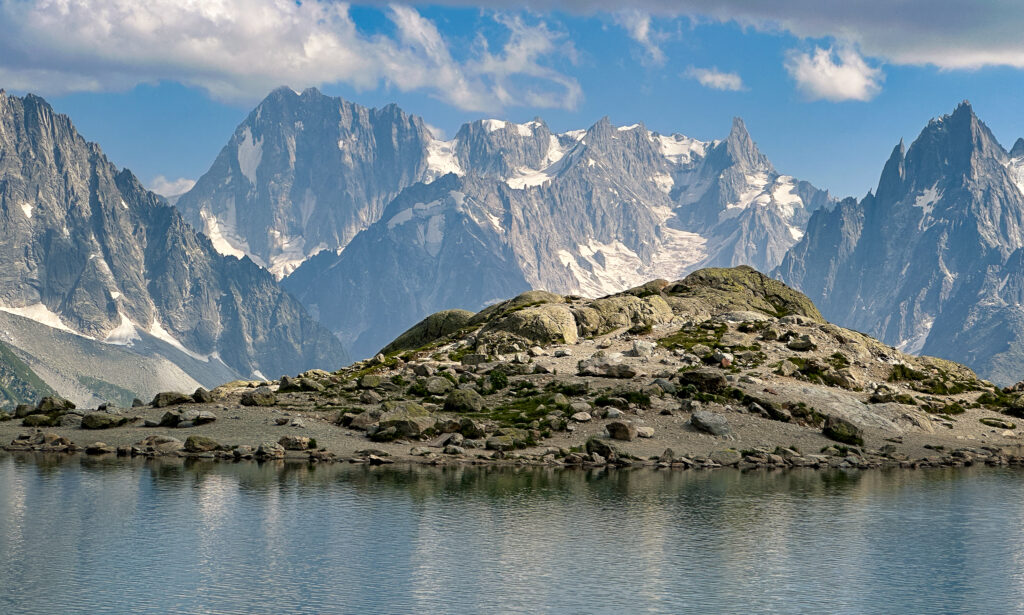
Considerations for Each Month:
- June: Blooming wildflowers, fewer crowds, and pleasant temperatures.
- July: Peak season with reliable weather, longer days, and a buzzing trekking community.
- August: Similar to July, offering stable weather and a lively atmosphere on the trails.
- September: A quieter period with the added charm of autumn colors, though weather can be slightly less predictable.
Conclusion: Tailoring Your Trek to the Season Selecting the best time to trek the Tour du Mont Blanc depends on your preferences and priorities. June and September provide a more serene experience, while July and August guarantee a bustling trekking community and reliable weather. Whichever month you choose, be prepared for variable mountain weather, and pack accordingly. As you plan your adventure, consider the unique charms of each season and embark on a journey that aligns with your desired Mont Blanc experience.
Discover More
Tour du Mont Blanc Trek
Chamonix Valley Treks
Tour of Monte Rosa
Leave Us Your Comment
Leave a reply.
Life Happens Outdoors (LHO) is a community founded on the single most promising idea that every single one of us has the potential to find a transformative experience for ourselves in the outdoors. Although this chapter of the LHO story now takes place on the trails, glaciers, summits and seas, it began very far away from all of it.
READY FOR AN ADVENTURE
- Our Adventures
- Multi-Adventures
- Trekking Adventures
- Climbing & Mountaineering
- Private Trips
- Family Adventures
- Join the team
- LHO Rewards
DIVE DEEPER
- Manage Booking
BUSINESS PARTNERSHIPS
- Advertise With Us
- Adventure Travel Consultancy
© 2024 LIFE HAPPENS OUTDOORS. ALL RIGHTS RESERVED. NO PART OF THIS SITE MAY BE REPRODUCED WITHOUT OUR WRITTEN PERMISSION.

The price will be converted to show the approximate cost in your chosen currency. Please note, you'll pay in GBP, the exchange rate may change before payment
JOIN THE LIFE HAPPENS OUTDOORS COMMUNITY!
Get £50 off your next adventure!
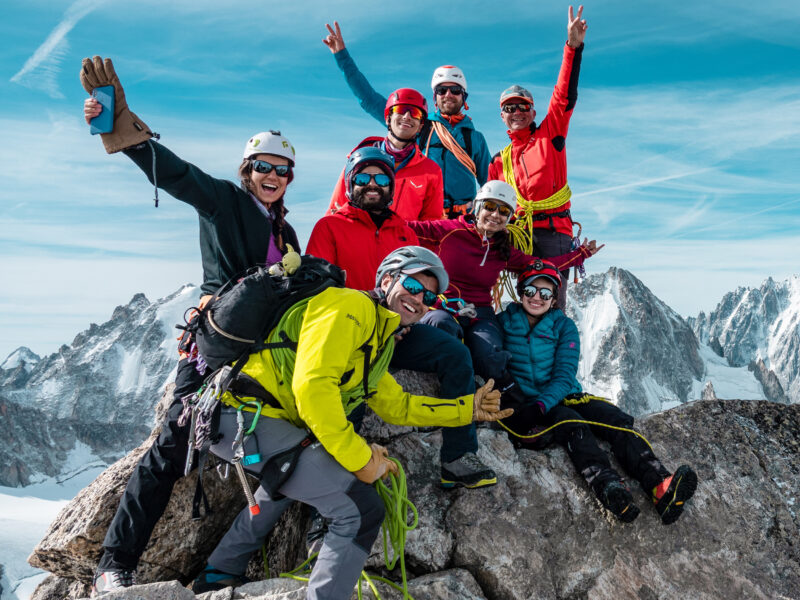
Sign Up To The Newsletter
CLICK HERE TO TALK TO US
We use only necessary cookies to provide you with the best possible experience in line with our Privacy Policy. By continuing to use this site you agree to this.
Invite & Earn

Available Coupon
Sending email...
Email sent!
You are using an out of date browser and this website will not function properly.
Please upgrade to Edge or Chrome browsers.

+33 (0)781586903
montblanctreks
- Dates & Prices
Trail Conditions Season 2024 See our News Page
Tour du Mont Blanc Trail Conditions Full Report
16th june 2024.

Vic Chelton one of our experienced guides has been out on the Tour du Mont Blanc this week to experience the current conditions. This is what she has to say...
The Alpine trekking Season has officially started and conditions on the trails of the TMB are tough at the present moment. Another year of heavy snowfall from March - April followed by a wet and cold spring have made trekking in June tougher than previous years.
Having been out exploring the cols (mountain passes) and trail conditions, the 2024 season is much more challenging than a regular June. There is a lot of deep snow above 2000m , which means passing through any of the high cols involves winter style trekking.
For the most part of June, there will be a lot of time for hiking on snow. For your own safety it's compulsory to be well equipped with good footwear, trail spikes/ lightweight crampons and trekking poles.
Most of the trails above 2000m involve spending most of time hiking on snow. This season the snow still remains deep and consistent.
However there is a remarkable amount of people out travelling the TMB, the busiest June I have seen in 16 yrs guiding on this route. Therefore there are good tracks to follow through any of the snow fields/ passages making route finding and snow conditions easier to follow. However there are some sections that require a steady head and good equipment, the tracks are easy to follow but a slip could be fatal in some areas.
Below 2000m due to a wet spring the trail conditions are very muddy which can make hiking equally more challenging. As the temperatures become warmer, the snow conditions will become more problematic, as holes will appear mostly around gully beds and stream crossings.
The consistent snow above 2000m presently means the actual main trail is buried, but easy to follow as many people have created a track to follow in the snow. Equally as the snow start to melt, route finding will need more focus and additionally create more muddy paths until the summer weather dries out the terrain.
In this report I give an update of notable points for some of the main sections and high cols also logistics to provide advice to aid your journey. Equally as the TMB is very busy, it's also a great opportunity to chat with fellow trekkers and also ask each local refuge/hotel for updated information as the weather and conditions continue to change.
Mont Blanc Treks will also keep a blog updated for important information .
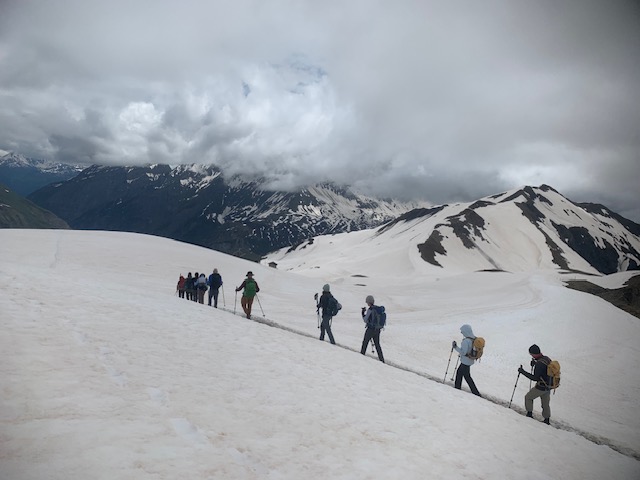
Chamonix to Les Houches: The Planpraz / Brevent lift only opened on Saturday 15th of June. So there haven't been many people trekking in this area.
There is still a lot of snow above 2000m and even on the starting path heading up to col du Brevent there are some very big snow fields. Which are difficult to pass.
It's highly recommended to avoid taking this high level route as the section from Planpraz to Brevent has some exposed technical terrain which currently has a lot of snow. It will need some time for snow to melt to make it safe.
Information will be updated.
It is safer and advisable to follow one of the lower level routes.
For example; the trail starts from Chamonix up to the Brevent lift parking area then continues leftwards following signposts eventually arriving onto the main trail of Petit Balcon Sud .
From here follow the signs and the trail up to the Parc Merlet .
Then descend down to Les Houches
It is a wonderful way to ease your body into the first day of trekking .
Also gain some height and some great views of the Majestic Mont Blanc if the weather allows.
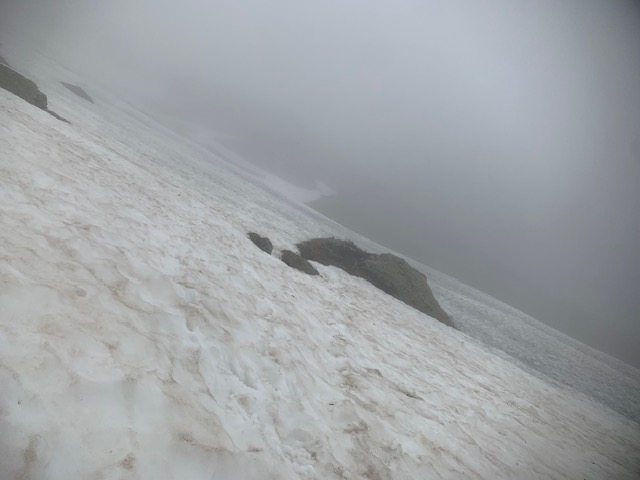
Les Houches to Les Contamines: After leaving the Village of Les Houches it's recommended to take the cable car of Bellevue as the hike up through the ski area is not so inspiring.
The lift opens at 07.30 and the price is 18 euros for a one way ticket / Aller simple.
The trail starting from the top of the Bellevue Lift up to the Col Du Tricot is snow free.
However the trail is very muddy, due to a wet and cold spring.
The passerelle/ suspension bridge is In place.
It is important to note that a new path was created 2 yrs ago .
Around the altitude of 18-1900m, see photo below.
It heads rightwards and zig zags up to Col du Tricot.
The old direct path has a lot of snow debris and is suffering from erosion. Therefore it's important to follow the signs and take the rightward trail.
The descent from Col du Tricot has no snow but the path is currently wet and muddy, so a slow descent.
The refuge of Chalet du Miage is open, so worthy of a break for a taste of it's famous myrtille tart or to buy the best omelette you will ever eat, if time allows.
It's another 2 hours minimum on trails without snow but maybe wet and muddy to arrive at the beautiful village of Les Contamines..
If you have bag transfer arranged you do not need to carry your hiking spikes/ crampons for this day as it will not involve crossing snow.
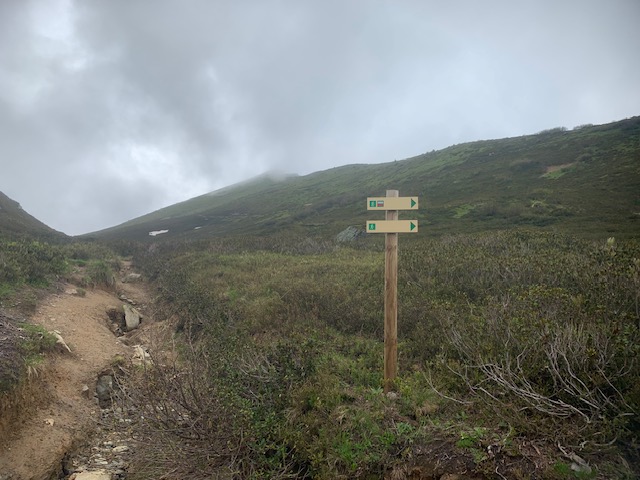
Les Contamines to Chapieux & Refuge Mottets: This one of the toughest days of the tour. Be well prepared to spend at least 5-6 hrs Trekking on snow.
The path is snow free up to around 2000m up to the notable rockpile of the Plan des Dames. 50m beyond here the snow line starts
There is a small snow patch to cross just after arriving at the obvious power line tower 30 mins uphill after passing the Refuge la Balme
It's easily crossable about 50m wide ,but be wary of holes in the snow as it has a big river below as you traverse, so attention is needed.
The refuge La Balme is opening soon for a last water refill to get enough for the rest of the day.
Equally use the Toilets and water fountain just before arriving at the refuge.
When you arrive at the rockpile of the Plan de dames 2000m, expect to be on Snow for 5 hrs.
Currently there is a large quantity of snow and many people have passed through so there is a very obvious trail to follow on the snow.
The snow is very forgiving and depending on the weather and conditions it can be possible to walk on without using spikes/ crampons up to the col du Bohomme as the track is well packed in. Equally it may be better to use your spikes depending on if you feel better with extra traction.
Photos are included to show you the route up to the Col du Bonhomme 2329m.
It is winter conditions at the moment so make sure you have lots of warm clothing.
The section between Col du Bonhomme and the highest point of Col de la Croix du Bonhomme is where much care and focus is needed.
It will take about 45mins to 1hr of traversing on continuous snow. The first 20 mins after leaving the Col du Bonhomme there are some very exposed slopes to cross with a good track to follow, but spikes/crampons are essential from this point onwards.
Currently the volume of snow makes it easier to follow the trail and easier.
However, be warned that as the snow melts over the next few weeks, this section of trail will become more problematic as holes will emerge and route finding will be less obvious. Extra focus is needed to follow the painted markers and signs.
From the highest point of Col de la Croix du Bonhomme 2483m.
You will see the junction to Col des Fours...... Do not attempt to pass this direction. Its too dangerous with snow cover. It will need to be completely snow free so maybe in 3-4 weeks it will be possible
Head down to Les Chapieux passing the refuge of Bonhomme which is open for refreshments and toilets.
Expect 1.5hrs / 2hrs descent mostly on snow until 2000m , then can remove your spikes
Then expect some muddy trails to finish your day.
If you are staying at the Refuge Mottets walk up the road to Ville des Glaciers & on to the refuge, allow 1h 30mins. See info in paragraph below.
There is very limited or zero telephone signal for most of this day an not any signal until at least you arrive into italy. Wifi can be paid for at the small shop in Les Chapieux. But be prepared to be without telephone signal for 24hrs at least.
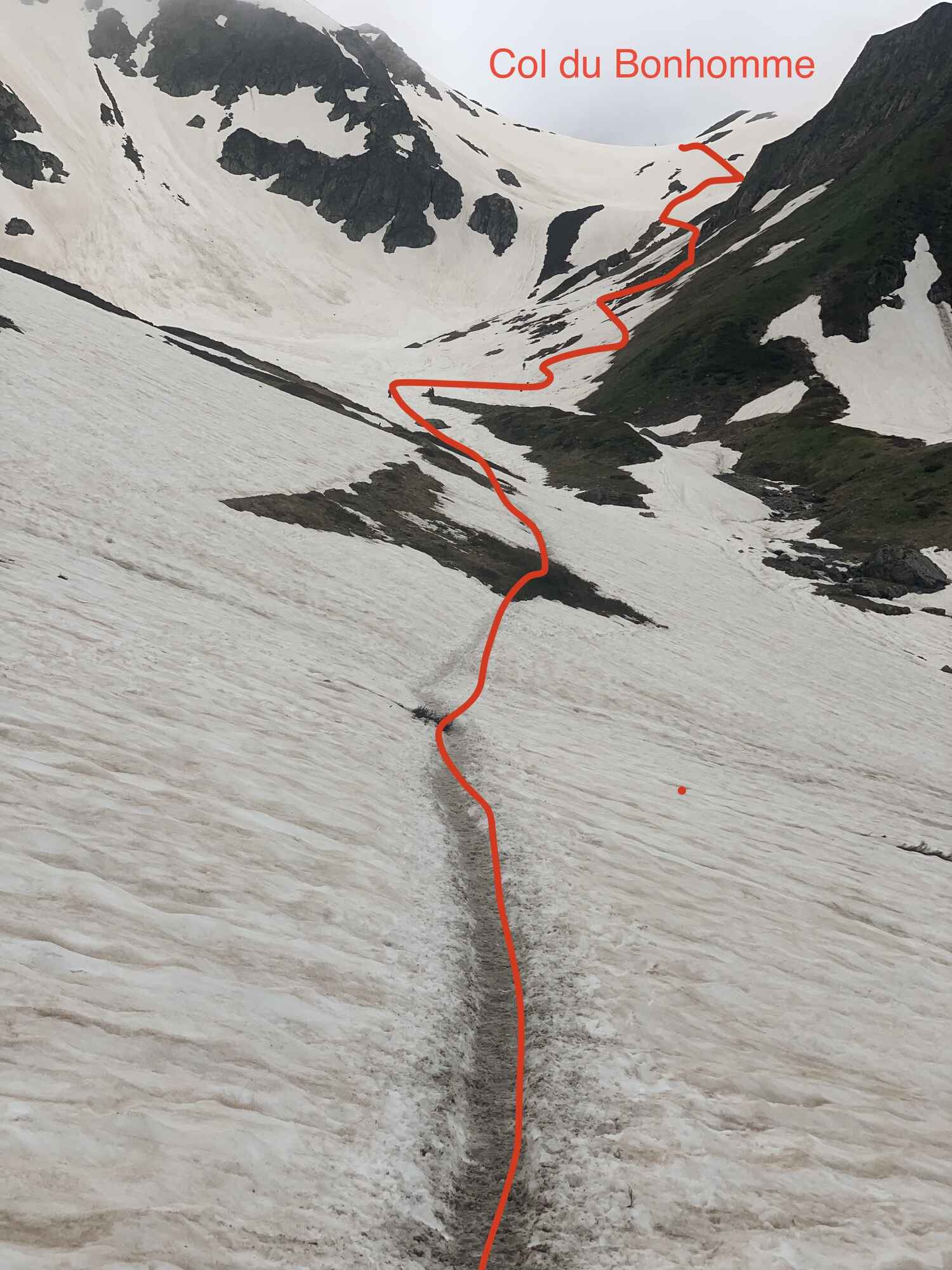
It's important to ask the locals on current conditions to head up the valley to Refuge Mottets.
Currently it's only possible to hike up the road to the Ville des glacier . For The Moment it is unsafe to use the alternative trail on the right side of the valley. It has avalanche debris and can be prone to rockfall and landslide until the snow fully melts.
A preferred option is to use the navette mini bus from Les Chapieux to avoid the long walk on a road to start your trekking day from ville des Glaciers.
It costs 4 euros and runs from 15th June to 15th september.
Check the timetable in the hamlet next to the toilet block, normally the first bus departs around 8 am.
From Ville des Glaciers the track is easy until the junction from Refuge Mottets.
Here the ascent begins up to the Col de la Seigne 2516m, the border crossing into Italy.
You will very quickly have many snow patches to cross and will eventually be on snow for 4hrs of the day. So Spikes/ crampons are essential.
From the high point of Col de la Seigne its winter conditions and the current descent path is not the regular summer route as Its full snow cover.
After around 10-15 mins descending from the col .
Pay attention to look for a path junction, the normal summer trail heads right passing the environmental museum.
However for the moment it is better to stay direct / leftwards and descend on the snow slopes to arrive at the bridge at around 2800m.
As the snow melts the regular summer trail to the Environment museum will be better but only until the snow has melted.
From the bridge there are small regular snow patches to cross, but can be done without spikes, as easily crossable.
When you get to the junction up to the Elisabetta Refuge it worth a 10 min hike to enjoy your first Italian treat.
Pay attention after 10 mins descending down from the refuge as there is a current snow passage which is best to followed on the right or direct down. Its covering the main 4x4 trail and is not a good way to pass.
When you arrive at the Valley 4x4 track it is simple hiking.
It is possible to take the alternative high route to Maison Vieille but more snow will be encountered.
It is better to head down the valley to arrive at La Visaille and take the bus to Courmayer.
There is currently a bus every hour at 40 minutes past the hour.
Timetables changes on 28th june
Then the bus runs every 30 minutes
https://arriva.it/app/uploads/sites/3/2023/06/000931-CourmayeurValVeny-1.pdf
Its free of charge.
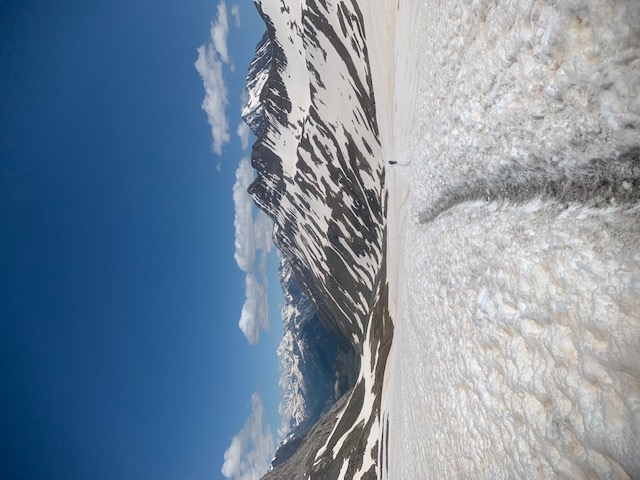
Courmayeur to Refuge Bonatti & the Val Ferret: This day is mostly snow free as it stays around an altitude of 2000m, however; some small snow patches may need to be crossed.
Particularly crossing any river beds/ gullies.
Do not attempt to take the high level route over the Mont Saxe ridge.
It's not safe due to the snow conditions for at least another 4 weeks.
Val Ferret to La Fouly: The Grand Col Ferret 2537m is one of the days that needs great attention. There is a lot of snow the higher you go with winter conditions at the col. Be prepared for walking on snow for most of the day.
A few small sections are exposed so need to passed with full equipment, fully focused and a steady head.
There is a very obvious track crossing any snow encountered which provides a track to follow, but in some places the track is narrow so extra care is needed, moving slowly and surely is important on this day.
From the head of the valley (Arnouva) at 1784m the climb to col begins. You have 2 options, if you take the left route to the refuge Elena is easy much easier and safer via a wide 4x4 track.
If you choose to take the right hand trail it's more complicated. The path is full of mud to start and there currently is 3-4 short but very exposed gully sections on snow to be crossed.
As the snow melts the main problem will be the huge gaps that appear between the earth and the snow patches. They are short crossings on snow but dangerous to pass as to slip here could be serious.
Taking the 4x4 track would maybe take a bit longer but will be stress free.
Also on the higher route 100m below Elena refuge the bridge is not in place. The gully is full of snow, currently easy to pass. This will become a problem when the snow melts until the bridge is back installed.
Elena refuge has delayed opening beacuse of the snow, they open on 1st July.
The trail from Elena refuge to the Grand col Ferret is a mix of snow patches, some are exposed. On the sections without snow there is a lot of mud. Also due to snow patches, the main path l is not being fully followed.
Have your Microspikes at the top of your bag and allow extra time for putting them on and off. At 2485m it is full winter conditions & the track from this point to reach the Col will be on snow.
There is a 100m section before arriving at the col that needs extra attention, as you will need to make a traverse on exposed snow slopes.
There is a track to be followed as many people are passing. You must stay focused with each step on this section to arrive at the Grand Col Ferret safely.
The descent from the Col is winter snow conditions all the way to you arrive to the Swiss refuge of La Peule.
There is a short section on the trail 20-30 mins before you arrive at the refuge around 2200m with a 100m section that is more exposed. But the descent despite the snow is easily passed.
The descent after the La Peule refuge is relaxed. It is better to follow the 4x4 trail and onwards to Ferret or La Fouly
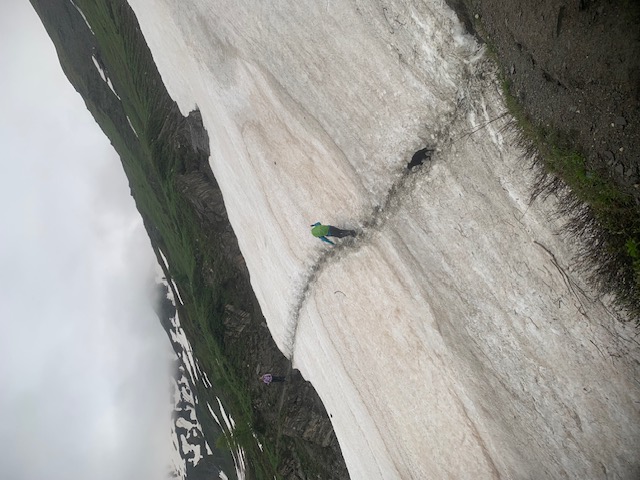
La Fouly to Champex Lac: From La Fouly the trek stays at a much lower altitude so passing snow is not an issue.
Champex Lac to Trient: Do not go via the Fenetre d'Arpette , the col is very steep at the top on both sides and it is extreamly dangerous at the moment. This route will not be passable for at least another 4 weeks.
The Bovine route is your only option on this day. Due to raising temperatures and snow melt crossing rivers needs care & atention. The path from Champex Lac towards the Bovine Refuge has 2 river crossings that need to be passed safely.
Also the section of path regularly gets flooded around the altitude of. 15-1600m metres at altitude. Be prepared to cross the 100m section in barefoot, maybe pack any extra pair of dry socks on this day to keep your feet in good condition.
After Bovine follow the well marked trail to the Col Forclaz & on to the village of Trient. A perfect opportunity to share some chat with your fellow trekkers in its bar/ social space.
Trient to Argentiere: From the village of Trient the easiest passage is to head directly up to the Col du Balme. Follow signs in SW direction to the end of the road and trail easy to find. There is a wonderful refuge with great cakes that sits on the border of France and SwitzerLand. Descent from here is long but the paths are easy to walk and follow.
Argentiere to Chamonix: It's too early to take the famous ladder route and to visit Lac Blanc, there is just too much snow. Take the route from the village centre, direction Chalet Cheserys & Flégère.
After passing Flegere ski station, continue for 2 more hours to the Planpraz cable car.
Finally it's time to take the lift down to complete your journey.
You may encounter some snow passages on this final section.
Last lift is at 17h00
Bon Courage, stay safe & you will experience a trip of a lifetime 💪
Also see our Facebook & Instagram page for video footage.

By Victoria Chelton
Uimla guide.
Vic has lived and worked in the European Alps since 2007 and has a total passion for these stunning mountains. Originally from the beautiful Lake District she grew up in the British mountains & hiked, climbed & ran from peak to peak. An excellent guide and climbing instructor, Vic has a wealth of experience on these trails.
Sign up to Our Newsletter
Marketing permissions.
Mont Blanc Treks will use the information you provide on this form to be in touch with you and to provide updates and marketing. Please let us know if you are happy to receive emails from us by checking the box below.
You can change your mind at any time by clicking the unsubscribe link in the footer of any email you receive from us, or by contacting us at [email protected]. We will treat your information with respect. For more information about our privacy practices please visit our website. By clicking below, you agree that we may process your information in accordance with these terms.
We use Mailchimp as our marketing platform. By clicking below to subscribe, you acknowledge that your information will be transferred to Mailchimp for processing. Learn more about Mailchimp's privacy practices here.
- Financial Protection
- Tel: +44 1273 256753
- Temperatures on the Tour du Mont Blanc
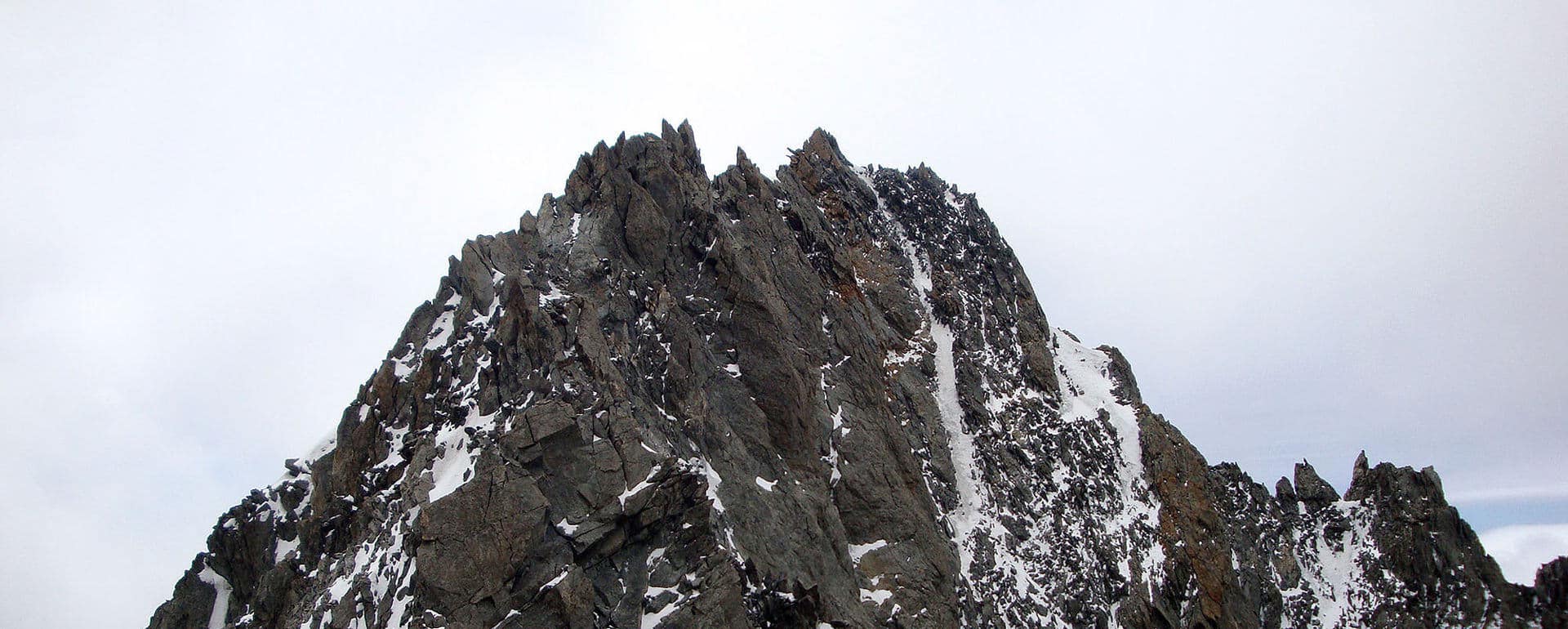
Tour du Mont Blanc temperature changes
The main window for doing the Tour du Mont Blanc is June to September, because the weather is warm and sunny. Outside these periods, it is colder and the mountain passes are usually laden with snow and and so impassable unless on skis or snow shoes.
Occasionally June can remain cool and, after a heavy winter, it is not uncommon for snow to remain on the passes up to late June. Often this snow is hard from melting and re-freezing and so can become very icy. Although there will be a path trodden through the snow it is best to take walking poles for balance. Some trekkers also take walking crampons.
Average temperatures on the Tour du Mont Blanc
From late June to the end of August it will be hot in the valleys and temperatures will be between 20°C and 30°C but these can drop to 10°C at night. At higher elevations the temperature will become cooler and this can be exacerbated by cool winds. Occasional cold fronts will bring cold, wet weather: you can expect significant temperature drops and difficult conditions in the mountains. It is not uncommon to have snow at the highest passes on the Tour du Mont Blanc during a cold front even in August. Come prepared for all weathers!
Dressing for Tour du Mont Blanc
The best advice is to come prepared for all weather. You should expect it to be hot and need shorts and T shirts. Late afternoon thunder storms will bring heavy rain and thunder storms after a hot day: this makes it a bit cooler, but you need to have good waterproofs. If hit by a cold front, the temperatures will drop dramatically and you will need warm clothes, gloves, wooly hat and gaiters.
There are reliable weather forecasts available so that you can plan what you carry:
http://chamonix-meteo.com/chamonix-mont-blanc/weather/forecast/morning/5_days_weather_forecast.php
Comfortable Accommodation
We stay at good quality, family-run hotels. We do not stay at mountain huts. All our hotels have areas where you can dry your gear if you have had a wet day.
Contact us by email or call 01273 256753 for more details.
Information Directory
- Cost of the Tour Du Mont Blanc
- Advice for the Tour du Mont Blanc
- How hard is the Tour du Mont Blanc?
- Attractions on the Tour du Mont Blanc
- Hotels on the Tour du Mont Blanc
- Food Recommended on Tour Du Mont Blanc
- Accomodation on the Tour Du Mont Blanc
- Airports Near the Tour Du Mont Blanc
- Weather Conditions on the Tour du Mont Blanc
- Location of the Tour du Mont Blanc
- Altitude on the Tour Du Mont Blanc
- Highest Point of the Tour du Mont Blanc
- Gear List for the Tour Du Mont Blanc
- Equipment for the Tour Du Mont Blanc
- Packing for the Tour du Mont Blanc
- Shoes & Boots for the Tour Du Mont Blanc
- Luggage for the Tour du Mont Blanc
- Navigation on the Tour du Mont Blanc
- Fitness Levels Needed for the Tour Du Mont Blanc
- Distance on the Tour du Mont Blanc
- Walking, Hiking & Trekking
- Guides on the Tour Du Mont Blanc
- Villages on the Tour du Mont Blanc
- Trails on the Tour Du Mont Blanc
- The Mountain – Tour du Mont Blanc
- Dangers on the Tour du Mont Blanc
- Tour du Mont Blanc Safety
- Route of the Tour du Mont Blanc
- Planning for the Tour du Mont Blanc
- Organiser of the Tour du Mont Blanc
- Length of the Tour Du Mont Blanc
- Info About the Tour Du Mont Blanc
- Itinerary on the Tour Du Mont Blanc
- Highlights of the Tour Du Mont Blanc
- Eccles Refuge
Journeys worth taking
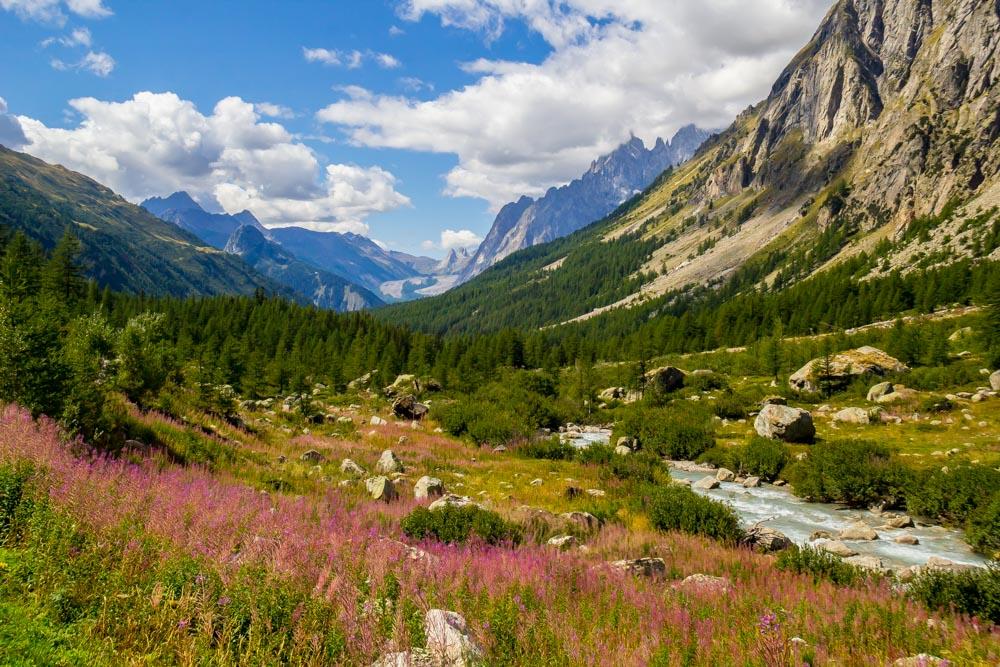
Andrew Delmenhorst
When is the best time of the year to hike the tour du mont blanc, framing the question.
When people start to plan their TMB, one of their first questions is inevitably on the best time to hike the Tour du Mont Blanc.
The answer, like so many things in life, is it depends .
Let me start out by saying that as a tour operator, we run self-guided tours from the end of June to the middle of September. So that already narrows the range of answers quite a bit. Within that time period, there is not one best time that will fit everyone. The best time comes down to the individual and what their priorities are.
LET YOUR PRIORITIES GUIDE YOU
Some people's top priority is to have solitude on the hike. Others, perhaps those traveling alone, prefer to complete the tour when a lot of people are on the trail, to maximize the chance for camaraderie. Still others, place a high importance on seeing alpine flowers (hint: early in the season is best for that). And some want to make sure they don't encounter any snow on the trail (hint: August is best for that).
In short, there are many factors to consider when choosing your Tour du Mont Blanc dates. I've listed a few below.
- weather
- trail conditions
- blooming of alpine flowers
- other events taking place on the tour - from August 28 to September 2nd the trail is full of spectators watching the Ultra TMB
- number of hikers on the trail
- opening and closing of accommodation - Huts will open around June 15 and start to close September 15
- the running of public transport
- and most importantly, your own availability.
Let's take a look at a few of these considerations in more detail.
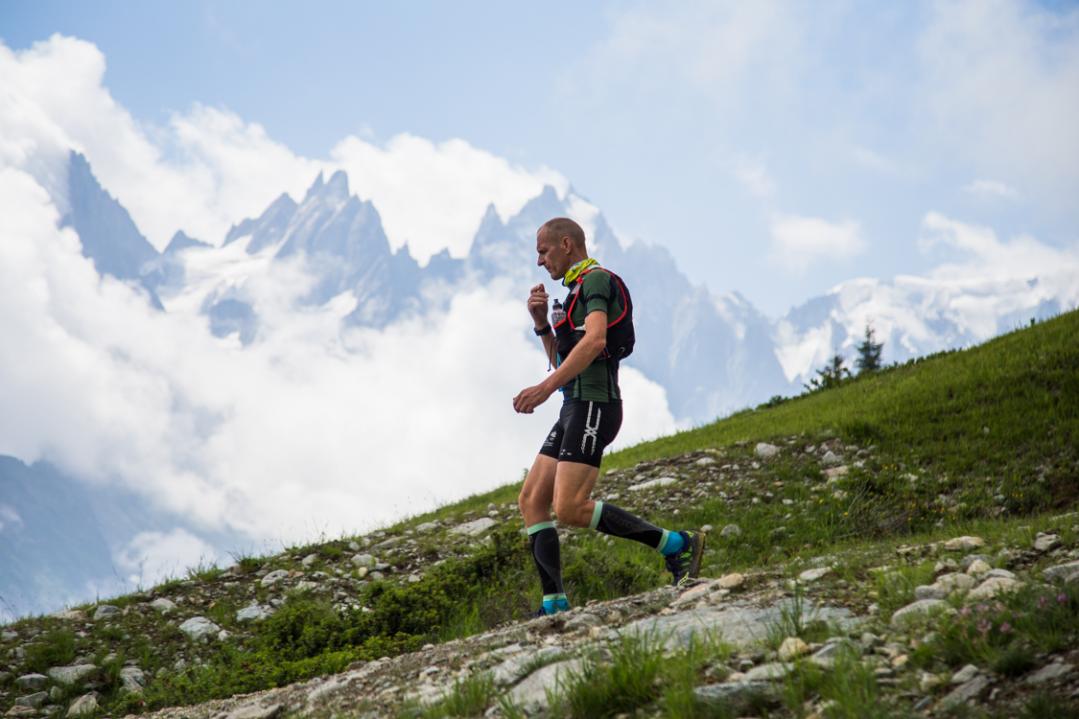
(Photo: A Trail Runner near Le Brevent on the TMB)
TRAIL CONDITIONS of the Tour du MOnt Blanc
The consideration of trail conditions is important when choosing your start date. If you leave too early, there can be Neve , or snow patches, throughout the trail. Snow can make hiking the TMB difficult in a number of ways. When snow is hard and your boots cannot gain traction, there is a risk for slipping, which is especially dangerous along steep pitches. In some cases, crampons and other alpine equipment may be necessary during the early parts of the season. Furthermore, the snow can obscure trail markings and can make route finding more difficult.
It’s hard to predict when snow will be clear enough from the trail that it won't throw a wrench in your hiking plans. The amount of snowfall during the winter and the temperatures of spring affect the amount of snow left on the trail during the summer. Each winter and each spring is slightly different. To add further perspective, here is a bit of history about the conditions early in the year from the last few seasons.
- I hiked the TMB this season (2017) from June 15 th to the 25 th . There was some snow in parts, however crampons were not necessary at all and the snow was generally not a concern.
- In 2016, people were using crampons in late June – not all the time, however on the main passes and at higher elevation - and there was quite a bit of snow, even into mid-July.
- In 2013, a particularly heavy winter and cool temperatures lead to bad trail conditions until the end of June and into July. Hikers needed to skip some passes (example the Grand Col Ferret) and sections (near Col de la Croix du Bonhomme) because of the steepness of the trail and the difficulty in route finding due to the snow cover.
FYI - as a tour operator, the earliest start date we accept reservations for is late June. The latest start date for the complete tour is September 5th.
WEATHER on The TMB
The weather is another consideration when planning your TMB. July and August have the highest temperatures, while June and September are more mild. In June, the average high in Chamonix is 68 F and the average low is 48 F. The average high temperature during both July and August in Chamonix is 72 Fahrenheit, with an average low of 52 F. The average high in September is 66 F and the average low is 48 F.
The TMB ranges in elevation from around 3,500 ft in Chamonix to 8,323 ft on the Grand Col Ferret. Some alternative routes, like the Fentre de Aprette and Col des Fours, reach up to 8,745 ft. With a wide range of elevation, the temperatures can vary greatly. Below is a breakdown of the temperatures by month for four different elevations. The graphs display temperatures from Chamonix, France (3,477 ft), Col de la Forclaz, Switzerland (5,009 ft), Rifugio Bonatti, Italy (6,643 ft) and Le Brevent, France (8,280 ft). It provides a good cross section of both locations and elevations of the tour. The temperatures are taken from a 30 year average from Meteo Blue. Here is what they say about interpreting the data:
- The "mean daily maximum" (my graphs, the "Average High") shows the maximum temperature of an average day for every month... Likewise, "mean daily minimum" (my graphs, the "Average Low ") shows the average minimum temperature. Hot days (my graphs, the "Average Hottest Day") and cold nights (Excluded from my graphs) show the average of the hottest day and coldest night of each month of the last 30 years. For vacation planning, you can expect the mean temperatures, and be prepared for hotter and colder days.
I left out the cold nights from my graphs, as you won't normally be hiking at night.
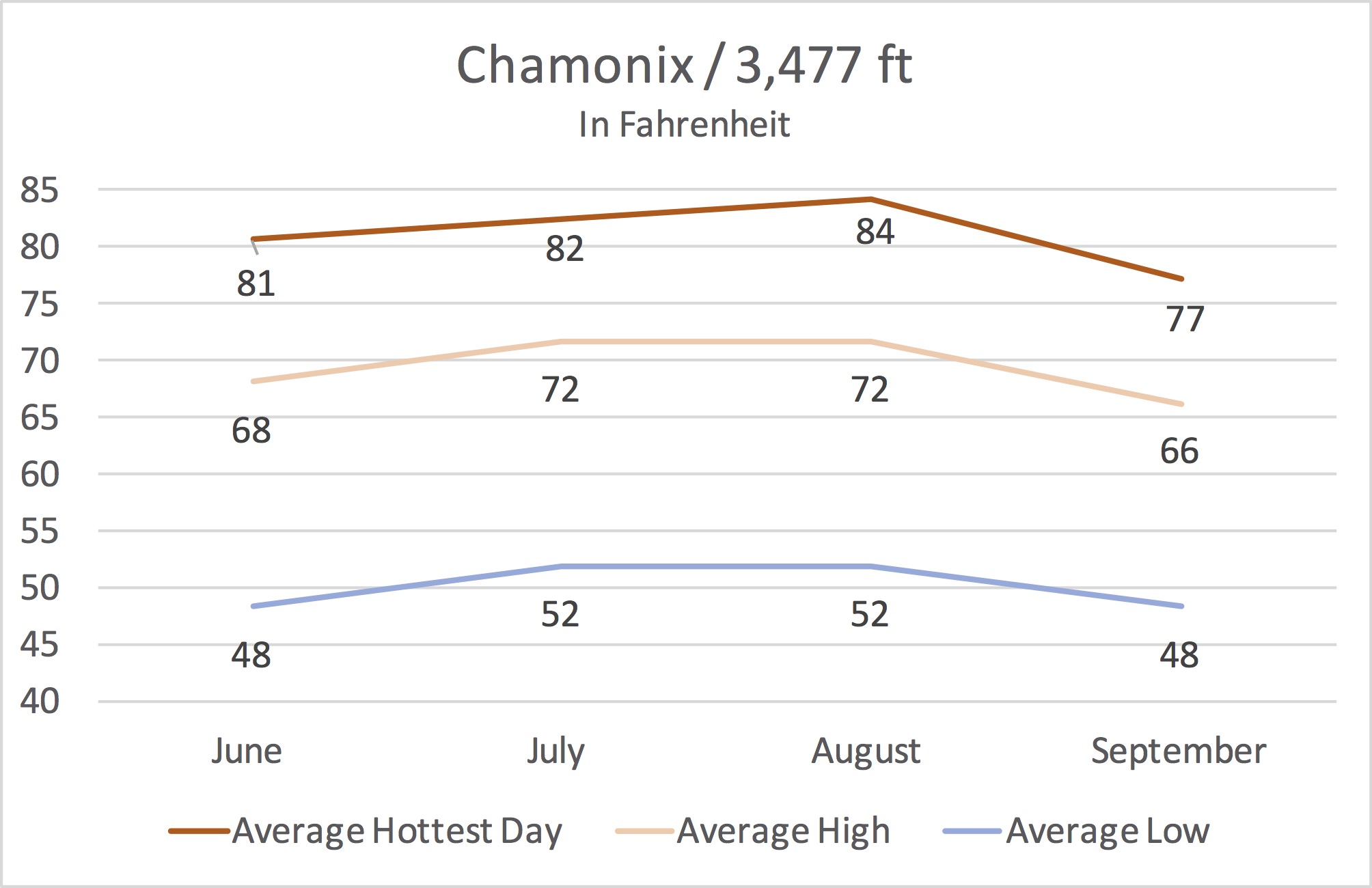
Putting it all Together - A brief overview of each month:
- Late June – this is the earliest we take reservations as there can be snow and ice left on the trail. It’s hard to predict when the snow will be free from the trails. This year was great, and only a few spots of snow were remaining by the middle of June. The year before, there was considerable snow even into July. It’s very hard to tell. The temperature will be ok during this time for hiking, however you are more likely to catch a snow storm than in July or August (although, it will snow about once or twice a month even then). Late June does have less people on the trail and can make for a very relaxing tour. Still, if you are not comfortable with the idea of crampons in case of ice or snow, then I would avoid this time just in case.
- July – Early to mid-July is a good time as the tour hasn’t reach its maximum capacity yet. Wildflowers will be in full bloom and there should be fewer hikers on the trail than in August. Regarding trail conditions, I would say starting in the middle of July is a safe bet to avoid snow, however most years starting earlier is no problem. Still, be careful of the time around July 14th. This is Bastille Day in France, and many people either use it as a chance for a quick get-a-way, or a chance to start their longer vacation. Avoid the few days before and after.
- August – This is the busiest time of year for the TMB as most Europeans have vacation in August. Summer is in full swing and weather is perhaps the best of the season. All the public transport and lifts are running, so for those that may wish to have some cheat days, this is a prime time to be on the trail. Some wildflowers that start blooming later, like Edelweiss, Jasmine and Chickweed, may be on full display. The 15th of August is a bank holiday in France, so day trippers / weekend warriors can add to the amount of hikers on the trail during this time. Also, the Ultra Marathon runs the last weekend in August (2018 August 28th to September 2nd). If you are interested in seeing part of the marathon, you could end your tour around this time. The trails will be super full of runners and spectators however, so it's not a good time to hike the TMB.
- Early September – Early September can be one of the nicest periods on the TMB, as the weather is normally stable, and precipitation should be less than June - August. Furthermore, it’s not as hot in the valleys and there are less people on the trail. Still, there is a chance that you catch some snow storms, especially around the middle of September. Please note, not all the public transport is running during this time, so if you are counting on some cheat days with a bus or shuttle, it becomes harder to do that in September. Also, the latest most of the huts stay open is the 17 th of September. A good time is between September 4 th and September 16 th .

After leaving his corporate gig, Andrew has been traversing the world, finding adventure wherever he goes - like walking 500 miles (800 km) across Spain on the Camino de Santiago, hiking the 5 sacred mountains of China, biking 800 miles from Brussels to Florence and taking a 1850 miles (3000 km) road trip through Bolivia.
Other related stories
Tour du mont blanc route description for the classic itinerary, 8 reasons why you should hike the tour du mont blanc, rafael requena, how to physically prepare for the tour du mont blanc, trips related to this story, tour du mont blanc: in comfort.

Talk to our Adventure Expert
Our Managing Director, Andrew, has been to over 40 countries in his quest for the perfect adventure. He has biked the death road in Bolivia, trekked 500 miles across northern Spain on the Camino de Santiago, cycled from Brussels to Florence and hiked the five sacred mountains of China. Pygmy Elephant is how he spreads his love for adventure and self discovery in the world.
Thanks for contacting us. We will come back to you soon.
Your email is safe with us. No spam and no harrasing emails!
Journeys Worth Taking
We customize adventure itineraries, book your travel and then support you 24 hours a day during your trip.
Experiences

United States

Camino de Santiago

Costa Brava
Destinations, discover the world.
“The world is a book and those who do not travel read only one page.” ― Augustine of Hippo
- Europe (29)
- North America (1)
- South America (10)

Explora Patagonia

Laugavegur: Budget Friendly

Laugavegur: In Comfort

White Mountains
We are all over the world.
Choose an experience category that you would like to explore. Each experience has been hand picked by our team for it's challenge, immersion or sustainability.
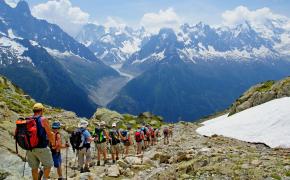
Pygmy miles
Innovative mileage program.
Redeem miles for travel, gear or give to conservation efforts. Our loyalty program rewards adventurous & eco minded travelers.
One day, one jump and two years of passion
After jumping off the side of a cliff with only a cord attached in the Swiss Alps, our founder couldn't go back to his day job. Instead, he set out to create something that he couldn't find in the travel market
From the Road
Find inspiration for your next trip and get advice from travelers who have been there before.

A Hiker's Guide to Food on the Tour du Mont Blanc
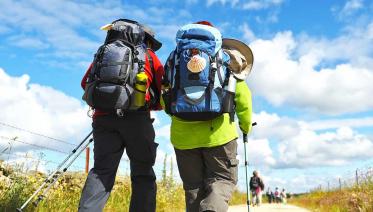
What to pack for the Camino de Santiago
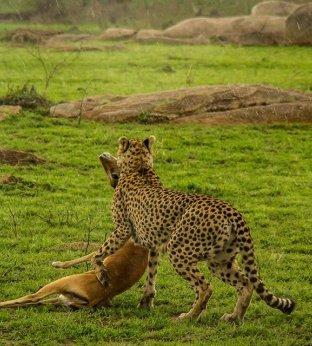
Pros and Cons of visiting the Serengeti
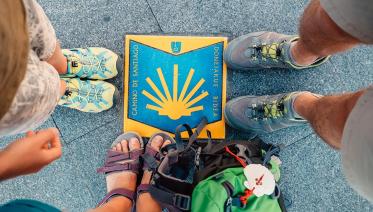
How to Plan the Perfect Camino Frances Trip
Meet the team, get in touch..
Who we are and how to get a hold of us.
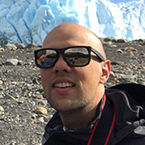
Pat Delmenhorst

Nicole Mullaly

Kirsten Thomason

Nicholas Costa

Abdylla Geldiyev
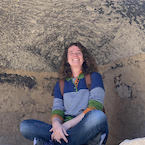
Lauren Johnson

Anna Schnizler
Let's talk.
Email us anytime, on average we provide quotes within 6 hours during business hours and the next day during off business hours.

Best Time to Hike Mont Blanc: Optimal Seasons for Your Adventure
We use affiliate links and may receive a small commission on purchases. Read more about us.
We hiked the TMB in early July and had the most incredible experience and lucked out with the weather. But if you’re wondering when the best time to hike Mont Blanc is, you’ve come to the right place.
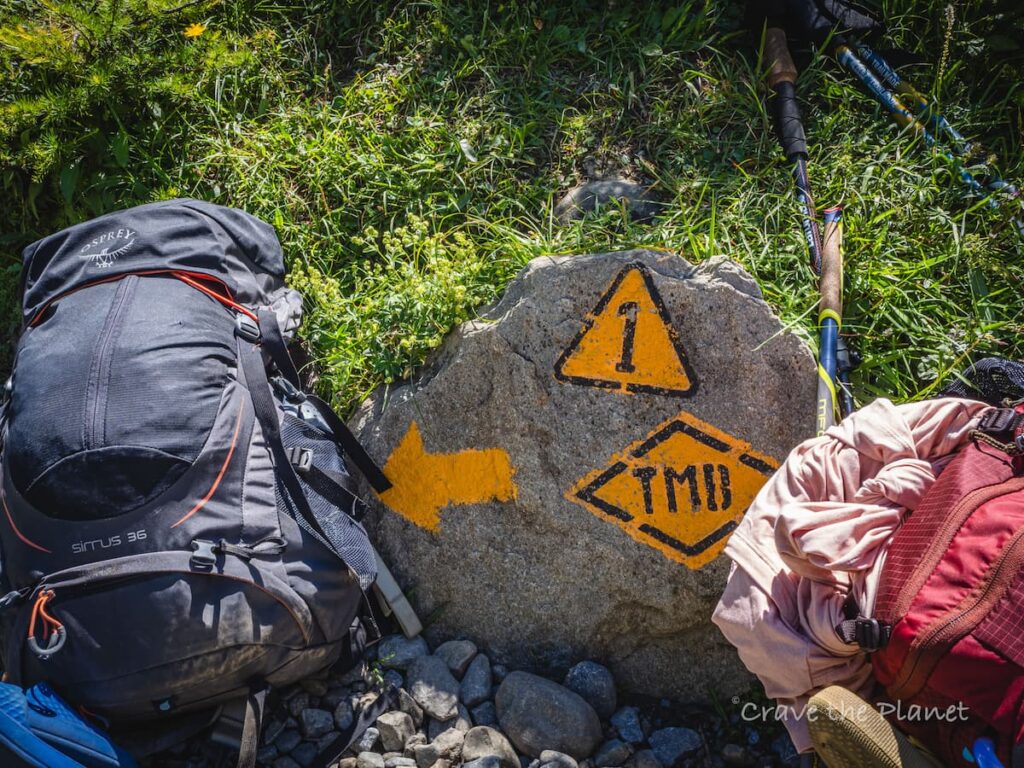
Not only is it one of the best trekking trails in Europe , it’s popular and does require planning in advance.
Understanding the Best Time to Hike Mont Blanc
When planning your trek to Mont Blanc, timing is crucial for an optimal experience. Summer , encompassing mid-June through September , is widely recognized as the best time to hike Mont Blanc, with favorable weather conditions that make the trails accessible and enjoyable.
Morgan’s Mont Blanc Hike Video
June marks the start of the hiking season with lingering patches of snow which can be a factor early in the month. The advantage of this time is the reduced crowd sizes and a still-quiet ambiance.
As you move into July and August , these are the peak months where you can expect the warmest temperatures and the most stable weather conditions . However, these months are also the busiest, meaning the trails will be more populated.
The daylight hours are longest during the summer, providing you with ample time to enjoy the scenery and cover more distance. Autumn arrives in September , offering a quieter trail again.
While weather can be less predictable this month, the trails are less crowded, and the changing foliage presents a unique beauty.
Here’s a simple guide:
- June : Cooler, some snow, fewer hikers
- July & August : Warmest temperatures, clear paths, highest number of trekkers
- September : Cooler, fewer hikers, changeable weather
Avoid spring and winter when trail conditions are hampered by snowfall and closures are common. Remember, always check the current weather conditions before you start your hike to ensure safety. With the right timing, your Mont Blanc adventure can be a memorable and exhilarating experience.
More Tour du Mont Blanc Travel Blogs
- 5 Day TMB Itinerary
- Review of Global Rescue Trekking Insurance
- Best Self-Guided Planners for the TMB
- Best Time to Hike the TMB
- Camping the Tour du Mont Blanc
- TMB Costs and Budget Planning
- Paragliding in Chamonix
- TMB Minimalist Packing List
Preparing for the Mont Blanc Trek
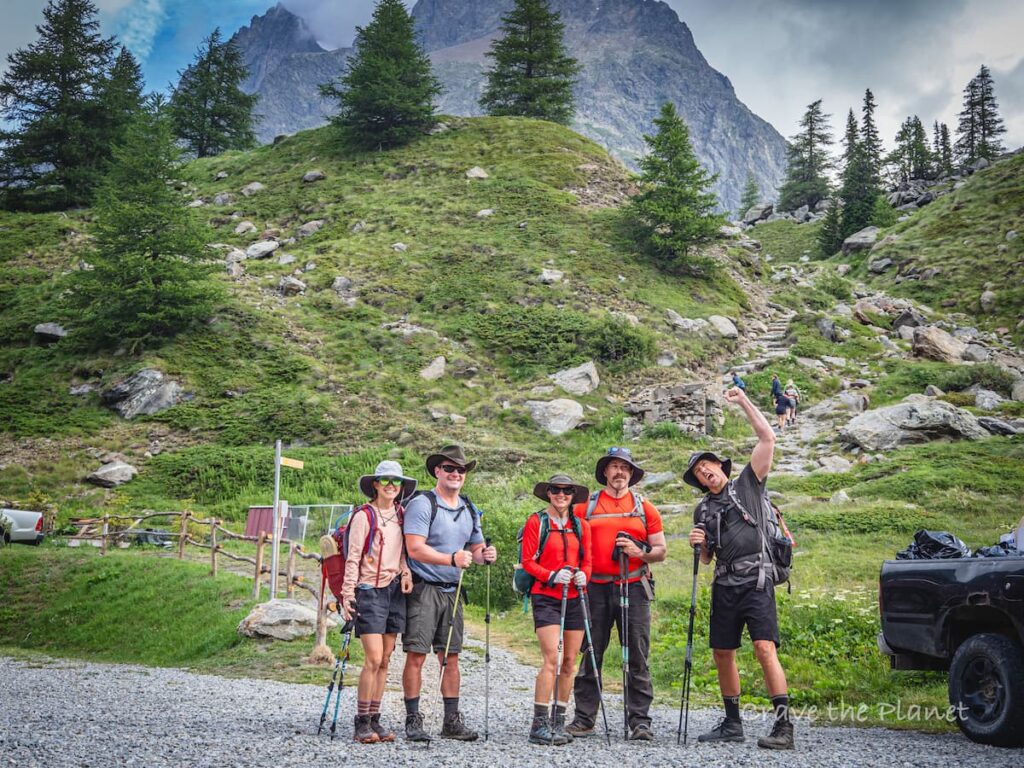
When setting off on the iconic Mont Blanc trek, adequate preparation is vital. You’ll need to carefully consider equipment, training, and logistics to ensure a safe and enjoyable journey around Western Europe’s highest peak.
Essential Gear and Clothing
Gear : For optimal comfort and safety, invest in quality hiking boots and trekking poles . Your boots should offer good support and be well broken-in to prevent blisters. Choose trekking poles for stability and to reduce strain on your knees.
Clothing : Dress in layers to adapt to the mountain’s varying temperatures. Include moisture-wicking underlayers, an insulating layer, and a waterproof outer layer. Don’t forget a hat and UV-protection sunglasses.
Physical Fitness and Training
To tackle the trek comfortably, work on developing your cardiovascular endurance, strength, and balance. Include long walks, cardio workouts, and strength training in your regimen. Start preparing months in advance to ensure you’re in good physical shape.
Navigation and Guides
Consider hiring a local guide to enhance your journey with insights into the local culture and history. If you opt for self-guiding, a detailed map and itinerary are essential. Familiarize yourself with the route’s navigation points beforehand.
Accommodation and Reservations
Plan your overnight stays well in advance. Options range from mountain huts to hotels and campsites. Booking refuges and huts can be done online, but it’s crucial to secure your reservations early as spaces fill up fast. You can store your luggage in Les Houches for your hiking trip.
Final Verdict: Ways to Book a Hut to Hut Hiking Trip
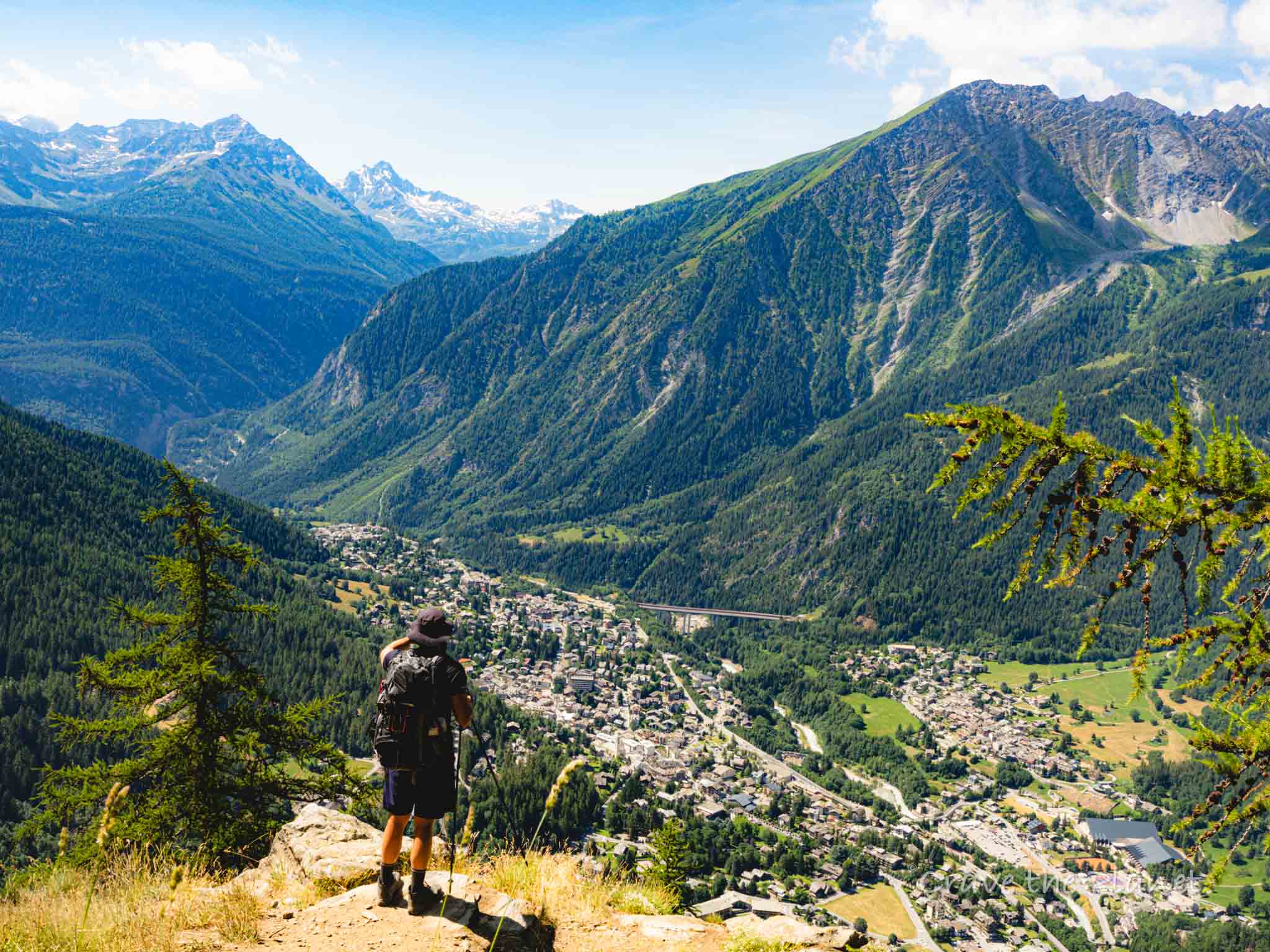
Self-Guided Tour Planning Service
- [Self-Guided] - You're on your own once you start
- Must book in Oct to Jan of year prior to hike
- Fully done for you route
- Service finds and books your huts
- Maps provided on app
What we liked: The logistics of the TMB and other hut to hut hikes can be very daunting, especially if you don't speak Italian and French.
Note: Lesser known trails are often easier to book.
- Ease of route
- No finding or dealing with huts
- Tapping into expertise
- No waiting for slow hikers
- No feeling rushed if you're slower
- Less control of dates
- No guide on the trail
- Unknown - you didn't "plan"
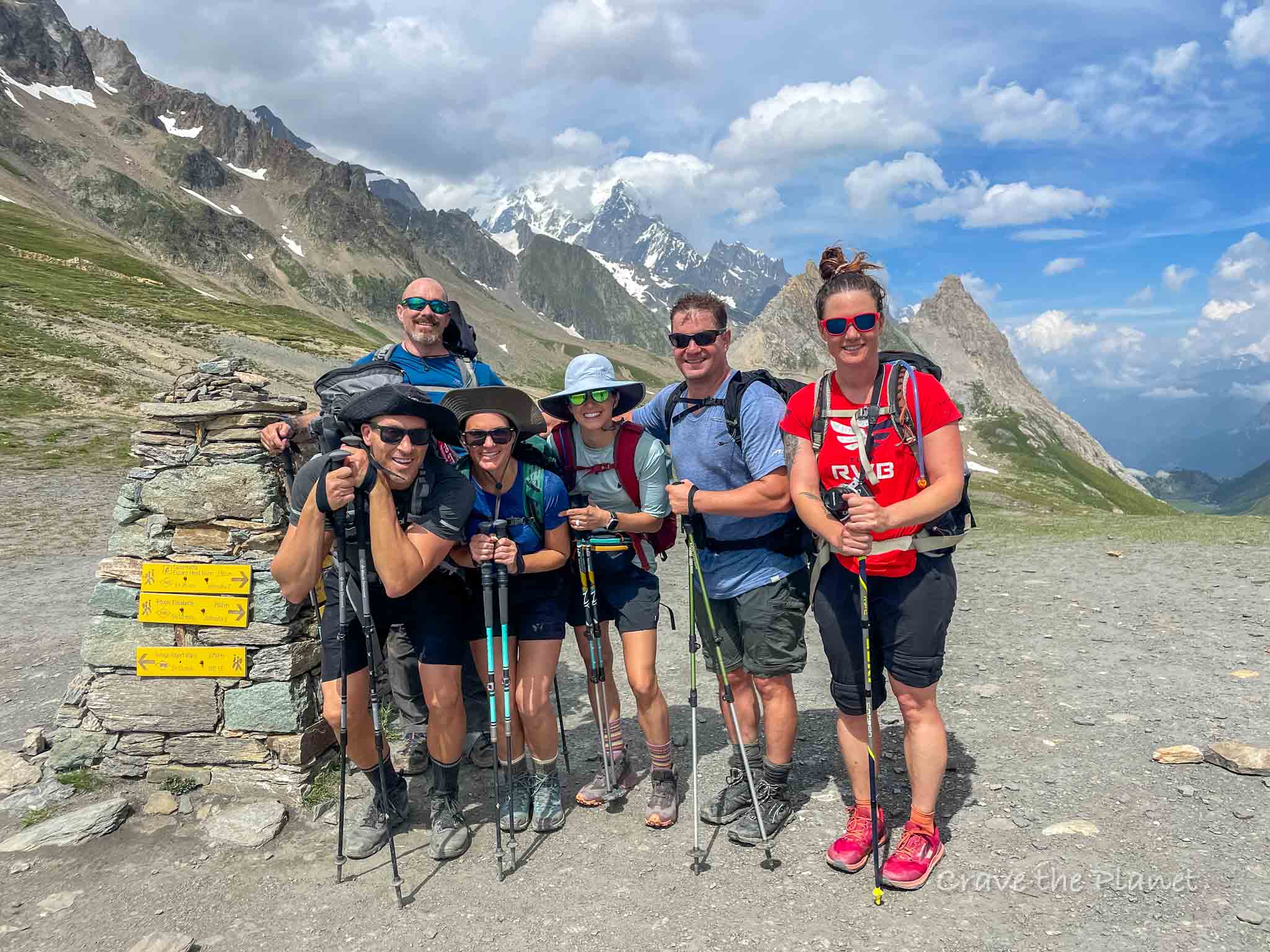
Guided Group Tour : 4 Days
- small groups (<10 typically)
- local Chamonix guides
- all transfers/breakfast/dinner/accommodations included
- airport transfer included
- stay in the insanely beautiful Rifugio Bonatti and other huts at high elevation
What we liked: Designed for busy people that want to experience the highlights of the Tour du Mont Blanc without having to take 2 weeks of their precious vacation time. Everything is done-for-you and you can show up and relax in the most stunning mountains.
Note: The standard price includes shared rooms in the huts.
- All transfers included
- Best price for a guided trip
- Local Chamonix Guides
- At the mercy of group pace
- Not the full circuit
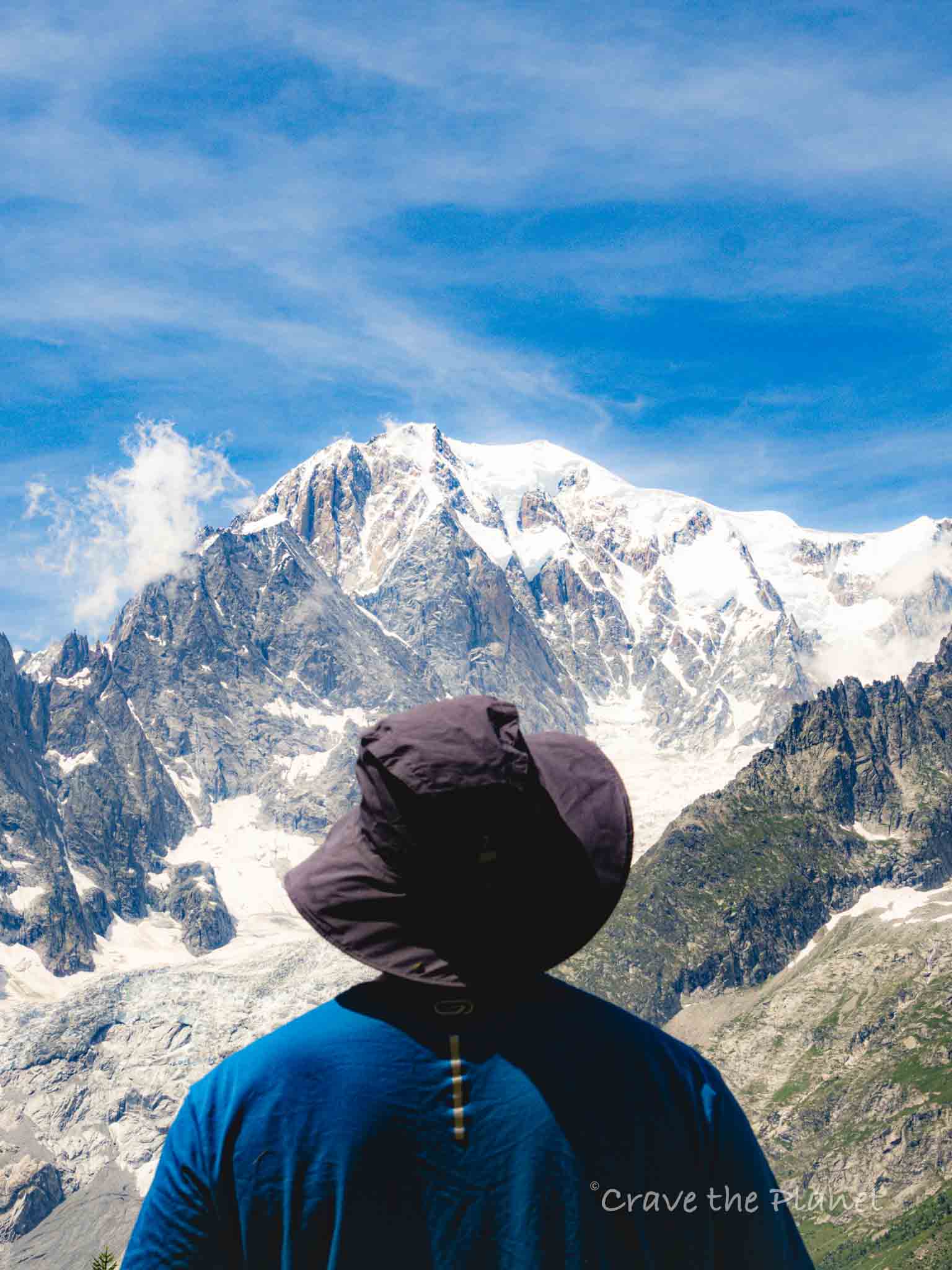
DIY: Book Your Own Huts
- Cheapest Option
- Most Freedom
- Take side excursions as you like
What we liked: The challenge of it. It's so fun to route plan, find trails and the huts you want. Often it's not the expense saved, but the learning of the trail while planning that is satisfying.
Note: Be prepared to spend some time with spreadsheets and wait weeks for replies from hut owners. BONUS: Click on the link to watch my 10 part video series on HOW to book a hut to hut trip. It's a Dolomites hut trip but it's basically the same process for TMB.
- Cheapest option
- Most freedom
- Learn the Trail by planning
- You must be organized
- Map skills are essential
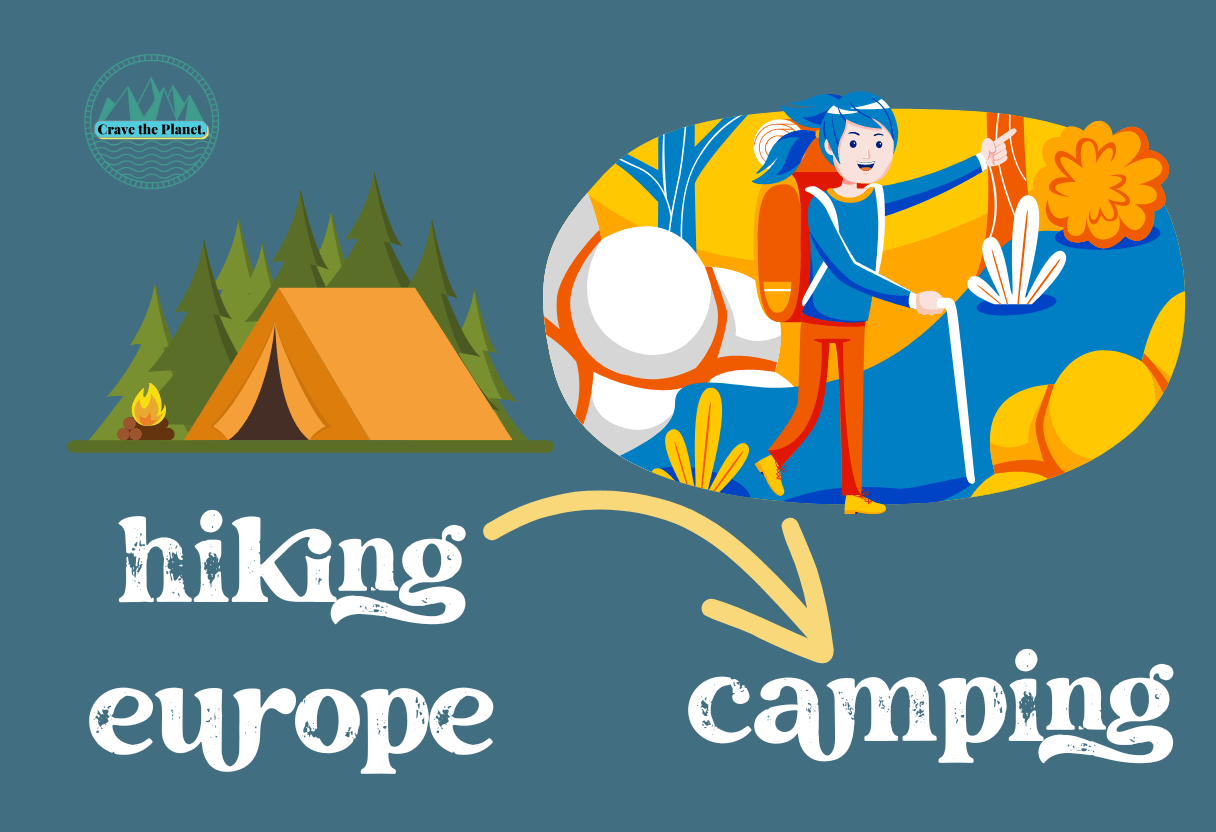
- campgrounds can be crowded
- reservations often needed in advance
- Wild camping is prohibited or limited by elevation
Not really my favorite thing for hut to hut trails in Europe. The huts are quite often the best part of the hiking trip and the rules are so complicated about wild camping.
- Price is good
- More Flexibilty
- Wild camping is tricky
- Rules change
- harder and heavier pack
Food and Water Provisioning
While refuges will often offer meals, carry enough food for snacks and emergencies. Hydration is equally important — bring a reusable water bottle and know your refill points along the trek.
Safety Considerations
Understand the potential dangers such as avalanches and weather conditions . It’s also advisable to have knowledge of symptoms and remedies for altitude sickness . Carry a first-aid kit and a means of communication for emergencies.
Local Regulations and Impact
Respect the environment by adhering to local regulations . Minimize your impact by staying on marked trails, disposing of waste properly, and being considerate of wildlife and local communities .
Travel and Accessibility
Travel to Mont Blanc typically involves flying into Geneva, Milan, or Lyon, followed by a transfer to Chamonix. Transfers can be arranged via bus, rental car, or private services. The area is well serviced but planning is essential for a smooth journey.
Cultural Insights
Immerse yourself in the regional culture by learning about the history and customs of the Alpine communities. Engage with locals to enrich your trekking experience and gain unique insights.
Tips for Solo and Group Hikers
Solo hikers should check in with someone regularly, while those in groups should establish a pace suitable for all members. Whether alone or with others, always inform someone of your itinerary and expected return.
Mont Blanc Hike Itineraries
When planning your adventure in the Mont Blanc massif, choosing the right itinerary is essential for making the most of your hiking experience. Whether you’re seeking a full circuit or a day hike, each path provides a unique perspective of France, Italy, and Switzerland’s shared peaks.
Self-Guided Booking Option
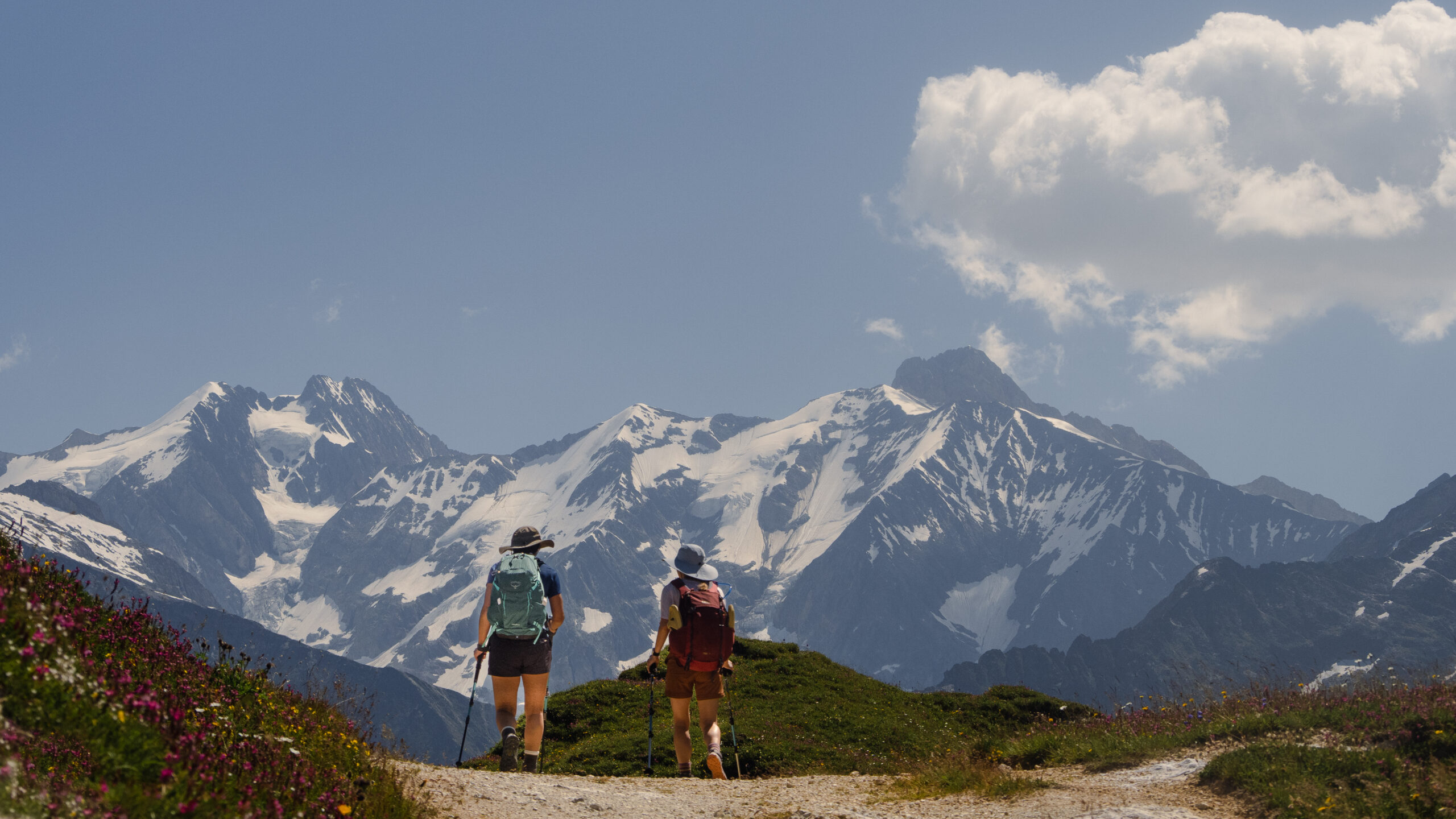
Tour du Mont Blanc Hike
Tour du Mont Blanc is a challenging circuit that spans across three countries, Switzerland, Italy, and France. It is approximately 105 miles long and can take up to 11 days to complete.
Overall Best Self Guided Planning Service: Alpenventures Unguided
This firm is great for finding secluded variants (like the one by the La Gorge gondola), private rooms, and providing maps. They have multiple ways to hike the TMB from a short 4 day to 11 days and everything in between. You can also arrange higher levels of "comfort", i.e. private rooms.
- Glacier Filled Raw Beauty
- Wildflowers and Wildlife
- Food is Local and Delicious
- Most Famous Trek in Europe
- Variable Hospitality
- Serious Elevation Gain
- Complicated and Tedious Bookings
- Not for Total Beginners
Tour Du Mont Blanc Circuit
The Tour du Mont Blanc (TMB) is a renowned circuit that guides you through three countries—France, Italy, and Switzerland—encompassing approximately 170 kilometers of trails. Starting from Chamonix in France or Courmayeur in Italy, you could complete the loop in about 11 days, with stops in charming locales such as Les Houches, Les Contamines, Champex, and La Fouly, experiencing diverse alpine environments along the way.
Alternate Routes and Sections
For those unable to commit to the full TMB, alternate routes and section hikes offer a customizable experience. You may prefer tackling smaller sections of the TMB, like the stretch from Chamonix to Champex, which still affords stunning vistas and cultural encounters. Each segment of the trail allows you to immerse yourself in the valleys and villages of the Mont Blanc region at your leisure.
Day Hikes and Shorter Treks
Day hikes and shorter treks provide an opportunity to witness the beauty of Mont Blanc without the multi-day commitment. Popular day hikes such as the hike up to Lac Blanc start near Chamonix and can be completed in a few hours, presenting breathtaking panoramic views for a brief yet memorable adventure.
Extended and Challenging Routes
For seasoned hikers looking for an extra challenge, extended and challenging routes like summit attempts to Mont Blanc itself are available. These demanding treks typically require advanced preparation, a high level of fitness, and often a mountain guide. Completing the ascent gives you the unparalleled satisfaction of conquering Europe’s highest peak.
| TL;DR From Author
Don’t let unexpected changes derail your travel plans – with travel insurance you can have peace of mind knowing that you’re covered if you need to alter your bookings. Protect your investment and travel with confidence by securing travel insurance today.
Seasonal Highlights and Challenges
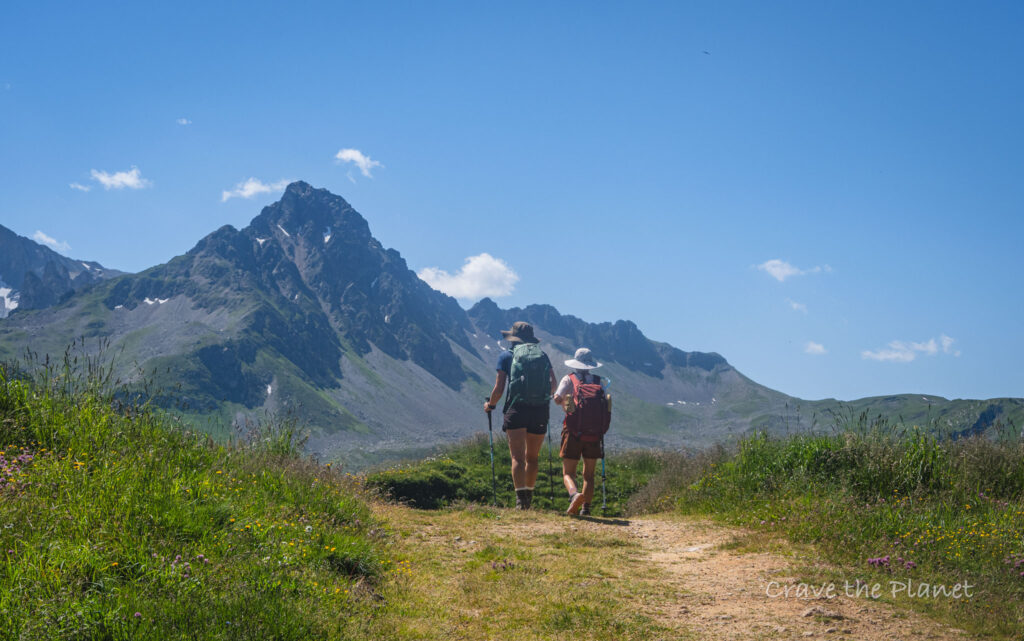
While planning your hike on Mont Blanc, you’ll find each season offers unique experiences along with its own set of challenges. From the vibrant wildflowers of spring to the stark beauty of alpine scenery in winter, it’s important to consider how seasonal variations can shape your trek.

Flora and Fauna
In spring, Mont Blanc’s trails are dotted with a variety of wildflowers such as alpine roses and edelweiss, offering a spectacular display. However, this is also a time when wildlife is most active, and you might encounter mountain goats, marmots, and chamois. Be mindful that while the fauna presents opportunities for wildlife viewing, it also requires you to give animals space and respect their habitats.
Landscape and Scenery
The landscape and scenery vary greatly throughout the year. Come summer, you’ll be welcomed with lush green valleys and panoramic views of quaint villages. The mountain passes are typically clear, and this is the prime time to witness the majestic alpine scenery without the hindrance of snow. On the other hand, autumn paints a picturesque setting with golden hues but also brings shorter days and the potential for early snowfall in high passes, which could affect visibility and trail access.
Weather Trends and Variability
Understanding the weather trends and variability is crucial for a safe journey. Summer offers ideal weather conditions with warm temperatures , although you may encounter occasional thunderstorms. By contrast, autumn sees cooler temperatures and an increased chance of rainfall . Early season hikers may still find snow on higher trails, which can pose the risk of avalanches. It’s essential to keep abreast of weather conditions before and during your trek to stay safe and avoid seasonal dangers.
Accommodation and Facilities Along the Trail
When embarking on the Tour du Mont Blanc, you will find a variety of accommodation options ranging from mountain huts to hotels, catering to different comfort levels and budgets. Know that facilities vary from basic to luxurious, ensuring a restful night after a day’s hike.
Mountain Hut Amenities
Mountain huts, or “refuges” , provide a quintessential hiking experience in the Alps. You can expect:
- Basic sleeping quarters : Dormitory-style beds or bunk beds with shared facilities.
- Food : Most huts serve home-cooked meals and have a communal dining area.
- Comforts amidst the wilderness: Some huts go beyond basics, offering hot showers and even Wi-Fi connections.
Please note that the remoteness of these huts often dictates the level of amenities you can expect.
Hotels and Alternative Lodging
If you’re after a touch of comfort or privacy, various hotels and alternative lodging options are available:
- En-suite rooms : Many offer private bathrooms for added comfort.
- Lodging flexibility : Choose from the luxury of five-star hotels to quaint inns and family-run guesthouses.
- Personalized stays: Tailor your accommodation to your preferences and budget.
Whether in a valley town or a smaller community, you’ll find lodging to rejuvenate before the next day’s hike.
Camping Areas and Bivouac Sites
For those who prefer to camp:
- Designated camping areas : These typically offer basic amenities like toilet facilities and sometimes showers.
- Bivouac sites : For a closer-to-nature experience, these are more rudimentary and usually located near refuges.
- Respect regulations: Always adhere to local guidelines on camping to preserve the pristine environment.
Camping offers flexibility and the chance to truly immerse yourself in the stunning alpine landscapes.
Logistical Planning for Mont Blanc Hike
When undertaking the Mont Blanc trek, thorough logistical planning is essential. The key elements include securing your accommodations well in advance and understanding your options for local transportation around the region.
Making Reservations for Accommodations
Begin your planning by booking accommodations for the duration of your hike. Due to the popularity of the Tour du Mont Blanc, it is imperative that you book your refuges, huts, or hotels months ahead of your trip, especially if you’re hiking in the peak season between June and September. You have a range of options from full-service hotels to basic mountain huts, with varied levels of comfort and amenities.
- Refuges/Mountain Huts: Offer communal sleeping areas; meals often included.
- Hotels: Provide private rooms; more amenities and higher comfort level.
Arranging Local Transportation
Next, consider how you’ll navigate local transportation. Your starting point is typically Chamonix, and from there, you’ll rely on a mix of buses, trains, and sometimes taxis to move between different sections of the trail or to return to your starting point after the hike.
- Buses: Connect major towns; schedules are seasonal.
- Trains: Useful for longer distances between certain towns; scenic routes.
- Taxis: Available for more direct or off-schedule travel; can be reserved in advance.
Remember, your timing needs to sync with public transport schedules, which can sometimes be limited, so always check the latest timetables.
Health and Safety on Mont Blanc
When planning your hike up Mont Blanc, your health and safety are paramount. In high-altitude environments, you must be aware of the specific risks associated with altitude sickness and the unpredictable nature of the terrain, which can lead to accidents.
Dealing with Altitude and Health Risks
Altitude sickness is a not a significant concern when ascending Mont Blanc. The higher you go, the less oxygen there is available in the air, which can result in symptoms like headache, nausea, dizziness, and, in severe cases, life-threatening conditions such as high altitude pulmonary edema (HAPE) or high altitude cerebral edema (HACE).
Managing Risks and Preventing Accidents
Your safety on Mont Blanc hinges on preparation and respect for the mountain’s challenges:
- Stay informed of the weather conditions ; sudden changes in weather can increase the risks of avalanches and other dangerous situations.
- Ensure you have the necessary safety equipment , including a helmet, crampons, and an ice axe, and know how to use them effectively.
- Familiarize yourself with the signs of an avalanche —cracks in the snow surface, whumping sounds, heavy snowfall, or rain on new snow—and know the correct actions to take if one occurs.
- Always hike with a partner or in a group and inform someone about your plans and expected return time.
Remember, safety on Mont Blanc starts with thorough preparation and an awareness of the health risks and safety challenges posed by the mountain. Stay vigilant, stay informed, and enjoy your adventure with the confidence that comes from knowing you are well-prepared.
Cultural and Historical Aspects of Mont Blanc Region
The Mont Blanc region, with its rich tapestry of culture and mountaineering history, beckons you to experience its unique local customs and historical significance across France, Italy, and Switzerland.
Local Culture and Customs
You will discover that the Mont Blanc region is a melting pot of French, Italian, and Swiss influences, each adding distinct flavors to the local culture. Traditional alpine foods such as fondue , raclette , and polenta highlight the regional cuisine, offering you a taste of the diverse culinary heritage. Festivals and music are integral to local customs, with events like the Cosmo Jazz Festival enhancing the cultural landscape and providing a vibrant backdrop to your hiking adventure.
History of Mountaineering in Mont Blanc
Mountaineering here is not merely a sport; it’s a part of the historical fabric of the region. The history of mountaineering in Mont Blanc is illustrious, with the first recorded ascent by Jacques Balmat and Michel Paccard in 1786. This pivotal event marked the birth of mountaineering and placed the region firmly in the annals of adventure history. Today, you are following in the footsteps of brave pioneers who shaped mountaineering as a discipline and transformed the Mont Blanc massif into a symbol of human ambition and exploration.
Concluding Advice for Mont Blanc Hikers
In rounding up your Mont Blanc adventure, it’s imperative you’re well-prepared and ready to immerse in the post-hike camaraderie unique to this experience.
Final Tips and Recommendations
- Preparation : Ensure you’re physically and logistically prepared for the hike, considering factors such as the best time to hike Mont Blanc which typically falls in the summer.
- Equipment : Invest in good quality hiking boots and poles, and be aware of the snow conditions at higher altitudes in the spring.
- Pacing : Remember that the Tour du Mont Blanc can be completed at various paces; choose one that aligns with your ability and preference.
- Accommodation : Plan your stays, whether in mountain huts or hotels, and book in advance, especially during peak season.
- Safety : Always prioritize safety over summiting; weather conditions can change rapidly.
Post-Hike Reflections and Community
- Sharing Your Story : Engage with the hiking community to share your experiences and listen to others, possibly giving you insights for future adventures.
- The Bucket List : Crossing Mont Blanc off your bucket list is a monumental achievement; reflect on your journey and consider documenting it in a hiking log or a blog.
- Staying Connected : Maintain the bonds you’ve built with fellow hikers and stay connected through online forums, social gatherings, and planning future hikes together.
Hiking Mont Blanc is as much about the journey as it is about the destination. Treasure your time on the trails and embrace the memories and friendships you’ll forge along the way.
Frequently Asked Questions
When planning your Tour du Mont Blanc experience, understanding the specifics can make or break your trek. These FAQs aim to give you clarity on the ideal times, the preparation necessary, and what to expect during your adventure.
What is the ideal season for trekking the Tour du Mont Blanc?
The best time to hike Mont Blanc is typically between July and August. During these months, you’ll enjoy clear trails and mild weather, making the experience more enjoyable. However some hike in June and September but with more challenging weather conditions.
How many days are needed to complete the Tour du Mont Blanc circuit?
Completing the Tour du Mont Blanc circuit usually takes about 10 to 14 days, though this can vary based on your pace and the exact route you choose.
What are the challenges of hiking Mont Blanc for beginners?
Beginners may find the elevation gain and loss of around 32,800 feet to be a challenge, along with the variable weather and the need for proper acclimatization.
Is it advisable to hike Mont Blanc without a guide?
Hiking without a guide is possible if you have experience and are well-prepared, but those new to alpine trekking should consider a guided tour for safety and navigation purposes.
What is the total distance of the Tour du Mont Blanc hike?
The Tour du Mont Blanc covers a total distance of roughly 170 kilometers or 105 miles, encircling the Mont Blanc Massif.
Are there specific months to avoid when planning a hike on Mont Blanc due to weather conditions?
You should avoid the off-season months, especially from November to early May, due to heavy snowfall and potential avalanche risks on the mountainous trails.
Planning your trip?
- 🏨 Book your perfect stay on Booking.com
- 🎢 Make your trip more exciting with GetYourGuide
- 🚗 Hire a car with Discover Cars
- ✈️ Find cheap flight tickets with WayAway
- 📲 Buy eSIMs with Airalo
- 🥾 Get off the beaten tourist path with Fully Planned and Booked Self-Guided Hut to Hut Hiking Trip
- 🥾⭐️ Step into social adventure with Guided Group Adventure and Hiking Tours in Europe with Local Guides.
We hope this guide on the best time to hike Mont Blanc has given you the proper information to plan your visit to this incredible trek.

Author profile : Morgan Fielder is a Doctor of Physical Therapy and passionate hiker who believes in exploring the world on foot with good food. Follow her journey as she shares science-based hiking tips and advocates for sustainable tourism.
- Register | Login
The Tour du Mont Blanc is one of the most exhilarating walks in Europe. It is a challenging walk that reveals Alpine splendor every step of the way, but it has a notoriously short season. There is basically one reason for this: Snow! Weather is one of the most frequently asked questions about the tour, so we aim to give you all the tools to ensure you have no worries about the Tour du Mont Blanc weather before you go.
Tour du Mont Blanc Season
The walking season for the Tour du Mont Blanc is from June to September every year. Most other long distance hikes base their season on when the weather starts to get a bit worse, and the accommodations begin to close down. The Tour du Mont Blanc is different. All eyes are on the trail come June to see when the paths are cleared of snow, enough for hikers to get out there and walk. Mid-June is the most accurate start date anyone can give and similarly, the first couple of weeks in September is when it is likely to close down. It is recommended to book your trip well within these dates to guarantee the route will be open and to avoid any poor underfoot conditions.

There will always be snow on the peaks, just hopefully not on the path!
Tour du Mont Blanc Weather
Before heading off on the Tour du Mont Blanc, keeping your eye on the weather is vital, particularly if you are travelling in June or September. There are some fantastic, accurate weather sites: https://www.chamonix.net/english/weather-forecast
https://www.mountain-forecast.com/peaks/Mont-Blanc/forecasts/2000
https://chamonix-meteo.com/chamonix-mont-blanc/weather/
In general, the weather while you are walking on the route should be warm and dry. However, there will be the occasional days of rain, so always pack appropriately. You can read our blog post on what to pack for the TMB for more information.
Tour du Mont Blanc Webcams
The best way to check exactly what is happening on the ground before you go is to take a look. The TMB has a wealth of Webcams so you can see up to date images of where you will be walking and see for your self how glorious/not so glorious the weather is. The best set of webcams are on the official Tour du Mont Blanc Website . Underfoot conditions There is an underfoot condition which the French call Neve. This is snow which has been through the freeze/thaw cycle and is therefore incredibly slippy. It is recommended to take it slowly and trust your judgement if you come to any patches of neve. Walking poles help with the crossing too, adding stability.

Always pack for all weathers. Even when it is sunny, it can be cold and vice versa
It is recommended to always wear sun cream on this trip. Even when the sun is not apparent in the sky, the UV rays are still penetrating the clouds, and you can still feel the effects of the sun on your skin.
Using Local Judgement
As far as the weather goes, it is always a great idea to listen to what the locals are saying. If they think the wind is too high on a particular section, heed their advice. Nobody knows this area like the people who live there.

Tour du Mont Blanc in Comfort

Tour du Mont Blanc in Huts

Follow us on social media
- twitter-x-logo@2x
Happily Ever Hiker
Tour du mont blanc: our epic guide to all you need to know.
The Tour du Mont Blanc is among Europe’s greatest and most widely known hikes covering an extremely long distance, and completing this hike should be at the top of your travel list.
There’s no denying that doing the Mont Blanc tour can be the most remarkable thing you can plan to do while visiting Europe, which is why we have an epic guide with everything you ought to know about this tour!
Table of Contents
What Is The Tour Du Mont Blanc?
The Tour du Mont Blanc is one of the most famous Mont Blanc trekking trails, and it also happens to belong to the list of world’s oldest trekking trails.
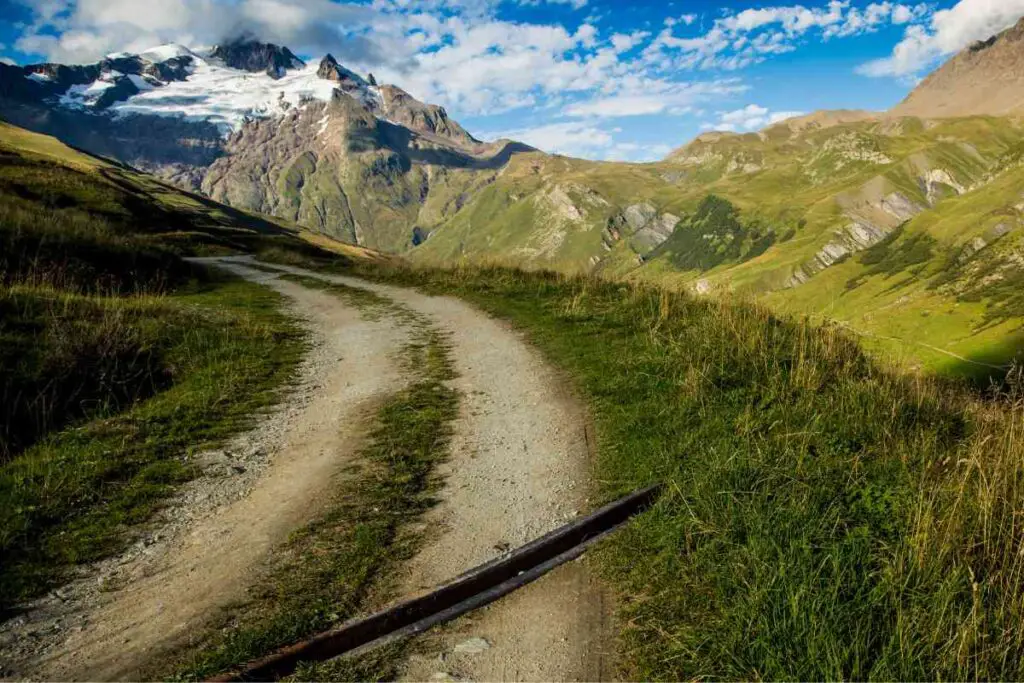
The loop is frequently featured in articles and lists titles as the ’10 Best Hiking Trails In The World,’ which is only fair given how spectacular the trail and its views are.
We’ll talk about the details of the trail later in this article, but expect breathtaking views, delectable food, and authentic mountainous adventures.
On just the first day, you’ll see massive snowy mountains, massive ice caps, majestic streams, and lush greenery.
Who Formed The Tour De Mont Blanc?
The trekking routes that comprise the tour du Mont Blanc loop, similar to the greatest treks in the world, were initially walked by shepherds who used to move their cows from one valley to the other.
However, it was a geologist from Switzerland who popularized this tour in the 18 th century.
The funny thing is that this “discovery” of his happened by accident as what he was trying to do was to figure out how to ascend Mont Blanc.
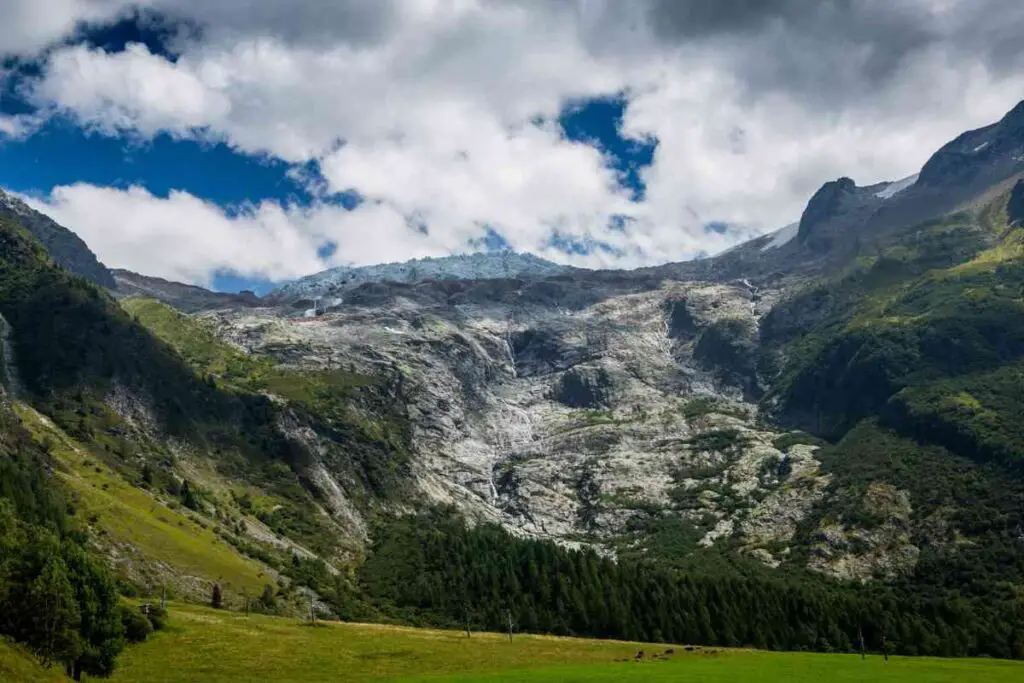
However, he ended up completing a circular trip around the entire mountain searching for the most suitable pathway, and thus was the first one (at least to our knowledge) to walk this trail.
The exact route the geologist followed is unconfirmed, but he went back to the mountain many times, desperately trying to reach the top.
Following several unsuccessful tries and circles around Mont Blanc, promised remuneration to whoever would reach the peak of the mountain.
It was in the late 1780s that two people from Chamonix were given the reward and managed to make the first climb.
He then was the third one to take the same path and reach the top of this famous European mountain.
Historically, Celtic tribal groups and the Roman army had used Col du Bonhomme, a spot located on the tour du Mont Blanc, as a route from which they moved their supplies through the Alpine areas.
Even today, you can discover the tattered remains of the Roman people and armies, with an old bridge built by their army remaining in good condition there, to many people’s surprise.
Where Is The Tour Du Mont Blanc?
TMB circumnavigates the mountain range, passing through Switzerland, Italy, as well as France.
Despite the fact that the trail does not reach the summit, everybody is familiar with Mont Blanc, and its name draws thousands of backpackers, hikers, and mountaineers each year.
How Long Is Tour Du Mont Blanc?
The Tour du Mont Blanc loop is a circuit that is 170 kilometers long and circles the Mont Blanc Mountain range.
Tour Du Mont Blanc Hike

Tour Du Mont Blanc Starting And Finishing Point
The Tour du Mont Blanc starts and finishes in Chamonix, an alpine town and adventure sports mecca on the French side of the Alps.
Despite its small size, Chamonix has always been overflowed with tourists and people looking for adventure thrills.
It is also a highly regarded ski retreat at the bottom of Mont Blanc, which means that there are many skiers and outdoor enthusiasts of all levels, as well as a booming mountaineering community and an abundance of trekking and mountain-bike paths to explore once the snow melts in the warmer months.
Chamonix is only 90 kilometers from the Geneva Airport and has numerous transportation choices available, rendering it a very accessible Alpine town.
The drive takes slightly more than an hour, bus services approximately 2 hours, and trains take closer to 3 hours, contingent on connections.
This town is also known as the World’s Capital of Adventure thanks to its busy rhythms, a plethora of fun activities, and simply stunning mountain ranges right next to it.
Tour Du Mont Blanc Route/Trail
The route follows a long loop of secluded pathways that circumnavigate the Mont Blanc massif in an anti-clockwise direction.
Of course, you have the option to follow the path in a clockwise direction, but the majority of people tend to go the other way around, and this is one of those cases where it’s preferable to go with the flow.
The trail is not challenging if you have prepared and trained right for it, but there are a lot of steep ascents.
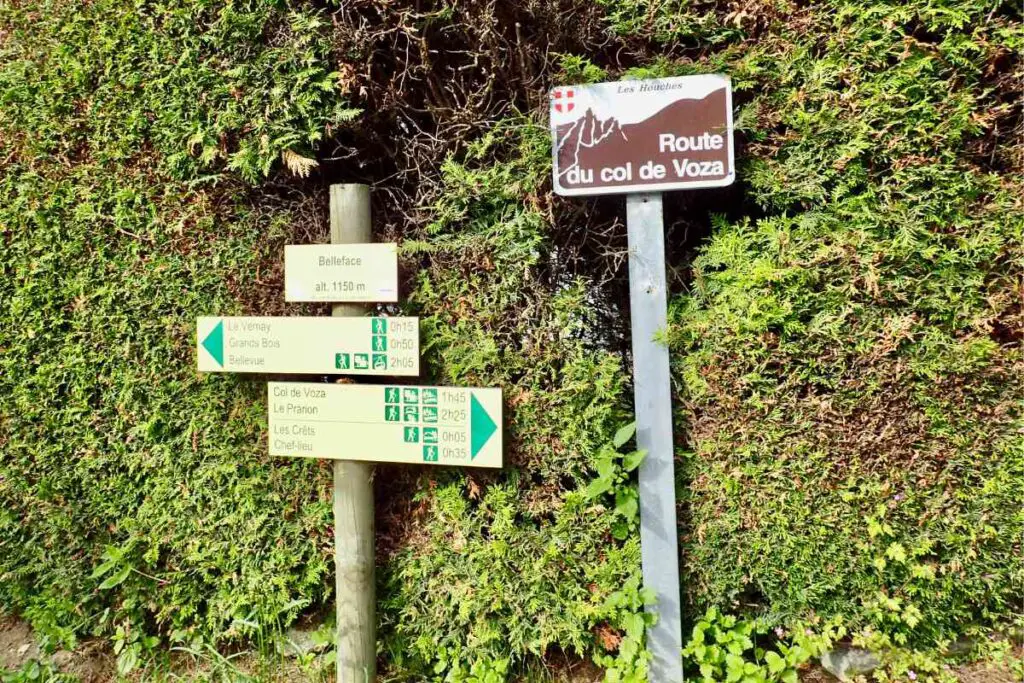
Nevertheless, there are also many variants and easier routes to take, so you can take paths that are slightly more demanding and then continue an easy downhill.
Moreover, the Tour du Mont Blanc trekking trail includes forest areas, desolate rugged terrain, and extensive green hillsides.
You’ll also be surrounded by the ultimate combination of majestic scenery and snow-covered highs above, with each day being unique.
However, if there’s one thing the majority of your tour days have in common, it is the fact that you will be following the same pattern of hiking across hilly areas, or mountain passes, before going down to a Refugio or hotel to rest.
Similarly, your days will begin with an enjoyable uphill walk to a picturesque point where you can enjoy your snack or meal while gazing at the scenery, and then continue with your final hike downhill for a hearty evening meal and some fresh beer.
Tour Du Mont Blanc Altitude
Mont Blanc, Western Europe’s highest mountain, is 4.808 meters above sea level, making its altitude one of the greatest and most challenging ones.
However, as we have previously mentioned the Tour De Mont Black does not involve ascending to its top.
In fact, the highest peak along the standard route is 2.537 meters above sea level, which is considerably lower than the top of the mountain.
This peak is at the Grand Col Ferret, which also serves as a frontier between Italy and Switzerland. Nevertheless, a few alternative routes can take you to the greatest heights.
So, for example, you also have the option of going higher up to enjoy the beautiful scenery from 2.665 meters above sea level. on the Col des Fours or Fenetre d’ Arpette,
Tour Du Mont Blanc Itinerary
Because of the long distance of the trail, most people complete the Tour du Mont Blanc route in 7 to 10 days.
Below you can find the itinerary for a 10-day hiking trip, and which is typically the one most people follow when doing the Tour du Mont Blanc for the first time!
10-Days Itinerary
Day 1: chamonix – les contamines.
On the first day, you’ll take the minibus to Les Houches and start your tour.
This first stage from Les Houches to Les Contamines is filled with lovely pine forest pathways, steep uphills and downhills, and areas of low trees and bushes carpeted with wild blueberry shrubs.

Nevertheless, you won’t be able to avoid the steep hills for the first hour, and if you choose to go from the variant, you can expect approximately 1500 meters of elevation, compared to the 650 meters of the standard route.
If you choose the challenging path, stop for lunch at the Refuge de Miage for some delicious and nourishing salad, and then continue your hike to Les Contamines for a night’s rest and more food.
Elevation Profile (Gain): 1500 meters of elevation gain for the variant, 650 meters of elevation gain for the standard route
Day 2: Les Contamines – Les Chapieux
After spending the night in a chalet, you’ll start the second day of the tour with an uphill trek up to the renowned Col du Bonhomme.
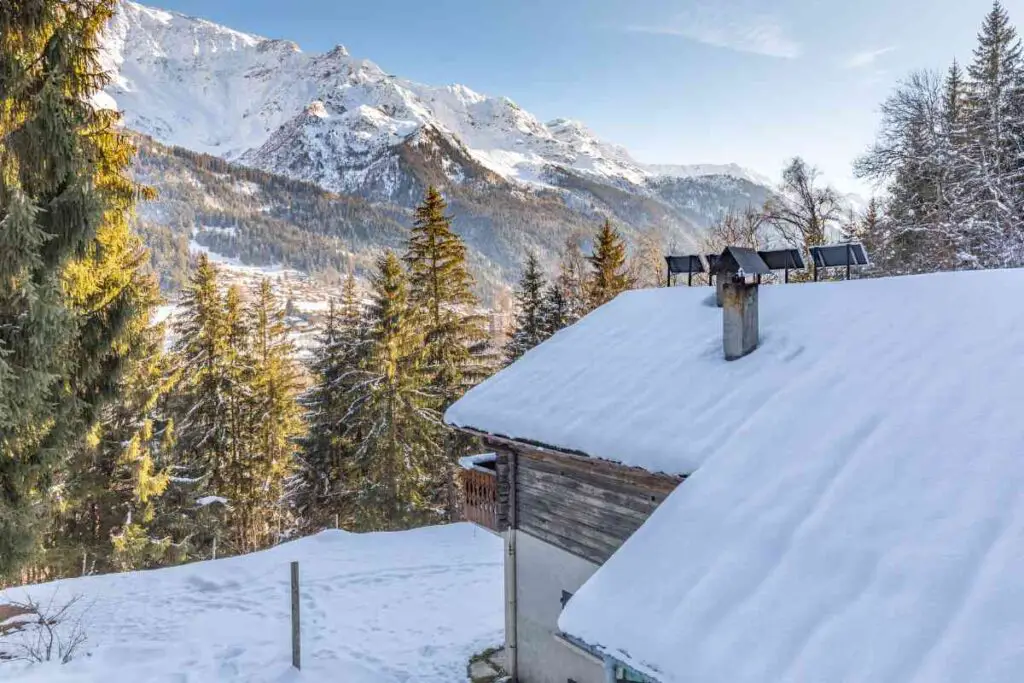
A few hours later towards the late afternoon, you’ll hike across the Croix de la Bonhomme and head straight to Les Chapieux.
This stage of the tour offers much better scenery and is less challenging, so you will certainly enjoy it more.
Les Chapieux is so small that it hardly qualifies as a town, but it’s quite lovely. There are a few guesthouses nearby. There also is a local products shop, where you must absolutely try their goat cheese!
Elevation Profile (Gain): 1300 meters of elevation gain
Day 3: Les Chapieux To Rifugio Monte Bianco
The third day will get you to Italy as you will be on the Col, which is approximately 1000 meters higher than the starting point.

The hike begins with a mild uphill through the valley, followed by several steep hills to the col’s summit. Although there is some altitude gain, this col is among the easiest ones to reach.
After you cross the col and until you reach Refugio Elisabetta it’s an enjoyable downhill. There you can spend some time enjoying some comfort food, and if you choose to stay the night, you’ll get a large dinner and an incredible view of the sunset.
Elevation Profile (Gain): 1000 meters of elevation gain
Day 4: Rifugio Monte Bianco – Courmayeur
This is undoubtedly the simplest hiking day.

An easy walk down the route to Courmayeur (that is nonetheless more than 4 hours long), a little town with many tourists, and you can have a nice break there, dine, enjoy a drink, and walk around the town.
Day 5: Courmayeur – Val Ferret
The fifth day begins with 800 meters of walking up a steep hill for approximately 2 hours, which is not that challenging.
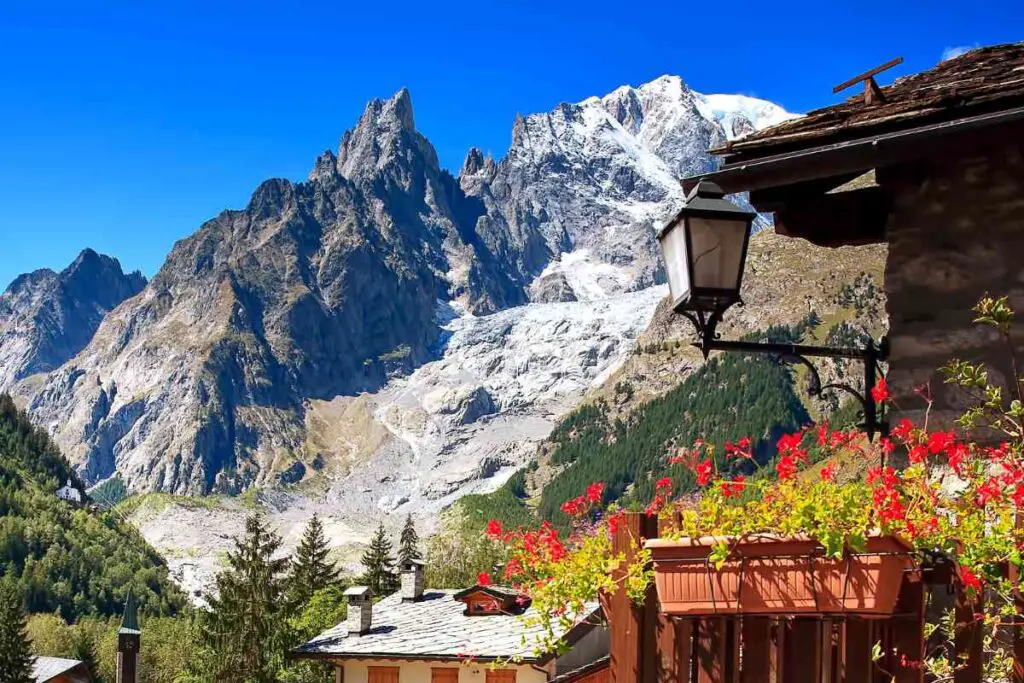
The hike from Courmayeur, at 1224 meters, to Refugio Bertone which is at 1996 meters, is mostly through a lovely forest area full of pine trees and it takes you along the Val Ferret, in between Italy and Switzerland.
When you get to the Refugio at the top, you can decide whether or not to complete the variant, which goes up 500 meters more and is 100% worth it.
Elevation Profile (Gain): 800 meters of elevation gain
Day 6: Val Ferret – La Fouly
On your sixth day, you’ll walk an easy 4-hour trail from Col Ferret to the little town of La Fouly, where you can try the delicious local cheese and other delicacies they offer.

An easier uphill walk all the way to a col will have you literally standing between France and Switzerland! As you descend, you’ll realize that the meal prices in the different Refugios skyrocket but spending some money on food there is worth it.
Day 7: La Fouly – Champex-Lac
This is a pleasant day with a hike through beautiful alpine grasslands and Swiss rural areas. You’ll finish your day in Champex-Lac, an idyllic Swiss settlement with a lovely lake where you can swim on a hot summer day!
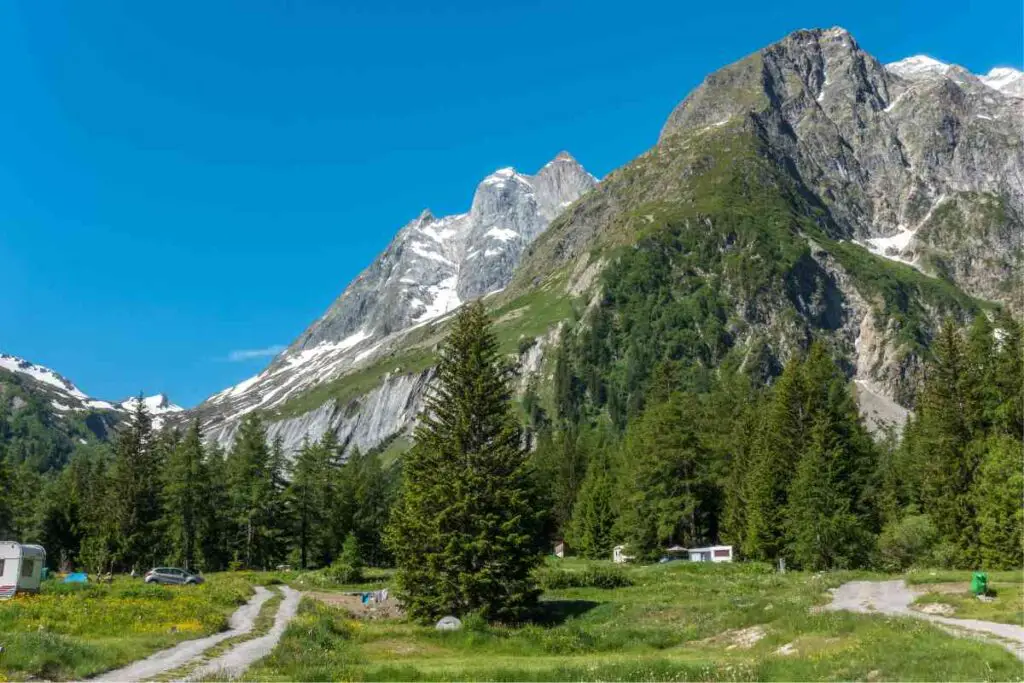
There are also many towns to stop in between, so despite the relatively short hike (in comparison to the 8-hour ones on other days), you need to take into account the hours you’ll spend exploring the towns.
Elevation Profile (Gain): 637 meters of elevation gain
Day 8: Champex-Lac – Trient
After a wonderful night in Champex, you can move on with your journey and begin the long but easy ascent to Bovine. From that point, you can descend to Trient via the Col de la Forclaz.
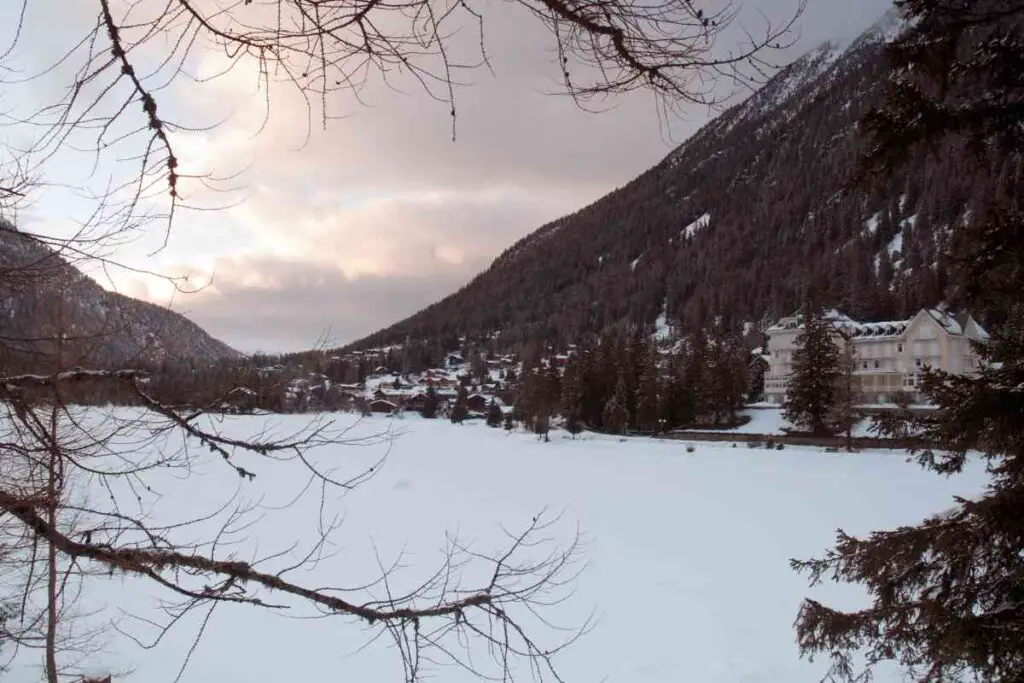
This day begins fairly flat before climbing approximately 1200 meters. The 1200-meter climb isn’t too difficult, and when you get to the top, there is also a cute spot to eat lunch and take in the views.
There are no grocery stores in Trient or La Peuty, so restock in Champex or enjoy your meals in any of the Refugios along the way.
Elevation Profile (Gain): 1200 meters of elevation gain
Day 9: Trient – Argentiere
The penultimate day starts early in the morning with an uphill trek up to Col de Balme, which offers Mont Blanc on a plate.

There’s also a variant that takes you up to Col des Possettes and the Aiguillette des Possettes peak that you can take, while the downhill to La Tour will mark the end of the hiking part of the day, leaving you time to relax and unwind.
Elevation Profile (Gain): 1180 meters of elevation gain
Day 10: Argentiere – Chamonix
The last day of your tour offers either the chance to ascend over Lac Blanc on some daring stairways or choose the standard and easier route.
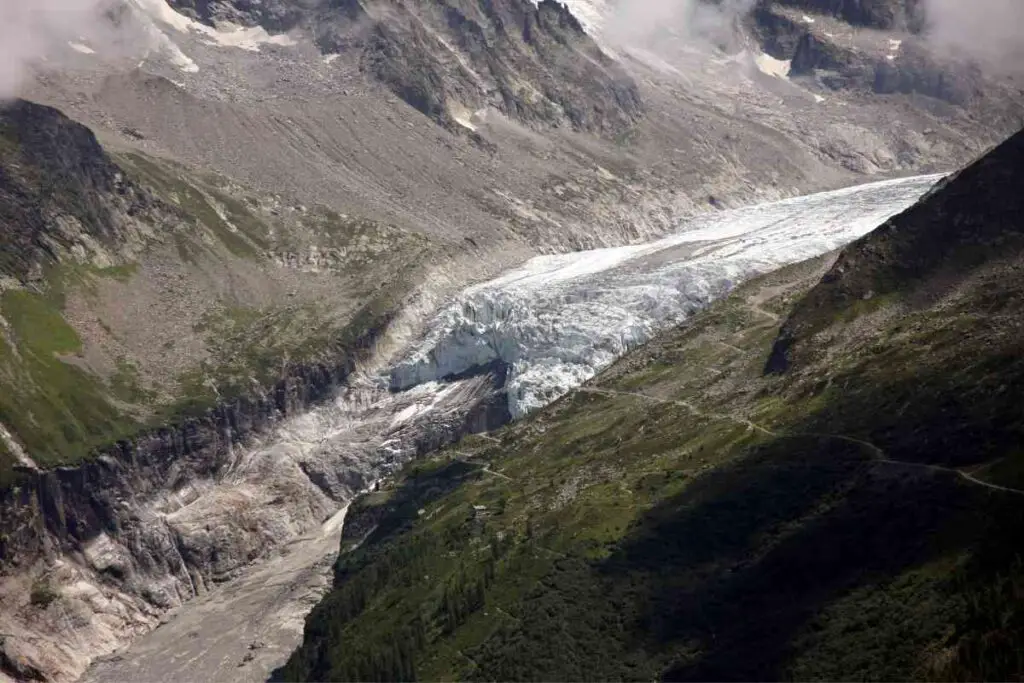
Some of the most breathtaking views are being enjoyed in this last stage of the trip, which will finish with a downhill walk with Chamonix as the final destination.
Elevation Profile (Gain): 1260 meters of elevation gain
Tour Du Mont Blanc Tour Options
There are both guided and self-guided tours you can join to complete the Tour du Mont Blanc, and depending on what you choose to do, the costs will be different.
Here are some examples of guided and self-guided tours offered:
- Macs Adventure Tour
- Tour Du Mont Blanc Holiday
- Alpine Treks
- Wildland Trekking Tour
Tour Du Mont Blanc Map
Mont Blanc Treks offer several maps such as those of the easterly and westerly circuits as well as one of the full circuits around Mont Blanc, and a chart of the elevation profile of the tour.
Tour Du Mont Blanc Packing List
If you are planning on camping throughout the tour, you need to make sure you are packing as light as possible as you will be carrying the extra camping equipment with you which includes a tent and a sleeping bag , as well as a sleeping pad.

The rest of the things you need to carry are:
- Water bottle
- Clothes: fleece or sweater (depending on the weather), extra socks and underwear, shirts and shorts, and long trousers.
- Accessories: bandanas, caps, headlamp
- Microfiber towel
- Power adapter
- First-aid kit
- Passport and/or ID
When To Hike the Tour Du Mont Blanc?
The best time of the year to walk the tour du Mont Blanc is in the summertime when the climate is softer, the sun is up, and all ice has melted.
Given its high altitude and Alpine winters, going there in the summer can guarantee you a good night’s sleep when you choose to camp for the night as well as warmer weather for your hike.
Training For Tour Du Mont Blanc
Depending on which path you take, you should train and get ready for a little more or a little less strain on your legs and work accordingly on your cardio fitness level.
Read next – Is hiking good cardio?
No matter how many variants you choose to hike and how fast or slow you choose to go, you need a great fitness level, so you either have to train consistently for months, even years, before embarking on your journey, or be very athletic and fit.
Previous experience with long-distance hikes will also make this trip easier, but this does not mean you won’t need to prepare for it just because you hiked coast to coast in the UK years ago!
Tour Du Mont Blanc Accommodation
A common question and topic of discussion among hikers to-be of the Tour du Mont Blanc is that concerning the lodging options.
To begin with, there are numerous places to spend the night. If you have a lot of money, you have a plethora of choices.
However, if you’d like to complete your journey without breaking the bank, you can either choose camping or stay in one of the many refugios or guesthouses.
- Find the most affordable places to stay at booking.com
Tour Du Mont Blanc Refuges
A Refugio is a refuge, also called a mountain hut. It is basically a mountain hostel with simple interior decoration and amazing food!
Many Refugios offer private rooms, however, some of them only provide shared hostel-style lodging.
Tour Du Mont Blanc Camping
You also have the option of setting up camp every night. Clearly, it will be the most cost-effective option, but it is also one that allows you to experience this adventure in the best way possible, as it kind of completes the overall experience.
Furthermore, you won’t have to worry about making any reservations, as you can simply arrive at the campground and find a spot to set up your tent.
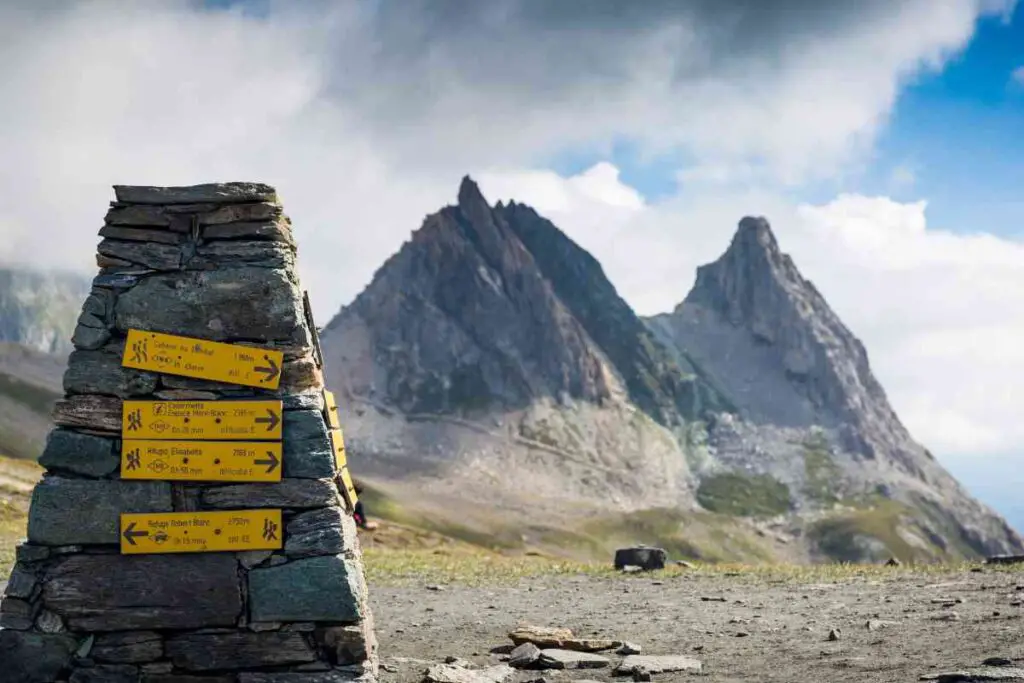
There are numerous ways to organize your trip, in addition to the several accommodation alternatives.
Many people prefer to schedule and plan things on their own, including booking their own accommodation and transporting all their belongings, but sometimes it is better to have some assistance.
During the peak tourist season, which is in July and August, it is preferable to let somebody else book your accommodation and luggage transfers.
Even so, keep in mind that if you choose to stay in accommodations rather than go camping, that means you’ll have to pay in advance and do your best to stay committed to the planned itinerary.
Any delay or injury incident might mean you can lose a night’s stay and, hence, money spent on a room you won’t stay in after all.
On the other hand, if you do the hike off-peak season, you can always make a same-day booking as it is always available in most hotels and guesthouses.
Either way, this website of the Tour De Mont Blanc is very useful for planning your stay throughout the tour.
You can select your intended destination and a precise date, and it will display a list of accommodation options you can stay in, which would include the walking distance from one to the other.
The Bottom Line
The Tour du Mont Blanc is without a doubt an epic multi-day hike on this planet and experiencing this journey is something you will remember forever.
The good thing is that you can always visit this destination again and if you go there on a guided tour the first time, challenge yourself by going on a self-guided tour the next one!
Leave a Reply Cancel reply
Your email address will not be published.
Save my name, email, and website in this browser for the next time I comment.
Latest from Blog

Will Snakes Cross a Rope? Debunking Common Myths
Yes, some snakes can cross ropes, especially if they’re good climbers and the rope provides enough

What to Do if You See a Deer While Hiking: Safe Wildlife Encounters
If you spot a deer while on a trail, the first step is to maintain a

Are Timberlands Good for Hiking? Evaluating Durability and Comfort
While fashion-forward individuals often sport Timberlands in urban settings, a question looms for outdoor enthusiasts: Are

How to Get Better at Hiking Uphill: Techniques for Mastery
Mastering the art of uphill hiking can transform your outdoor experiences, offering not only breathtaking views

Is Hiking Aerobic or Anaerobic: Understanding the Exercise Classification
Often, hiking is primarily an aerobic activity, especially when you engage in it over an extended
Privacy Policy
Ultimate Tour du Mont Blanc Guide: How to Plan Your Epic TMB Hike
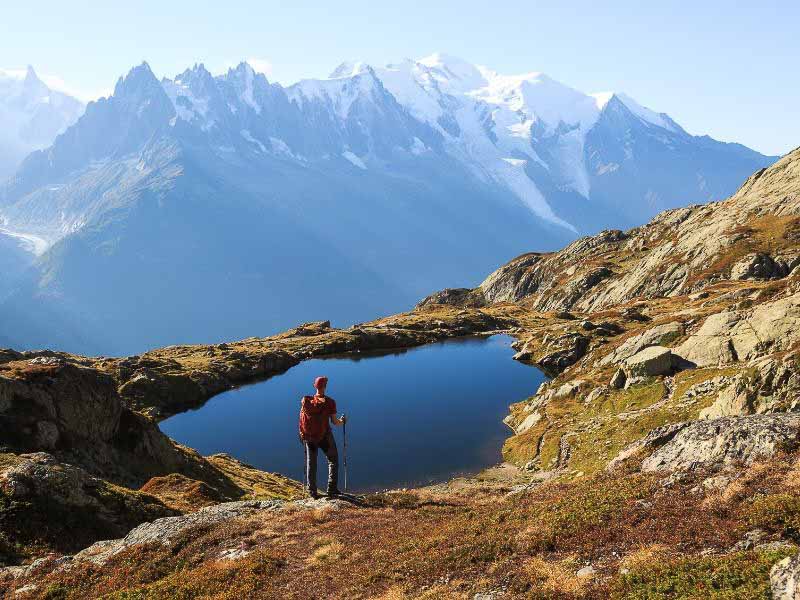
Explore our complete Tour du Mont Blanc guide to find routes, itineraries, expert tips, and the details you need to plan your perfect TMB hike – start today!
The Tour du Mont Blanc hike is not only one of the most popular hikes in Europe, but one of the best long-distance hikes in the world! It’s at the top of many hikers’ bucket list and for good reason.
The classic hiking route takes you through the alps in French, Italian and Swiss Alps.
It’s a beautiful multi-day hut-to-hut hike where you’ll have a warm bed and a hearty meal waiting for you every night.
I did the full Tour du Mont Blanc route before I started a hiking company. It was the first hike I’d done that was more than 3 days. Not long afterwards, I started a hiking company and have since repeated certain sections. Plus, I work with local partners in Chamonix to ensure that you get the most up to-date information.
Read on to find out how to plan your Tour du Mont Blanc hike.
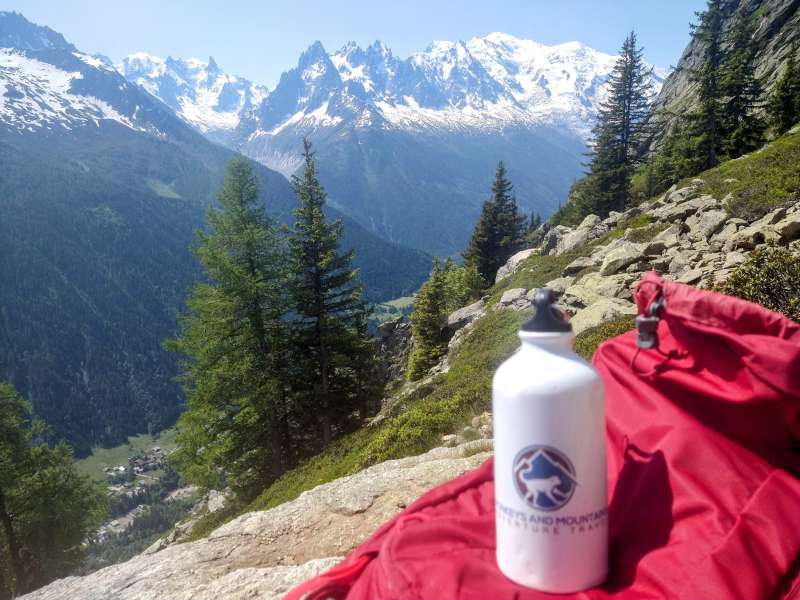
Highlights of the TMB
Col de Voza : Panoramic views of the Chamonix valley.
- Col de Tricot : Mountain pass offering stunning vistas, known for its challenging zigzag path.
Les Contamines : A charming French village that is a popular stopping point.
Col du Bonhomme : One of the first high mountain passes.
Croix du Bonhomme : Another mountain pass offering panoramic views.
- Col de la Seigne : A high mountain pass at 2,516 meters, marking the border between France and Italy, with panoramic views of the Mont Blanc Massif.
Rifugio Elisabetta : Mountain refuge in Italy, known for its stunning vistas.
Courmayeur : Italian alpine town perfect for a rest day, known for its cuisine and mountain culture.
Grand Col Ferret : The pass that crosses from the Italian Alps to the Swiss Alps offering some of the best views of the Grandes Jorasses.
Champex-Lac : Known as the “Swiss Lake,” a tranquil stopping point in Switzerland.
Bovine Route or Fenêtre d’Arpette : Two alternative routes between Champex and Col de la Forclaz; the former is easier, and the latter offers stunning views but is more challenging.
Col de la Forclaz : Another mountain pass and common place for rest.
Col de Balme : The pass back into France from Switzerland, with amazing views of Mont Blanc.
La Flégère and Lac Blanc : Offers one of the closest views of the Mont Blanc massif, which is sometimes reflected in Lac Blanc
What Is the Distance of the Tour du Mont Blanc?

As with all multi-day hiking trails in the Alps there is a “classic” route and then there are variations and shortcuts you can choose from. The main TMB route is:
Distance: 166 km (103 miles)
Total Elevation Gain: 10,000 m (32,700 ft)
Highest Point of the TMB: 2,665 meters (8,743 feet) at the Col des Fours and the Fenêtre d’Arpette
Number of Mountain Passes You’ll Hike Over: 10
Number of Days: 10 (although this can be shortened to 6 or 7 days)
- You can see a map of the tour here from Wikipedia.
Hiking the Tour du Mont Blanc: 3 Ways

Tour du Mont Blanc Guided
Tour du mont blanc self guided, tour du mont blanc on your own.
Below, I’ll outline the pros and cons of hiking the TMB in each of the three ways.
We arrange guided tours with a French guide on request if you already have a small group. Contact us for details.
—————————————–
Tour du Mont Blanc Self Guided Trek
As you can see, the pros far outweigh the cons. That’s why I highly recommend a Tour du Mont Blanc Self-Guided Tour. We offer 6, 7 or 10 day tours, and can also customize one for you.
I do most of my own personal hiking trips as self-guided as well since I love the convenience, and time-saving of having someone else planning all the logistics so that I can just focus on hiking.
Find out more about the difference between guided and self-guided tours .
Planning the Tour du Mont Blanc On Your Own
Planning your own TMB hike is definitely the cheapest option, but also the most time-consuming and requires a lot of research.
If you choose the do-it-yourself option, I recommend that you plan it using a combination of this site: http://www.autourdumontblanc.com/en/, and the TMB: Complete Two-Way Trekking Guide Book by Cicerone Guides. And of course a good map and GPS tracks.
Our Tour du Mont Blanc Self-Guided Tours

6-Day Self-Guided Luxury Tour

7-Day Self-Guided Tours (Dormitory or Private Double Accommodation)

10-Day Self-Guided Tours (Dormitory or Private Double Accommodation)
Booking the Tour du Mont Blanc Refuges Yourself

The disadvantage to the aforementioned TMB site is that it doesn’t provide the elevation gain, nor the distance. It’s also only possible to book some refuges by phone. And the ones you book by email can be slow (if they bother) responding to you. Some also don’t take reservations until spring. Plus, not all the huts are listed on the site.
Also, each mountain hut booking is dependent on the other. I.e. you want to have your reservation secured for Days 1, 2, 3 before you book for Day 4. That way you ensure that you don’t have too short a day or too long.
Furthermore, when I first did the TMB years ago after I confirmed our booking, I was contacted a few days later by two refuges to tell us they were full. As a result, I had to start our bookings from scratch. This happened twice.
It took me hours and hours to plan my first TMB hike, then replan, then re-plan the route again. It’s doable but very time-consuming. It took me approximately 12 hours to book and plan everything. And it was incredibly frustrating.
That’s another reason why I recommend booking one of our self-guided Tour du Mont Blanc trips :
Don’t start by saying that you will do the trek in so and so many days. Take a look at the itineraries, distances and m in elevation gain for the self-guided tours , and see whether the 6, 7 or 10-day tour is the best choice for you.
Our 6 and 7-day tours are the easiest (although still not easy). You’ll take public transportation – buses and lifts, skipping the less scenic parts. Our 10-day tour is the most challenging with more hiking and fewer transfers.

6-Day Tour du Mont Blanc Itinerary
Day 1: Hike from Les Houches – The Les Contamines Hiking Details: 5 hours, 600 m (1968 ft) ascent, ~ 11 km (6.84 miles), plus transfers
Day 2: Les Contamines-Montjoie – Bourg St. Maurice Hiking Details: 6 hours, 1300 m (4265 ft) ascent, ~ 15 km (9.32 miles), plus transfers
Day 3: Bourg Saint Maurice – Courmayeur Hiking Details: 5 hours, 750 m (2460 ft) ascent, ~ 13.5 km (8.39 miles), plus transfers
Day 4: Courmayeur – Champex Hiking Details: 5 hours, 800 m (2625 ft) ascent, ~ 12 km (7.47 miles), plus transfers
Day 5: Champex – l’Argentière Hiking Details: Bovines Route: 5:30 hours, 700 m (2296 ft) ascent, OR Arpette Window: 8 hours, 1200 m (3937 ft) ascent, ~ 14 km (8.7 miles), plus transfers
Day 6: l’Argentière – Chamonix Hiking Details: 5 hours, 950 m (3117 ft) ascent, ~ 10.5 km (6.5 miles), plus transfers.
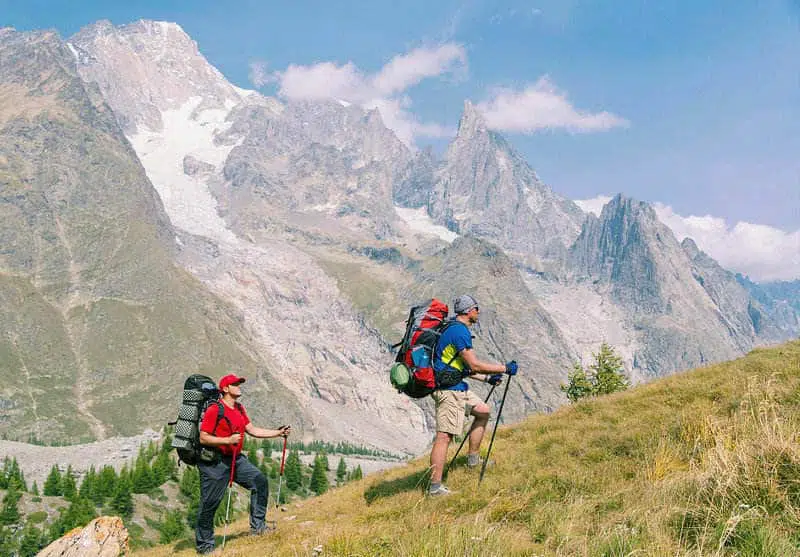
You can see the 7-day and 10-day TMB itineraries on our TMB Self-Guided Tour page.
We also offer the option of taking a rest day in the in the charming Italian village of Courmayeur , which is approximately halfway through the tour. Many hikers take this option and I highly recommend it, especially if you’re doing the 10-day itinerary.
For a truly epic experience, do our half-day guided glacier tour from Courmayeur, which will take you above the clouds and much closer to Mont Blanc than you get on the trail.
Cost of the Tour du Mont Blanc

Our self-guided hiking tours range from €1119 for the 7-day tour in dormitory accommodation to €1929 for the 10-day tour in private double accommodation.
You will find cheaper tour operators because some book refuges on the TMB that have 40 plus beds in a single dormitory room. We don’t use those accommodations as we don’t think it provides a good experience. And it definitely doesn’t provide a good night sleep!
For our private double rooms, we also have our favorite accommodations, and refuse to book some accommodations on the Tour du Mont Blanc because of cleanliness or service issues.
We also pride ourself on going the extra mile, and even provide an in-person briefing in Chamonix, something many other tour operators don’t do.
How Difficult Of A Hike is the Tour du Mont Blanc?
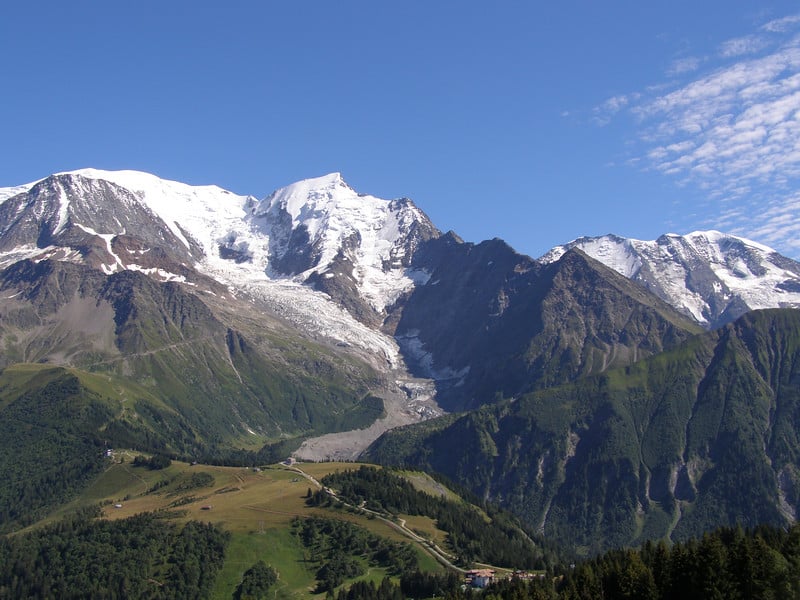
That really depends on your fitness and experience level when it comes to hiking.
If You’re Relatively New to Hiking
If you’re new to hiking and the TMB is your first long-distance hike, it’s a good idea to start with a 6 or 7-day tour because you hike less each day. Note you need to be active and exercising regularly, ideally hiking regularly. If you’re not already active, then you’ll find the TMB too difficult.
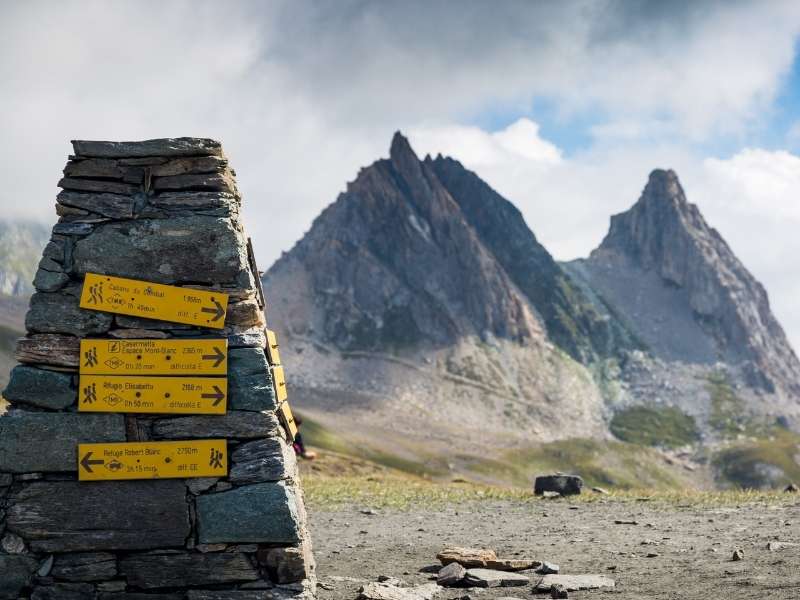
If You’re a More Experienced Hiker
If you’re in good shape, hike regularly and love a challenge, then the 10-day tour is an excellent choice for you.
Of course, you may be limited by vacation time. In that case, you could still choose a shorter tour, then opt to hike some sections instead of taking a transfer.
You can use these guidelines, even if you’re planning on doing it on your own.
Get Your FREE Guide to Hiking the
Tour du Mont Blanc
Get your Tour du Mont Blanc (TMB) Email Guide:
By subscribing your agree to our Privacy Policy . Your email will never be shared and you can unsubscribe at any time.
Tour du Mont Blanc Ladder Sections
There are 2 ladder sections on your Tour du Mont Blanc hike 1) Col des Fours near the Fenêtre d’Arpette and 2) the Aiguilles Rouges Range, which offers some of the most stunning views of the Mont Blanc massif.
They’re a series of metal ladders and cables to assist hikers in navigating the steep, rocky terrain. The ladders are secured to the rock face and offer a safe way to ascend or descend these more technical parts of the trail.
How Difficult Are the Ladder Sections?
- Physical Challenge: The ladder sections aren’t overly technical, however, they do require a head for heights and a bit of upper body strength, especially if you’re carrying a heavy pack. The exposure can be intimidating for some, but the ladders are well-maintained and sturdy.
- Mental Challenge: For those who aren’t comfortable with heights or narrow paths, the ladder section can be a bit daunting. However, if you take it slow and steady, it’s manageable for most hikers with a bit of experience.
Can You Avoid the Ladder Sections on the TMB?
Yes. You can avoid both ladder sections.
Col des Fours near the Fenêtre d’Arpette Ladder Section: This section can be avoided by taking the Bovine Route, which is much gentler and doesn’t involve as much elevation gain. Aiguilles Rouges Range: If you’re hiking to Lac Blanc, the ladder sections are not as exposed as those on the Col des Fours, Fenêtre d’Arpette section, so if you can do those, you’ll be fine on this ladder section. While it’s possible to avoid this ladder section, it’s admittedly harder to avoid if you’re taking the direct route from La Flégère. However, you can approach Lac Blanc from different trails that don’t require using the ladders. We can advise you on this on your in-person section.
However, the Aiguilles Rouges range, offers some of the most stunning views of the Mont Blanc massif, so if you’re up for the challenge, the views are amazing!
Tour du Mont Blanc Variant/Alternative Routes

On some days of the TMB, you will have the choice of an easier or more challenging route. On these days you choose based on how you’re feeling.
If you’re exhausted or your legs are burning, the best option is to choose the easier route. It’s important to challenge yourself on multi-day hikes without overdoing it. That can easily wreck the rest of your hike .
Weather on the Tour du Mont Blanc

It’s also critical to consider the weather. We had one day that I wanted to do the difficult but incredible Fenêtre d’Arpette (2665m), a splendid pass that’s one of the highlights of the tour.
Unfortunately, the heavy rain made it inadvisable, so we did the easier Bovines Route instead. It’s important to consider safety. Besides, if it’s raining heavily, you won’t be able to see anything. When you’re hiking in the mountains, it can quickly go from good weather to stormy.
I recommend getting an earlier start and taking a shorter lunch break on days when the forecast is calling for a thunderstorm in the afternoon.
When you hike in June, even late June and in September you’ll be hiking in snow in some places, so you should be comfortable with that.
This summer of 2023 was very hot, but then there was also snow at the end of August. You really need to be prepared to hike in all types of weather conditions.
Which Direction to Hike the Tour du Mont Blanc?
The classic Tour du Mont Blanc route is done counter-clockwise. The advantage of doing it this way is that you’ll keep running into the same people. If you want to hike with others, it’s easy enough to meet up.
If you prefer to hike more on your own, then choose to hike it in a clockwise direction, the opposite of how most hikers do it.
Terrain of the TMB
The TMB is well-marked. You’ll mainly be hiking through mountain passes and alpine meadows of wildflowers and lush green valleys. It’s an absolutely beautiful hike.
There are also two sections that involve ladders. Fortunately, both of these can be avoided with an alternative route.
Should I Get Travel Insurance?

YES! I hope you won’t need it, but mountain rescues are expensive – a minimum of €5000. And they can easily be much more expensive depending on your location and the complexity of the rescue.
I also recommend purchasing Travel and Trip Cancellation Insurance. You usually book your TMB trip months in advance, and while each accommodation has its own refund policy most of them aren’t very flexible.
I recommend HeyMondo (get a 5% discount for being a Monkeys and Mountains reader.) because it includes mountain rescue and repatriation insurance which isn’t covered by many other insurance policies. Check out our article on adventure travel insurance for further information.
Sometimes injuries aren’t life-threatening but if you tear a ligament, fall and break your ankle, you won’t be able to hike down on your own. It’s better to purchase travel insurance (being sure that it includes mountain rescue, and hope that you don’t need it.
How to Pack for the Tour du Mont Blanc
I’ve written a comprehensive post on this indicating every essential item while eliminating those that you don’t need. Check out our TMB Packing List !

Food on the Tour du Mont Blanc: Eating at the TMB Refuges/ Mountain Huts
Most mountain huts will offer a choice of two meals, a regular one and a vegetarian one.
If you have have other dietary requirements, such as being vegan or celiac as I am, there are creative ways to get around this, by suggesting alternatives that are easy for the accommodations to accommodate.
You’ll also want to bring plenty of hiking snacks to supplement the food being offered. We have a lot of clients with food allergies who are still able to do the TMB hike.
Breakfast on the TMB
A typical breakfast is toast with some butter or jam. None of the refuges had gluten-free bread. Instead, I requested a piece of fruit.
The breakfasts in the mountain huts are very light so if you like to eat a big breakfast I recommend bringing some energy bars with you.
Lunch on the TMB
I recommend ordering a packed lunch to go the night before from each hut. Although it’s usually possible to eat at a mountain hut en route, you may not arrive around lunch time, so ordering a packed lunch gives you more flexibility.
Despite being informed ahead of time, lunch was usually sandwiches which I couldn’t eat, so they substituted a few apples instead. Again, this is why I highly recommend bringing your own hiking snacks if you have dietary issues. Otherwise, you’ll be fine.
To Reserve or Not to Reserve Refuges on the Tour du Mont Blanc in Advance?
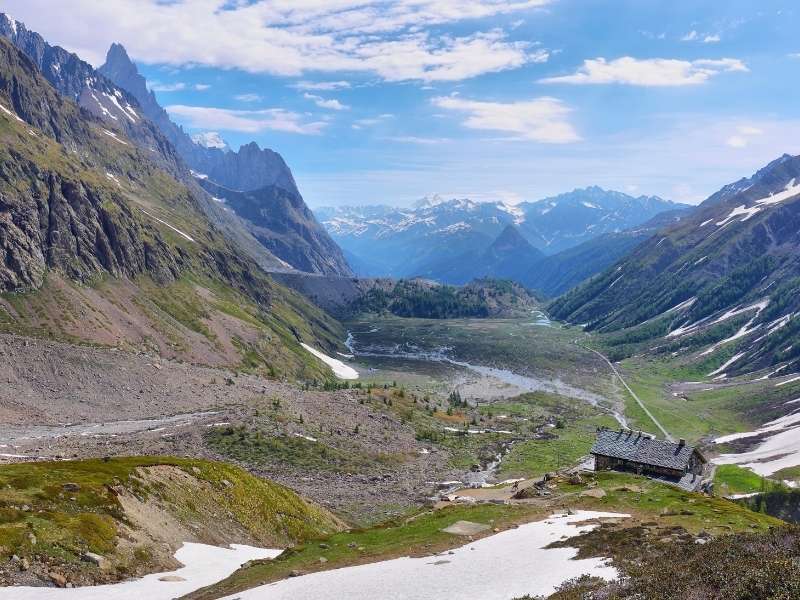
I highly recommend booking your tour or accommodations in advance because the TMB has become so busy.
In 2024, many mountain huts were already full in December And by mid-January, we had to stop selling some tours because key accommodations were full.
TMB Insider tip: If you don’t have reservations for a mountain hut, then try to get an early start and arrive early.
That way, you may get a spot before it does come full. But given how full the accommodations are, you should be prepared to camp if you don’t have a reservation.
What Are Accommodations Like on the TMB?

The mountain huts/refugios are a luxury in the mountain but VERY simple by normal accommodation standards. But they’re often in beautiful locations, like the Lac Blanc Mountain Hut pictured above, so you can enjoy the Alps after a day of hiking.
Dormitory accommodations vary anywhere from 4 to 40+ beds. I’d recommend avoiding anything with more than 20 beds wherever possible. (We don’t book these for our clients as we don’t think it provides a good experience).

Some mountain huts offer double private rooms. These will also be very simple, and you’ll still share a bathroom as the refuges usually have two bathrooms, one for women and one for men.
When you stay in a mountain hut, you’ll need to bring a sleeping bag liner. They’ll provide blankets and a pillow, so don’t worry about being warm enough.
A mid-option is booking private double accommodation. With this option, you’ll get a mix of sleeping in refugios and simple guest houses where you’ll have your own bathroom some nights.

If you’re looking for luxury, then you’ll want to book the 6-day luxury tour , which includes nice accommodations than staying in mountain huts. On this tour, you’ll have your own private bathroom every night except for one.
While the refuges aren’t luxurious, they’re often in a gorgeous setting. It’s also a great way to experience local culture and mix with other hikers from around the world. It’s truly an authentic experience.
Pamper Yourself at the Beginning and End of Your Trek

I stayed at Boutique Hôtel Le Morgane on the last day of my TMB trek. It’s a four-star eco-hotel in Chamonix, complete with a spa!
After staying in refuges, it was pure bliss. I sat on our huge patio, enjoying the amazing views of Mont Blanc, as we rested our blistered, aching feet. Trust me, on the final day; you’ll likely be tired, so it’s worth a bit of a splurge!
Pre and post-tour accommodation isn’t included, so check out our guide to the best accommodations in Chamonix to find out where to stay.
End Your TMB With a Once-in-a-Lifetime Mont Blanc Glacier Walk or Chamonix Via Ferrata
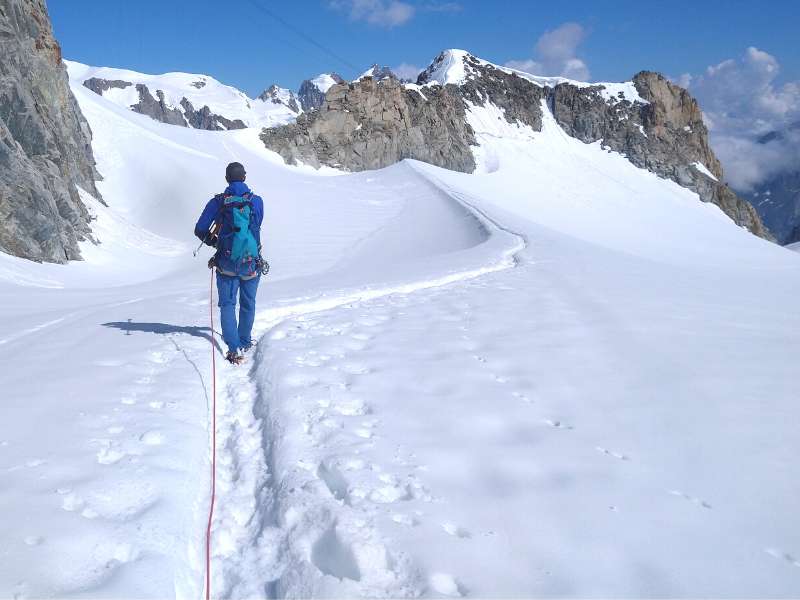
For a truly memorable end, embark on an extraordinary high-mountain adventure that takes you high above the Tour du Mont Blanc to explore the mesmerizing Mont Blanc glaciers , which takes you above the clouds on our private guided glacier tour.
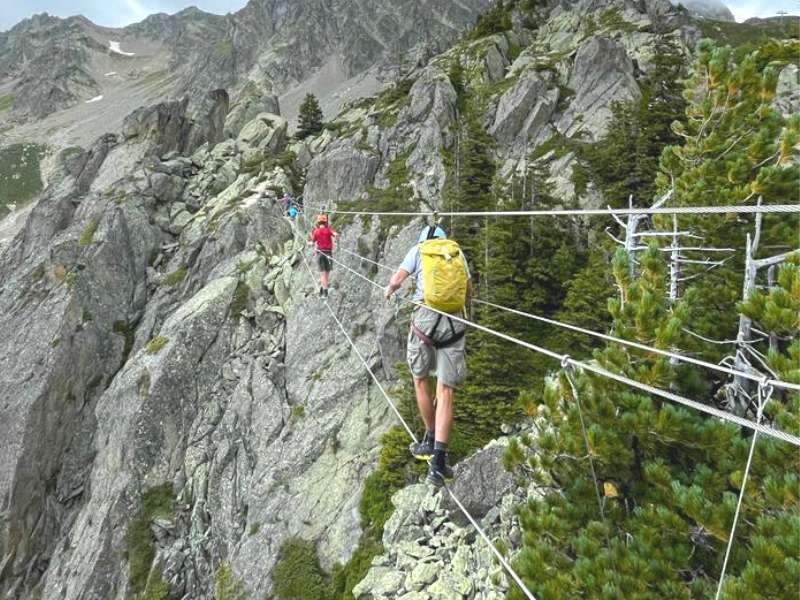
Or, do our guided Chamonix Via Ferrata tour , which combines hiking and rock climbing for an adrenaline-packed adventure. It’s totally safe, and your guide will help you along the route.
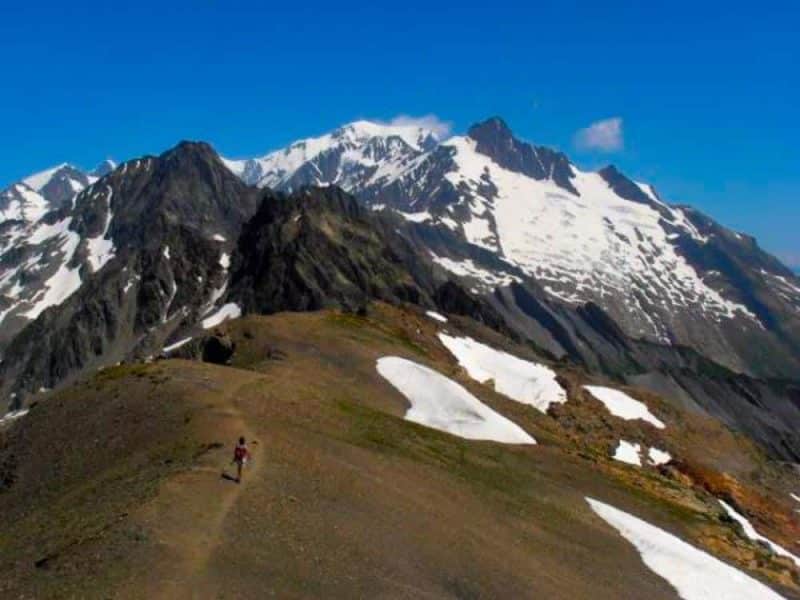
The Closest Airport to Chamonix
The closest airport is Genevan Airport. You’ll find great deals on Skyscanner.
Getting from Geneva to Chamonix

The easiest way to get to Chamonix, the start of the TMB is with a shared shuttle which takes ~90 minutes and needs to be booked in advance. Do a Google search for “transfer from Geneva to Chamonix,” and you’ll see lots of different options.
Or take this private transfer from Geneva Airport which starts from €29.97.
Read our guide: Getting from Geneva to Chamonix for more information.
I also recommend spending a day in Geneva if your schedule permits.

Related Reading: 10 Best Things to Do in Geneva, Switzerland, When You Only Have a Day
Check out this video of the Tour du Mont Blanc:
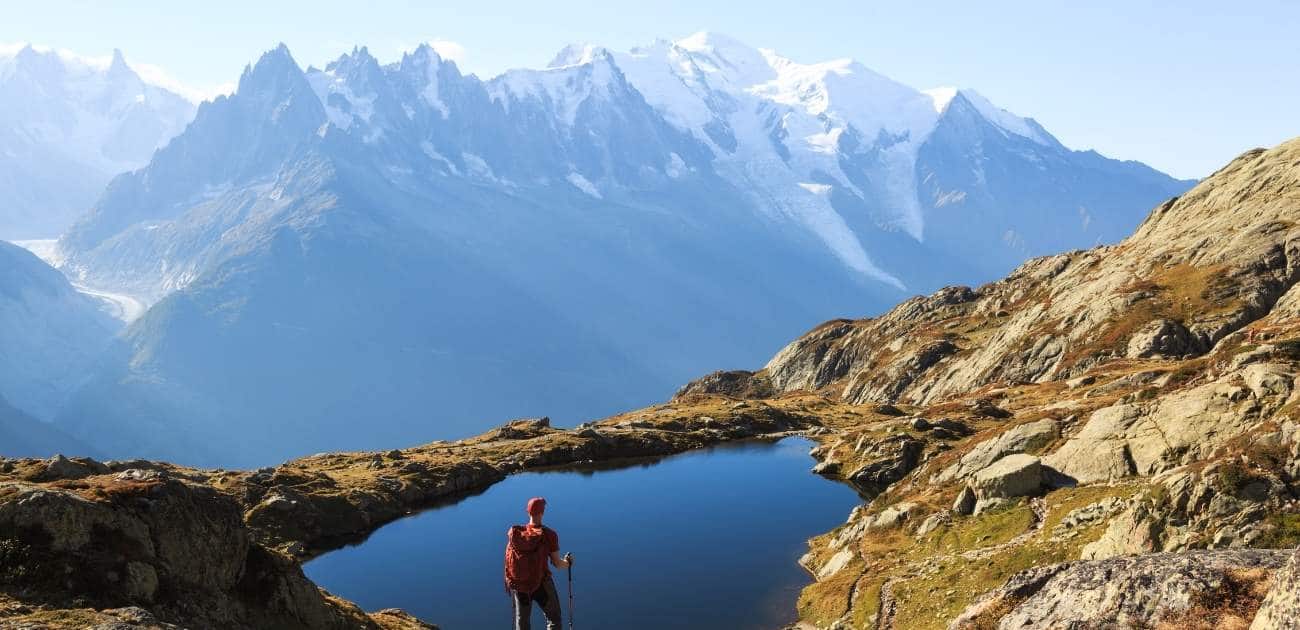
Check out our Mont Blanc Hiking Art:

Tour du Mont Blanc FAQs
Where does the tour du mont blanc start & end.
Our 6 & 7 day tours start in the village of Les Houches. Our 10-day tour starts in Chamonix. All of our tours end in Chamonix.
What should I pack for the Tour du Mont Blanc?
See our packing list , which also includes my favourite small luxury item that I bring on every trek. You can also shop our packing list directly on Amazon.
Is the Tour du Mont Blanc Worth It?
Absolutely! I enjoyed most of it. I don’t believe anyone who says they enjoyed every second of the TMB. There are some tough parts! Even better, it left me a lasting gift that is still giving. The gift of personal strength, both on and off the mountain. Little did I know that it would start an obsession with long-distance hiking. I now do at least one long-distance hike each year. Check out How a Hiking Trip Can Change Your Life .
Is the Tour du Mont Blanc crowded?
It’s getting busier every year and there are an estimated 20,000 hikers each year. The busiest times tend to be the first week in July and the last week in August when the TMB ultra are held. Having said that, while it’s a bit crowded at the start of each day with hikers leaving at around the same time, it starts to thin out pretty quickly as everyone hikes at a different pace. I recommend booking as early as possible so that you can start on your preferred date. Avoid doing it the last week in August as it’s very crowded then.
How technical/difficult s the Tour du Mont Blanc?
It’s not a technical hike, but it is physically demanding. You’ll be hiking on a mixture of paths and rugged terrain, but no technical skills are required. Having said that, avoid doing it in June or mid-September if you’re not comfortable hiking in snow.
How many miles/km is the Tour du Mont Blanc?
It’s 106 miles or 170km.
Is it possible to hike the Tour du Mont Blanc in June?
Yes, it’s possible from mid-June, but I think late June is a safer bet since the amount of snow varies each year. Having said that, some years the high passes aren’t possible at the end of June either due to too much snow. If you don’t want to hike in snow, then book mid-July-mid-August.
Is it safe to hike the Tour du Mont Blanc solo?
Yes. The Alps are generally considered safe. As a woman, I’ve also hike part of it alone and felt very safe. Plan to stay in dormitory accommodation since otherwise you’ll pay the price for a double room, as a solo hiker, which significantly increases the cost.
When’s the best time to hike the Tour du Mont Blanc?
It’s possible to do it from mid-June to mid-September but I think the best time is July and August because you’ll likely be able to do all the high passes – which isn’t always possible due to too much snow earlier in the season. Plus, all the transfers are running, which makes it cheaper than having to book private transfers if you’re doing the 6 or 7-day tour .
Is luggage transfer available on the Tour du Mont Blanc?
Yes, we offer this for clients that book one of our tours.
When is the TMB Ultramarathon?
There are a series of 7 races usually held from ~ Aug 22nd to 28th (depending on the year). Hikers should avoid going during this time as it’s very busy.
What are the best tips for doing the Tour du Mont Blanc?
I think the two big factors to consider are 1) What type of accommodations do you want? Luxury, private double or dormitory? and 2) How challenging do you want to make it? Then, design your trip around these factors as outlined in this article.
Will I get altitude sickness?
The highest point on the TMB is the Fenêtre d’Arpette (2,665 meters (8,743 feet). Anything below 3,000 meters is usually too low to cause altitude sickness for most hikers.
The TMB is not a high altitude trail so doesn’t pose the challenges that some other famous treks do.
Will I climb Mont Blanc?
No. Climbing Mont Blanc Massif involves mountaineering. Instead, you’ll hike around the 4809 m (15,771 foot) mountain. But don’t let that fool you, it’s still tough and not for beginner hikers .
Is it possible to camp on the TMB?
Yes – it is possible to camp or bivouac in villages along the Tour du Mont Blanc. However, there are strict regulations. Due to private land, protected reserves, and challenging terrain, only a few spots along the trail are suitable for bivouacking.
Campgrounds vary in facilities, with prices ranging from 10-25 EUR per night. However, some villages don’t have campgrounds, so you may need to detour a few kilometers extra to find a camping spot.
Ready to Book Your Tour Du Mont Blanc Hike?
Choose from one of our self-guided TMB tours below. Or contact us with any questions you have.
Now that you’ve explored our Tour du Mont Blanc guide, you’re equipped with routes, tips, and the details you need—time to start planning your TMB hike.


- Trip Finder
- Newsletter Signup
- Request a Call
- Crete Sea to Summit
- Best of the Swiss Alps
- Exploring The Jungfrau
- Italian Dolomites
- Best of the French Alps
- St Moritz to Italy
- Exploring Croatia
- Italian Lakes Discovery
- Best of Slovenia and the Julian Alps
- Tour of the Giants
- Italian Dolomites Alta Via 1
- Chamonix-Zermatt Haute Route
- Deluxe Haute Route
Deluxe Tour du Mont Blanc
- Via Alpina - Swiss Alpine Route
- Deluxe Bernese Oberland Traverse
- Eiger to the Matterhorn
- England Coast to Coast
- Scenic Alps by Rail
- Cheese, Chocolate, & the Alps
- Self-Guided - Scenic Alps by Rail
- Self-Guided- Glacier Express
- Christmas in Switzerland
- Scenic Alps by Rail - Christmas Edition
- Self-Guided Haute Route
- Self-Guided Tour du Mont Blanc
- Self-Guided Jungfrau
- Self-Guided Via Alpina
- Self-Guided Bernese Oberland Traverse
- Self-Guided Eiger to the Matterhorn
- Self-Guided Swiss Alps
- Self-Guided Austria Zillertal Alps
- Private Guided and Custom Trips
- Appenzell -Alpstein Range
- Zermatt and the Matterhorn
- Leukerbad -Thermal Hot Springs
- Principality of Liechtenstein
- Saas-Fee - Pearl of the Alps
- Tour Calendar
- Where We Stay
- How We Travel
- FAQ – Alpenwild Experience
- FAQ - Tour du Mont Blanc
- FAQ - Haute Route
- FAQ - Alps Hiking Tours
- FAQ- Scenic Alps by Rail Tour
- A Self-Guided Tour FAQ
- Self-Guided FAQ - Haute Route
- Self-Guided FAQ - Tour du Mont Blanc
- Self-Guided FAQ - Rail Tours
- Travel Agents + Alpenwild
- Why You'll Love The Alps
- Packing List – Alps Trekking Tours
- Packing List – Alps Hiking Tours
- Packing List – Alps Walking and Sightseeing Tours
- Packing List - Winter Tours- Christmas in Switzerland
- Weather In The Alps
- Haute Route Essentials
Tour du Mont Blanc Essentials
- Is a Self-Guided Trip for me?
- Car Travel in Switzerland
- Maps & Books
- Book Your Trip
- Make a Payment
- Sustainability Commitment
- Why Choose Alpenwild
- The Alpenwild Story
- Guides and Trip Leaders
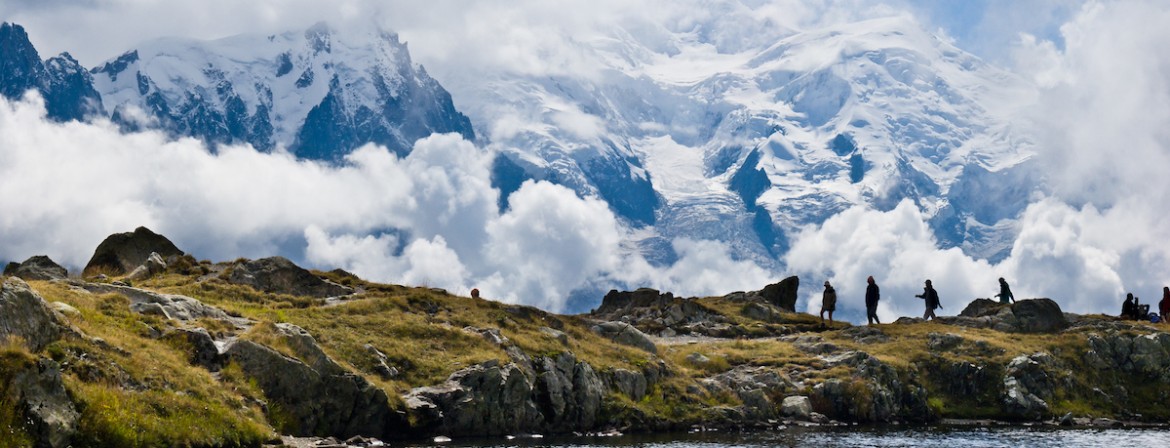
Enjoy spectacular scenery—glaciers, waterfalls, plunging valleys—on a classic trek around the highest peak in the Alps
From atop Aiguille du Midi cable car (téléphérique) station, Chamonix, France. Photo by Tom Dempsey

Testimonials
From the actual trip, planning, food, accommodations, and leadership provided by our guides, everything was excellent; including the helpfulness of your staff in the US. - T. H. - California
The Most Popular Trek in Europe—Perfected
The Tour du Mont Blanc (TMB) is the classic hike, circling Western Europe’s highest peak. It combines inspiring mountain scenery with cultural vibrancy in the alpine regions of France, Switzerland, and Italy, and their distinct yet intertwined cultures. No wonder it's the most popular trek in Europe.
No Shortage of Stunning Alpine Scenery on the TMB
It’s a challenging route, to be sure, but you’ll hike with just a light daypack, and in the company of an expert Alpine hiking guide. On our route we skirt some of the most impressive glaciers in the Alps; we wind our way through deep-cut canyons, and pass characterful alpine villages. Every day offers spectacular scenery and extraordinary mountain landscapes.
Accommodations Others Only Dream of. Fully Supported
What sets this itinerary apart from any other is our choice of superb accommodations. We avoid the overcrowded huts, gites, and auberges and stay in 3- and 4-star hotels (with one 2-star hotel) with private ensuite bathrooms. Most have a pool and spa facility that you'll be able to enjoy. Additionally, our trip is fully supported by daily luggage transfers, so you will have clean clothes waiting for you at each hotel!
As with every Alpenwild trip, we seek out exceptional cuisine, which in this region means homey Savoyard dishes—potatoes draped in melted mountains of cheese, aromatic sausages, and crusty breads. We’ve searched out and uncovered some of the finest accommodations along the route—including hand-picked hotels and mountain inns, not offered by other operators. Many of the daily details of our route are exclusive to the Alpenwild experience.
Premier Alpine Resorts and Charming Hamlets
Our route includes a 2-night stay within the medieval town of Courmayeur, Italy. In Chamonix we stay in a 4-star in the pedestrian heart of this favorite mountain resort. And in the quaint villages in Alpenwild’s home base of Switzerland you’re sure to have an experience like none other.
The annual UTMB race takes place in the last week of August or the first week of September. To ensure the safety and enjoyment of our guests, we may need to adjust certain routes and planned activities during this time, as the trails can become heavily trafficked with racers and their fans.
Trip Videos
Overview Itinerary
Day 1 – Arrive Geneva. Transfer to Chamonix
Day 2 – Depart Chamonix. Les Houches to Les Contamines-Montjoie
Day 3 – Contamines to Les Chapieux, Bourg-Saint-Maurice
Day 4 – Ville des Glaciers to Courmayeur
Day 5 – Courmayeur Rest Day
Day 6 – Courmayeur to Lavachey
Day 7 – Lavachey to Champex-Lac
Day 8 – Champex-Lac to Trient (Argentiere)
Day 9 – Trient to Argentiere
Day 10 – Argentiere to Chamonix
Day 11 – Day in Chamonix
Day 12 – Depart Chamonix
$6,995 USD per person double occupancy
$1,195 single supplement
Reserve your place on this tour with a $500 per person deposit
07 September 2024 - 18 September 2024 Sold Out
23 June 2025 - 04 July 2025
30 June 2025 - 11 July 2025
07 July 2025 - 18 July 2025
14 July 2025 - 25 July 2025
23 July 2025 - 03 August 2025
27 July 2025 - 07 August 2025
28 July 2025 - 08 August 2025
04 August 2025 - 15 August 2025
11 August 2025 - 21 August 2025
23 August 2025 - 03 September 2025
26 August 2025 - 06 September 2025
01 September 2025 - 12 September 2025
05 September 2025 - 16 September 2025
06 September 2025 - 17 September 2025
Or, book a private departure
Trip Highlights
- Follow the classic circuit around Western Europe’s highest peak as you cross the borders of Italy, Switzerland, and France
- Experience excursions like the Aiguille du Midi, the highest vertical ascent cable car in the world, or the Skyway Monte Bianco (weather dependent)
- Enjoy the trek to its fullest as you hike with just a light daypack while your luggage is transferred to the next inn, each evening
- Savor the best of rich Savoyard cuisine: hearty tartiflette, bubbling fondue, aromatic raclette and smoky sausage
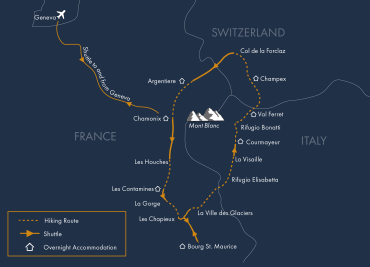
You May Also Enjoy
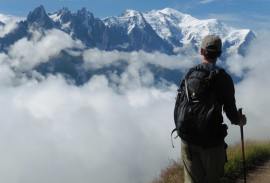
Best TMB Tour
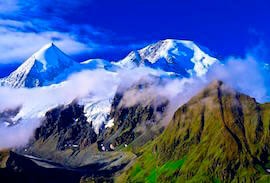
Tour du Mont Blanc vs the Haute Route
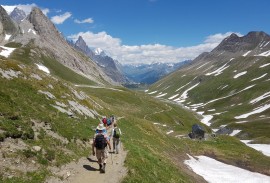
Tour du Mont Blanc FAQ
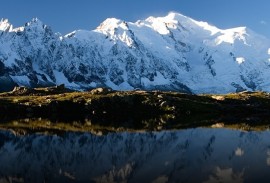
Sign Up for Our Email Newsletter
Stay up to date on the latest Alpenwild news. You're free to opt out at any time. See our Privacy Policy .
See our Privacy Policy .

- Altitude trekker
Science | Must-know weather tips for the Tour du Mont Blanc season
Updated: Jun 17
The Tour du Mont Blanc (TMB) is a hiking route that is unanimously recognized by mountaineers as one of the world's top 10 classic hiking routes, and has been named one of the world's top 20 Dream Trails by National Geographic. With a total length of 160 kilometers around Mont Blanc, it is important to choose and prepare your equipment before embarking on the Tour du Mont Blanc.
Tour du Mont Blanc Hiking Guide: Weather Insights
环勃朗峰徒步指南:天气篇.
During the summer months of the Tour du Mont Blanc trek, from June to September, each month displays unique climatic characteristics that determine the weather conditions the trek will face. Choosing a different month means experiencing different climatic variations, from cool and dry to warm and humid, offering a wide variety of challenges and scenic views.

Summer Weather Guide: Different Months

Late May is usually the earliest time for the Tour de Mont Blanc to begin, with global warming, more and more people are starting to trek the Tour de Mont Blanc in May, and with the high Alpine passes often still covered in snow, this time of year the Tour de Mont Blanc trek tends to offer an extra challenge, and a different kind of view on the journey.

The climate is usually quite dry and cool for a June trek around Mont Blanc, with valley temperatures usually around 18°C (64°F). In mid-June, the climate starts to get hotter. One of the most important things you can't miss in the Alps in early June is the mountain flowers that cover the mountains, and again, everything is in season. If, for example, you want to see a sea of flowers, or if you are a plant lover, this month is not to be missed.

As July approaches, the valley will see a significant rise in temperature, with afternoon showers and thunderstorms gradually becoming part of the landscape on the hike. The average temperature in the valley during this period is around 21°C (69°F), providing an extra challenge and variety to the hike. The Tour du Mont Blanc hike at this time has the warmth of summer and hides the coolness of the mountains, providing a colorful and natural experience for hiking adventures.

August is the hottest month during the Tour du Mont Blanc trek, with valley temperatures sometimes exceeding 30°C (86°F). Such high temperatures make August often the month with the most precipitation. The risk of afternoon showers and thunderstorms is extremely high during this period, and trekkers need to pay particular attention to the weather forecasts and prepare their equipment accordingly to cope with possible changes in the weather and to ensure a safe trek.

By September, temperatures begin to drop again and the frequency of storms decreases. September is actually the driest month of the Tour du Mont Blanc trek! This provides hikers with more stable climatic conditions, and as a result, mid-September is an ideal time to explore the beauty of the Tour du Mont Blanc as it enters autumn in Mont Blanc relative to the other months, with the leaves of the mountain trees slowly turning yellow and a riot of color throughout the Mont Blanc massif.

Early October is the end of the Tour du Mont Blanc trekking season, which generally avoids encounters with hordes of other trekkers and makes it easier to see more wildlife, while the climate turns relatively cooler, and the views out into the distance at higher altitudes offer magnificent views of freshly snow-covered Mont Blanc.

Summer Weather Guide: Safety Instructions

Hazard Risks
Typically, during the Tour du Mont Blanc, showers are more likely to occur in the evening. At this time, everyone is usually safe in their evening accommodation. However, the weather in the mountains is changeable and clear weather can suddenly change with very short warning. Therefore, it is very important to be prepared. Always make sure you have a high quality waterproof jacket, and a highly waterproof backpack before your trek.

During the Tour du Mont Blanc trek, you may climb 1000 meters in a day. Typically, the temperature in the valleys is much warmer than the temperature higher up. Therefore, make sure you have warm clothing that is easily accessible before you set off. It is advisable to keep them on top of your rucksack so that everyone can add clothing to keep warm if they feel cold. A warm hat is also a necessity, and we also recommend bringing a pair of thick gloves. Other extreme weather such as lightning, flash floods, fog, snow, etc. may be unpredictable, and you should listen to your guide and may need to take immediate safety measures.

The vast majority of Tour du Mont Blanc trekkers successfully complete the entire challenge. However, there are always objective dangers in the mountains, so it is recommended that everyone, whether you are a casual hiker or with a group, should be aware of the do's and don'ts to ensure your safety during the Tour du Mont Blanc.
Plan Each Day

For clients who sign up for our Altitude Trekker customized tours, the guides will make daily flexible adjustments according to the weather, everyone's fitness and physical condition, and do a scientific and reasonable physical planning, so that everyone can get the best hiking experience. For free-traveling clients, it is recommended to record the daily route data, distance and altitude. Do not overestimate your own or your group's physical fitness. Make sure you have enough time to descend safely. Re-evaluate yourself or your group at the end of each day.

Check the weather forecast

Check for weather warning information as often as possible. The easiest way to do this in a small town is to check the weather forecast online. Alternatively, check the weather with the tourist information center. At the high altitudes of the Tour du Mont Blanc, there is generally no signal. Most alpine huts will have weather forecasts displayed in the restaurant area. If you don't see one, ask the hut staff. During the trek, it is advisable to keep an eye out for signs of deteriorating weather. If you notice that the weather is deteriorating, it is best to return or wait for the weather to improve, and never venture into unknown and dangerous areas.

Avoid lightning
Generally, if the weather forecast indicates storms in the late afternoon, the guide will lead an early departure. This is because thunderstorms can usually be avoided through good planning. However, if a thunderstorm occurs during the hike, be sure to avoid mountain passes and exposed ridge areas. During this time, do not leave the forest or hide under rocks. Instead, you should immediately remove your backpack and kneel on it, which will keep you isolated from the ground. Keep your head down and your hands on your knees. If you are using a walking stick, make sure you place it on the ground and remember not to hold any metal objects.

Carry a first-aid kit

We recommend that everyone carry a good first aid kit, including Band-Aids, blister patches, alcohol wipes, and bandages that can be used for cuts or to immobilize sprained ankles. We also recommend packing an insulating blanket. During the hike, you can pay more attention to your own and your teammates' fatigue or discomfort. Typically, as you gradually gain altitude, you will experience some physical discomfort. We recommend that you take some basic first aid training for yourself or your team members before the hike.

Accident protocol

If an accident occurs, move the injured person to a safe location, immediately put on warm clothing and wrap the injured person with an insulating blanket to maintain his or her body temperature. If you have cell phone reception, call 112 immediately. This number is available in France, Italy and Switzerland. There may be no cell phone reception in some areas of the Tour du Mont Blanc. For trekking groups, the guides take the fastest professional emergency measures to achieve the best possible first aid treatment.
Official Website Registration
Visit our official website to enroll now and view product details, space is limited, book quickly.
https://www.altitudetrekker.com

Part of the picture from the network
Article original, unauthorized reproduction is strictly prohibited
Reprint authorization please contact WeChat: maxiaoxue371932
Recent Posts
Recommendation | Tour du Mont Blanc: An Essential Journey through World-Class Mountains
Recommended | Great Places Around Chamonix: Gaillands Adventure Park (Accro'Park des Gaillands)
Recommendation | The Stunning Hike at Tour du Mont Blanc White Lake Segment

COMMENTS
Tour du Mont Blanc summer weather conditions. From late June to the end of August it will be hot in the valleys and temperatures will be between 20°C and 30°C but these can drop to 10°C at night. At higher elevations the temperature will become cooler and this can be exacerbated by cool winds. Occasional cold fronts will bring cold, wet ...
Discover our spring Tour du Mont Blanc trips. Beautiful crocuses in bloom on top of Prarion Mountain looking out towards the Mont Blanc Massif. Photo by Jennifer Stretton Best time for warm weather on the TMB. July and August are the hottest months of the year. In July, the average temperature is between 13 and 26C (55 - 79F).
September is a good time to hike the Tour du Mont Blanc, as long as you're happy to hike in cooler, but not chilly weather. The average temperature range for September is 9 - 21C (48 - 70F). By September school holidays will be over for most, so the trail will be noticeably quieter, and rainfall figures for the month are fairly typical, an ...
The best time to hike the Tour du Mont Blanc is between June and September. July and August are peak months, meaning a busier trail but fantastic weather. Mont Blanc's summer months boast lush greenery cloaked with wildflowers, attracting a range of adventurers. However, the pretty scenery comes with a price— congested trails and ...
Online Weather Forecasts. The TMB Classic Route passes through 3 different countries (France, Italy, Switzerland). This can be confusing when trying to find an up-to-date and accurate weather forecast. Here are the online forecasts that we use, and that we find the most accurate : France: Chamonix - Meteo.
Mont Blanc Weather (Days 0-3): The weather forecast for Mont Blanc is: A moderate fall of snow, heaviest on Sun night. Temperatures will be below freezing (max -4°C on Sat morning, min -6°C on Mon morning). Wind will be generally light. ... Col du Joly. 24 km SSW. 2110 m alt.
Wed, September 4 - 59 degrees/rain. Thu, September 5 - 70 degrees/partly cloudy. Fri, September 6 - 75 degrees/partly cloudy. One of Europe's best-known hikes. This hike comprises several segments in France, Italy and Switzerland. The 11-day walk around Mont Blanc is clockwise. There are plenty of accommodation options along the way.
The Tour du Mont Blanc is one of the most popular treks in Europe. It covers a distance of roughly 170 kilometres and gains more than 10,000 meters of altitude over 11 stages. In this guide we cover: what weather to expect and the best time to hike the Tour du Mont Blanc, which huts to book, what gear you might need, and much more...
Tour du Mont Blanc is one of the most popular long distance hiking trails in the world. The incredible thing about Tour du Mont Blanc is that you'll hike through France, Italy, and Switzerland as you loop your way around the Mont Blanc Massif. The entire journey covers 170km (106m) and gains roughly 10,000m (33,000ft) of elevation.
About the Tour du Mont Blanc. The Tour du Mont Blanc (TMB) is a 170-km trek that circles the Mont Blanc massif. The route is traditionally walked in the anti-clockwise direction over 11-stages. The TMB starts and finishes in the French village of Les Houches, which sits adjacent to the popular mountain town of Chamonix.
Mild weather and pleasant temperatures in this period of mid-June. The snowfields are rapidly melting. To date, we have had a few passages of hikers on the TMB, and accompanied groups are on the way. ... Conditions July 8th 2021 ... This information and exhibition space for all the hikers who walk the Tour du Mont-Blanc, every summer welcomes ...
The Ideal Window: June to September The best time to trek the Tour du Mont Blanc spans from June to September, offering a diverse range of experiences as the seasons progress. During this period, hikers can enjoy milder temperatures, lush alpine meadows, and the spectacle of blooming wildflowers. Each month within this window presents distinct ...
Walker's Haute Route Trail Conditions July 2024. TMB Trail Update Col du Brevent. TMB trail update 10 July 2024 ... Competition 2020. Competition 2019. Competition 2024. Trail Conditions Season 2024 See our News Page. Tour du Mont Blanc Trail Conditions Full Report 16th June 2024 ... Also gain some height and some great views of the Majestic ...
Average temperatures on the Tour du Mont Blanc. From late June to the end of August it will be hot in the valleys and temperatures will be between 20°C and 30°C but these can drop to 10°C at night. At higher elevations the temperature will become cooler and this can be exacerbated by cool winds.
In June, the average high in Chamonix is 68 F and the average low is 48 F. The average high temperature during both July and August in Chamonix is 72 Fahrenheit, with an average low of 52 F. The average high in September is 66 F and the average low is 48 F. The TMB ranges in elevation from around 3,500 ft in Chamonix to 8,323 ft on the Grand ...
Tour Du Mont Blanc Circuit. The Tour du Mont Blanc (TMB) is a renowned circuit that guides you through three countries—France, Italy, and Switzerland—encompassing approximately 170 kilometers of trails. Starting from Chamonix in France or Courmayeur in Italy, you could complete the loop in about 11 days, with stops in charming locales such ...
The Tour du Mont Blanc is different. All eyes are on the trail come June to see when the paths are cleared of snow, enough for hikers to get out there and walk. Mid-June is the most accurate start date anyone can give and similarly, the first couple of weeks in September is when it is likely to close down. It is recommended to book your trip ...
Mont Blanc, Western Europe's highest mountain, is 4.808 meters above sea level, making its altitude one of the greatest and most challenging ones. However, as we have previously mentioned the Tour De Mont Black does not involve ascending to its top. In fact, the highest peak along the standard route is 2.537 meters above sea level, which is ...
The Tour du Mont Blanc is a long-distance hiking trail (GR) that circles the Mont Blanc massif, the highest peak in Western Europe. This iconic hike traverses three countries - France, Italy, and Switzerland - and offers a unique experience in the heart of the Alps. With a total elevation gain of 10,000 meters, a distance of 170 km, and ...
Hiking Details: 5 hours, 950 m (3117 ft) ascent, ~ 10.5 km (6.5 miles), plus transfers. You can see the 7-day and 10-day TMB itineraries on our TMB Self-Guided Tour page. We also offer the option of taking a rest day in the in the charming Italian village of Courmayeur, which is approximately halfway through ...
The Tour du Mont Blanc (TMB) is the classic hike, circling Western Europe's highest peak. ... 04 July 2025. 30 June 2025 - 11 July 2025. 07 July 2025 - 18 July 2025. ... or the Skyway Monte Bianco (weather dependent) Enjoy the trek to its fullest as you hike with just a light daypack while your luggage is transferred to the next inn, each ...
6月. The climate is usually quite dry and cool for a June trek around Mont Blanc, with valley temperatures usually around 18°C (64°F). In mid-June, the climate starts to get hotter. One of the most important things you can't miss in the Alps in early June is the mountain flowers that cover the mountains, and again, everything is in season.